
How to Plan an Udawalawe National Park Safari
By: Author Lora Pope
Posted on Published: September 17, 2018 - Last updated: April 15, 2024
This post may contain affiliate links. By clicking and making a purchase through the links, I earn a small commission at no extra cost to you. See my disclaimer for more information. This and display ads allow me to keep the site up to date and give back .
Sri Lanka is one of my favorite countries to date. The country has so much to offer visitors, including an abundance of incredible wildlife.
Considered one of the top spots for biodiversity in the world, going on a safari is a must-do on your Sri Lanka Itinerary . This guide will help you plan an epic Udawalawe safari, one of the best parks for elephant safaris in Sri Lanka.
Why visit Udawalawe National Park
There is no better way to see an animal than in its national habitat. With the highest density of wild Asian elephants in the world, Sri Lanka provides an excellent opportunity to see these magnificent creatures.
However, you still need to be careful when choosing where to go on an elephant safari in Sri Lanka, as there are parks and “orphanages” that engage in abusive and harmful practices. Pinawalla Elephant Orphanage is an example of this. Avoid any places that engage in elephant riding.
Despite this, Sri Lanka has done a fantastic job of protecting its wildlife while still making it accessible to tourists through the country’s national park. Udawalawe National Park Safari is an excellent example of the countries efforts to protect wildlife.
Established in 1972, it has become a sanctuary for wild elephants displaced by the construction of the Udawalawe Reservoir.
Udawalawe has become a critical habitat for Sri Lankan elephants and other wildlife. Covering over 309 square kilometers of wilderness, Udawalawe is the perfect place to go on an elephant safari in Sri Lanka.
An Udawalawe safari will allow you to immerse yourself in the beauty of the country while getting up close and personal with wildlife in an ethical way.

Udawalawe Vs. Yala National Park
Yala National Park and Udawalawe National Park are two of the most popular parks in Sri Lanka for wildlife. Both have their pros and cons, so here is some information to help you decide on Udawalawe vs. Yala.
One big con of Yala is that it is closed off for six to eight weeks each year, usually starting at the beginning of September. This year’s closure happened to coincide with the month I was in Sri Lanka, so I only had the option to visit Udawalawe. I’m glad it worked out this way because I loved my Udawalawe safari.
Another benefit of an Udawalawe safari over Yala is that it’s much less busy. Yala National Park is the most visited national park in Sri Lanka and one of the most touristic places. You are going to be sharing the animals with a lot of other jeeps.
While Udawalawe is the third most visited park in Sri Lanka, there are significantly fewer people here compared to Yala.
A safari at Udawalawe is also cheaper than Yala. Both parks have an entrance fee of $15 USD, but you must hire a jeep and guide, which is more expensive at Yala. The cost will depend on your ability to negotiate. On average, a jeep and guide cost $30-35 at Yala for a half-day safari and around $20-25 at Udawalawe.
In terms of wildlife, Udalawe is better for seeing elephants. It has the highest concentration of Sri Lanka elephants in the country and is about 1/3 the size of Yala, so your chances of seeing elephants are very high here.
If you want to see a leopard, then you should visit Yala. The park has the highest concentration of leopards in the world, with over 40 roaming the park. Yala is world-famous for its leopard sightings, but if you don’t get the chance to visit, another place to see leopards in Sri Lanka is Wilpattu National Park.
They are both amazing national parks and if you have the time, you could visit both as they relatively close. You can even book a 1-day tour for Yala and Udawalawe National Park!
How to get to Udawalawe National Park
Most people stay at an eco-lodge or glamping option just outside the park in Udawalawe. However, it is possible to visit as a day trip from another place on the South Coast of Sri Lanka. The easiest way to get there is by hiring a private driver , but it is also possible to take local buses to the town of Udawalawe.
From Weligama: I arranged a day tour from Weligama while I was there on a surf camp , which meant we had to wake up at 5 am to for a three-hour drive to the park. On the flip side, I didn’t have to spend any money staying in the park. You could also take the bus here, but it would take much longer and several transfers (Weligama -> Mirissa -> Matara -> Embilipitiya -> Udawalawe).
From Colombo: Udawalawe national park is a five-hour drive from Colombo via public transit. There is a local bus that will take you there (#122, but always ask for most updated info), so if you get up bright and early from Colombo, you could make it for an afternoon safari. However, there would not be time to get back the same day, so you would have to stay nearby the park.
From Ella: To reach Udawalawe from Ella, you will have to take three busses (Ella -> Wellawaya -> Thanamalwila -> Udawalawe), so I would not recommend trying to fit in a safari on the same day as your travel. From Ella, you can take Sri Lanka train onwards to Nuwara Eliya or Kandy .
Udawalawe Hotels
There are plenty of hotel options to stay near Udawale National Park, including some pretty awesome looking tented safari camps right in the park.
How dreamy, sleeping next to the elephants! There are also some cheap guesthouses to stay at for less than $20/a night. I loved staying at guesthouses in Sri Lanka, the locals are so friendly and truly make you feel at home.
Find the best prices on accommodation in Udawalawe here.
Udawalawe Safari Resort
Udawalawe National Park Entrance Fees + Safari Prices
The entrance fee to Udawalawe National Park is $15 USD per foreign adult or equivalent in Sri Lanka Rupees. For locals, the price is Rs. 60.00. Children are $8 USD.
You will need to book a jeep to take you on a safari through Udawalawe National Park. The price to rent a jeep is the same regardless of how many people you have in it, so it’s cost-effective to go with a larger group.
We organized the tour in advance through the surf school and paid 5,500LKR/30 USD each (we were a total of six people). The price included our entry ticket into Udawalawe, transportation back and forth from Weligama, and a private jeep. Like most things in Sri Lanka, always try to negotiate the price.
You can book your Udawalawe safari online in advance. You can also show up at the park and negotiate a jeep/guide there, which should cost you between $20-25 USD for a half-day safari, or between $45-65 USD for a full day safari. Tips for the driver are discretionary. We all tipped our driver as he was so knowledgeable about the animals and excellent at spotting them.
Udawalawe Opening Hours and Safari Timings
Udawalawe National Park is open between 6 am – 6 pm. The best time to visit the park is early in the morning or late in the afternoon as the animals are most active during this time. They tend to hide from the sun mid-day.
If you stay near the park overnight, you can get up early for the first tours of the day, which will increase your chances of seeing wildlife. Plus, you’ll get to see a beautiful Sri Lanka sunrise. The timing of the safaris are usually 6-9 am and 3-6 pm.
Best time to visit Udawalawe National Park
Udawalawe National Park is open year-round, and whether you go in the wet or dry season, you will surely have a wonderful experience.
The dry season runs from May-September in this part of Sri Lanka. The dry season is a good time for safari because the lack of water means elephants will gather at the reservoirs, making them easy to spot. During the wet season, From October- April, the vegetation will be much lusher, and the chances to see baby elephants are significantly higher. Awww!
What to expect on a Udawalawe Safari
The safari jeeps are massive with open sides, so regardless of where you sit, you will have a good view of the surrounding scenery and wildlife. I was in the back of the jeep and still had amazing views.
You aren’t allowed to get outside of the vehicles (for safety), but they are huge, so there’s lots of room to move around and take photos.
Once you get inside the park, the jeep will drive to the ticket office so you can pay the park entrance fee. If you booked a tour and paid this in advance, the driver will just get the tickets for everyone.
The jeep ride through the park is bumpy and rough, so don’t expect a comfy ride. Learn from my mistakes and don’t eat a big breakfast beforehand 😛 With the excitement of finding the elephants, you will hardly notice after a while.
A half-day Udawalawe National Park Safari lasts about three hours long. During that time we saw a ton of wildlife, including many elephants. As a bonus, many of the elephants came close to the jeep to say hello. It’s an incredible experience to see them just hanging out being happy elephants in their natural habitat.
I was hoping to see the baby elephants on my safari, but it wasn’t the right season. All of the elephants we spotted were lone soldiers. In total, we saw six different elephants. Aside from the elephants, we saw water buffalo, crocodiles, lizards, monkeys, and many types of birds, including eagles and peacocks.
At the end of the safari, we went to a watering hole where there were a ton of pelicans and water buffalo hanging out. It was such a beautiful and tranquil site to watch.
On top of all the incredible wildlife, the landscape of Udawalawe is beautiful. It was completely different than anywhere else I visited in Sri Lanka, it felt like we were on a safari in Africa. The mountain ranges of Ella provide a stunning backdrop to the park.
Our safari guide was great at spotting wildlife and knowledgeable about the animals, giving us facts here and there. The guides seemed to have concern for the animals and conserving them, which was great to see.
Elephant Transit Home
After visiting Udawalawe national park, you can continue your elephant safari at the Elephant Transit home inside the park. Recognized as one of the best wild animal rehabilitation centers in the world, the elephant transit home takes care of orphaned elephant calves with the goal to return them to the wild. The home was established by the Department of Wildlife Conservation in Sri Lanka.
The elephant transit home is another great example of Sri Lanka’s efforts to protect its wildlife. You can visit the transit home and watch the baby elephants be fed from a viewing platform, which is a great way to support elephant conservation in the country.
What to bring on an Elephant Safari in Sri Lanka
- Lightweight, neutral-colored clothing. The REI Sahara Line is perfect.
- A camera with a zoom lens. It’s difficult to get good shots with a phone. I used my Sony A7 with a 24-240mm lens . Plus extra batteries and an SD card .
- Cash for the park entrance fee ($15 USD) + jeep/guide (20-25 USD for half-day/45-65 for a full-day).
- A reusable water bottle with lots of extra water (it gets hot in the park)!
- Sunscreen, Sunglasses, and Sunhat. If you have long hair, an elastic to put it up. The wind blows everything around and makes it tangly!
- Snacks. There aren’t places to purchase snacks and water once you’re inside the park.
- Pair of binoculars for spotting wildlife, especially if you are a birder!
Final Thoughts
While visiting Sri Lanka, don’t miss the opportunity to see the incredible Sri Lankan elephants on an elephant safari. An Udawalawe safari is an excellent choice to do so. It’s a wonderful experience to see these magnificent creatures in their natural habitat and should definitely be on your Sri Lanka bucket list!
Wondering where to go after Udawalawe National Park? Explore the gorgeous mountain town of Ella, or head North to Kandy . If you’re thinking about a trip to Sri Lanka, check out my Sri Lanka Posts for all the inspiration you need.
Like it? Pin it for later!

Lora is a full-time digital nomad on a quest to visit every country in the world and pet as many dogs as she can along the way. Over the last 15 years, she has traveled to 70+ countries and six continents solo. She currently calls Puerto Vallarta, Mexico home and enjoys ending each day with sunset and tacos on the beach.
View all posts
Leave a comment Cancel reply
Your email address will not be published. Required fields are marked *
I’d love to go on an elephant safari, seeing them roaming freely in their own environment – thanks for sharing this. 🤗

Udawalawe National Park: An Epic Elephant Safari In Sri Lanka
Posted on Last updated: August 13, 2021
If you want to see elephants in the wild, Udawalawe National Park in Sri Lanka is the perfect place to do so. We did an elephant safari in Udawalawe National Park and it was one of the best experiences of our Sri Lanka trip .
Seeing these magnificent animals in the wild is always an awe-inspiring experience. In this guide I’ve put together everything you need to know about doing an elephant safari at Udawalawe National Park.
Discover how to get to Udawalawe National Park, safari prices, what to expect, where to stay and more. So let’s dive in, and let’s start planning that elephant safari!
- 1 About Udawalawe National Park
- 2 Getting to Udawalawe National Park
- 3 Sri Lanka elephant safari prices
- 4 Organising & booking your Udawalawe safari
- 5 Our experience & what to expect at Udawalawe National Park
- 6.1 In Udawalawe
- 6.2 In Ella
- 6.3 In Mirissa
- 7 What to pack for your elephant safari in Sri Lanka

Spotting elephants during our Udawalawe National Park elephant safari
About Udawalawe National Park
Udawalawe National Park is home to around 500 elephants, as well as other animal species such as boars, leopards (although these are very hard to see), crocodiles, deer and loads of different species of birds.
The national park was established in 1972 and covers an area of 30,000 hectares. It was created to provide a sanctuary for the wild animals displaced by the construction of the Udawalawe Reservoir and dam.

Elephants that we spotted during our Udawalawe safari
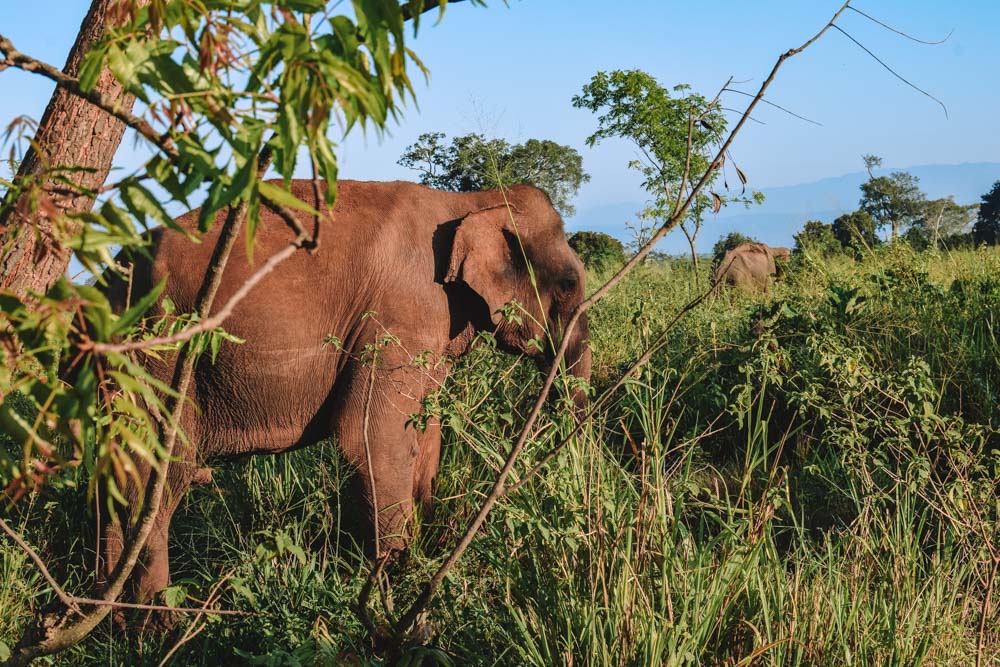
The elephants we spotted before even entering Udawalawe National Park
With so many elephants in a relatively small space, it’s the place everyone goes to if they want to be “guaranteed” to spot elephants.
Obviously you can never have 100% certainty when it comes to wild animals, but at Udawalawe it’s pretty much guaranteed that you will see elephants.
The best time to visit Udawalawe National Park for a safari is either at 7AM or 6PM. Early in the morning or at sunset is when the animals come out, during the day it’s too hot and they’ll be sheltering somewhere in the shade.

Exploring Udawalawe National Park during our elephant safari in Sri Lanka
Getting to Udawalawe National Park
Udawalawe National Park is 165km from Colombo, in the southern regions of Sri Lanka. The easiest way to get there is either by hiring a car and driver or with an organised tour.
Most people travel to Udawalawe from either the hill town of Ella or the southern coast, such as Mirissa and Weligama. You can also get a bus from any of these towns, they might just take a little longer than a private car.
We hired a car with driver to take us from Ella to Udawalawe, wait for us while we did the safari and then drive on to Mirissa for 11,000 LKR.
The total travel time was around 4 hours (2 hours from Ella to Udawalawe and then 2 hours from Udawalawe to Mirissa).
Sri Lanka elephant safari prices
One thing to note about doing an elephant safari at Udawalawe National Park is that there are separate fees for the jeep rental and the park entrance.
Some organised tours might include both, but make sure that is the case before booking so you don’t get any surprises on the day!
We organised our Udawalawe safari through our hostel in Ella and ended up paying 11,000 LKR for a private safari for two. The breakdown was 3,000 LKR for the private jeep and 8,000 LKR of park entrance fees.
The jeep could sit 6-8 people. If we had more friends to split the car with the cost would have worked out a little cheaper.
However the bulk of the expense is the park entrance fee, which is fixed at 15 USD per foreign adult. Comparatively the private jeep rental was fairly cheap.
If you’re travelling solo however it would add up to be quite expensive, joining a group safari would be the easiest and cheapest option.

The first elephant we saw during our safari in Udawalawe National Park, Sri Lanka
Organising & booking your Udawalawe safari
There are two main ways to arrange your elephant safari in Sri Lanka. You can arrange it with your accommodation once you arrive, or you can book online beforehand .
We personally found it very easy to arrange it directly in Ella, but if you prefer to have everything arranged before you arrive, here are some tours you can book that have good reviews online:
- Udawalawe National Park Safari Tour
- Udawalawe National Park Safari from Mirissa
- Elephant Safari in Udawalawe National Park from Bentota

Elephants in Udawalawe National Park, Sri Lanka
Our experience & what to expect at Udawalawe National Park
We set off from Ella at 5AM and were pretty knackered. We slept in the car and arrived at Udawalawe around 6AM, to find loads of jeeps and cars already parked there waiting for the park to open.
We quickly found our driver and changed cars for the safari. We joined the queue of jeeps waiting for the park to open.
We were in awe to see our first elephant before even entering in the park! We were on the road to enter the park, waiting in the jeep when an elephant just strolled up and started munching on some leaves just off the side of the road.
It was a great start to our Sri Lankan elephant safari!

My friend Hanna taking pictures of the elephants in Udawalawe National Park
Once we drove through the gate we had to pay the park entrance fees. We queued with our driver and paid 8,000 LKR for two people. After a quick toilet stop, we were ready to hit the road!
We spent 2-3 hours inside Udawalawe National Park, driving around and searching for elephants. The driving can get quite bumpy but we had the whole jeep just for us two, which was very convenient.
Even if it was so early in the morning the sun got very hot, it was nice having the whole jeep to ourselves so we could seat hop and always be in the shade.
It was also great being able to move around and get closer to the elephants without having strangers in the way.

Elephant safari in Udawalawe National Park
We saw so many elephants that I was in a constant state of wonder for the whole safari. We saw so many elephants, often in big groups and with baby elephants with them too.
Most of the time the elephants are just chilling on the side of the roads, munching away, unfazed by the presence of jeeps and people looking at them. They just get on with their business and ignore the jeeps.
One thing to note is that the jeep drivers are in constant walkie-talkie contact with each other. As soon as one driver spots elephants, all the other jeeps rush there to get a good spot close to the elephants.

Some of the buffalos we saw in Udawalawe National Park
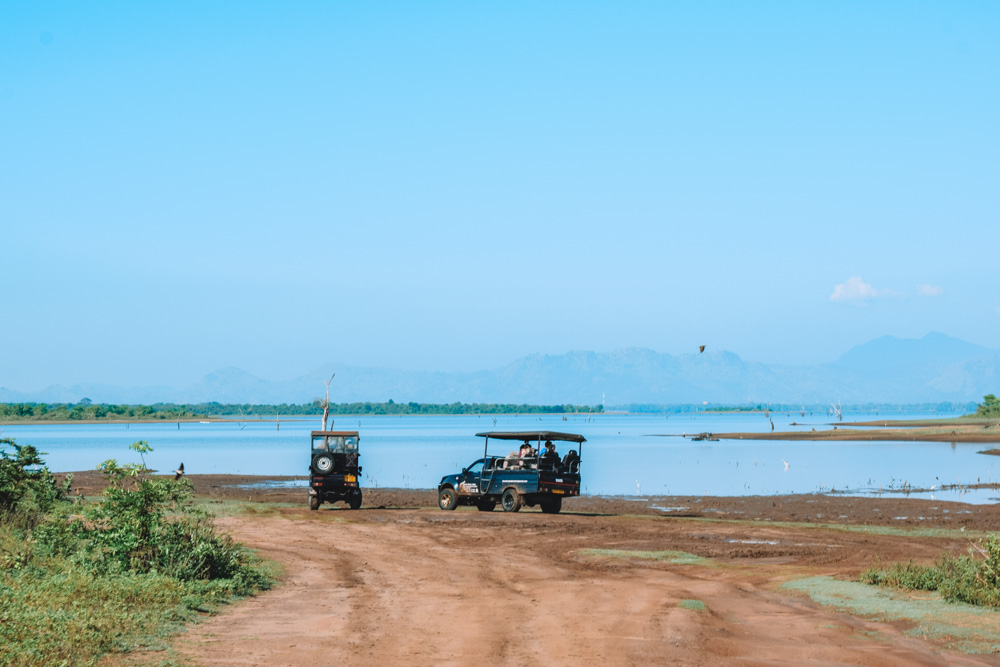
Jeeps in Udawalawe National Park
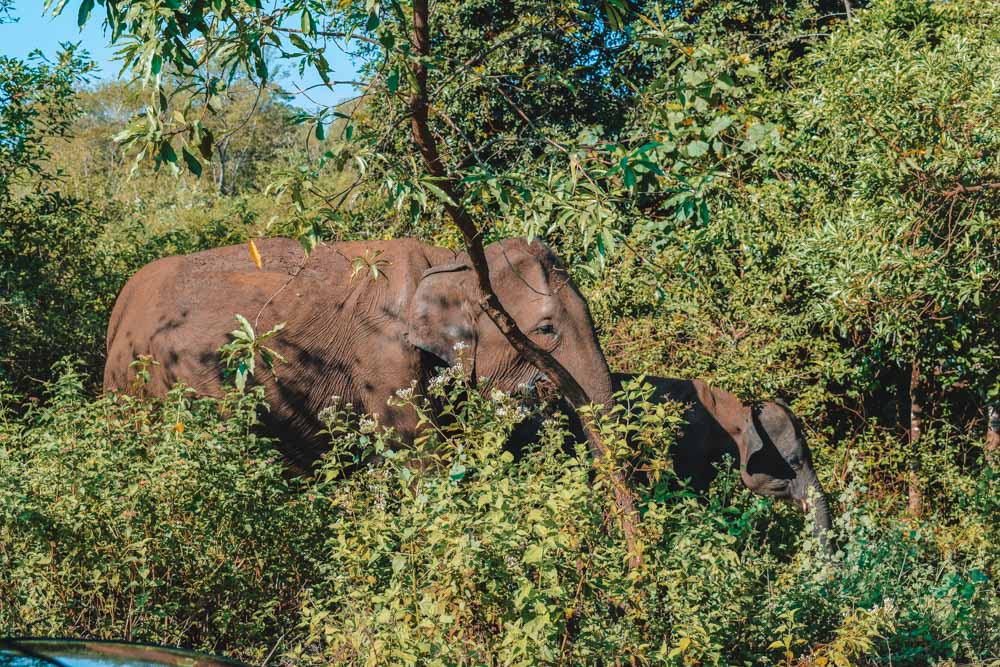
Elephants in Udawalawe National Park
This racing around the park chasing the elephants felt a bit weird at times. While the elephants are “wild” and free they’re obviously very used to seeing people.
Still, when compared to places that let you ride elephants or who keep them in chains, it’s still a much better and more ethical elephant encounter.
Besides elephants we also saw crocodiles, buffalos and pumbas, as well as lots of different types of birds. Once the safari was over we met up again with our driver outside the park and drove on to Mirissa.
Click here to book your Udawalawe National Park safari!

A giant asian water monitor we saw in Udawalawe National Park
An adorable young elephant we saw in Sri Lanka
Where to stay for the best Sri Lanka elephant safari
The best places to stay to visit Udawalawe National Park ultimately depend on how much time you have in Sri Lanka. We personally did our safari on the road from Ella to Mirissa.
This was the perfect arrangement for us since it fit our schedule, and it avoided us the long car journeys that you would have to if you visit Udawalawe as a day trip.
If you have more time to stay in Udawalawe that would be awesome as you might be able to do more than one elephant safari. I have listed below some great accommodation options, wherever you choose to stay before or after your safari.

In Udawalawe
If you have the time and are looking for a unique experience, you should definitely stay in a glamping or safari lodge in Udawalawe. One of my friends stayed at Athgira River Camping and said he had an incredible time.
Click here to book your stay at Athgira River Camping!
We stayed in Ella the night before our safari and stayed at the Hangover Hostel . I personally loved it; it’s a sociable hostel with spacious rooms and lockers.
If you don’t want to stay in a hostel another great option in Ella is Mountain Heavens , they have an infinity pool overlooking the hills of Ella.
Click here to book your stay in Ella!
Nine Arch Bridge in Ella, Sri Lanka
You can also visit Udawalawe on a day trip from Mirissa.
After our safari we actually drove on to Mirissa after and stayed at the Hangover Hostel there. The hostel is beachfront, has airconditioned rooms with big lockers and big communal spaces.
If you prefer having your own place another great option in Mirissa is Paradise Beach Club , located right on the beach and with a lovely pool.
Click here to book your stay in Mirissa!

Sunset at the famous coconut hill in Mirissa, Sri Lanka
What to pack for your elephant safari in Sri Lanka
Besides the usual clothing and items you would find on any packing list for Asia , I’ve listed below some essential you will definitely want to bring on your elephant safari in Udawalawe National Park.
Hat – it can get very hot during your safari! Make sure to have a hat to shield your head from the sun.
Sunscreen – same as above, even if you do the safari very early in the morning you the Sri Lankan sun is still strong. Don’t ruin your safari by getting sunburnt.

A young elephant we spotted in Udawalawe
DSLR camera with a zoom lens – while the drivers often get quite close to the elephants, if you want to be able to capture beautiful photos of these magnificent animals you will want a proper DSLR camera with a zoom lens (make sure they’re compatible before buying a lens online!) That way you can snap photos of them up close, while being in the comfort of your jeep.
Water bottle – bring a reusable water bottle that you can fill up at the start of the safari, it gets very hot so you want to stay hydrated! I like the steel bottles because they keep your water cold.
Power bank – if you don’t have a DSLR don’t worry, you’ll still be able to capture great photos with your phone. However make sure to bring a power bank, you wouldn’t want your phone to die half way throughout the safari!

The elephant we saw before even entering Udawalawe National Park
Final thoughts on doing a elephant safari in Udawalawe National Park in Sri Lanka
Doing an elephant safari in Udawalawe National Park was one of my favourite things to do in Sri Lanka. Seeing these magnificent animals in the wild was an awe-inspiring experience, and I’m grateful to have had the opportunity.
I hope you find this guide useful in planning your visit to Udawalawe National Park and elephant safari in Sri Lanka. If you have any questions, just let me know in the comments below!
Looking for more Sri Lanka travel tips? Check out these guides:
- Ella Rock Hike – DIY without a guide!
- Everything you need to know about hiking Pidurangala Rock
- Discover Sri Lanka’s Insta-famous beach swing
- The most beautiful waterfall in Sri Lanka
- The most scenic train ride in Sri Lanka (and maybe the world?)
- Little Adam’s Peak sunrise hike
Enjoyed reading about Udawalawe National Park? Pin it!

Udawalawe Safari: The Best Elephant Safari in Sri Lanka

Home > Sri Lanka
If tea fields, beaches and amazing railway tracks still haven’t convinced you to visit Sri Lanka , then I am certain a trip to the Udawalawe safari will. Udawalawe, a park covering almost 120 square miles (30,800 hectares) of land, has a lot of elephants and is typically less crowded than Yala, its main ‘competitor’. Besides that, it is also conveniently located only 2 hours from Ella in south-central Sri Lanka and the way they treat animals in Udawalawe is (according to the locals) much friendlier than Yala. In this article, you’ll be able to learn everything you need to know before visiting and how to make the most of your Udawalawe safari.
Our Udawalawe Safari afternoon experience
We arrived at our hotel in Udawalawe just in time for check-in. We spoke to the hotel manager who arranged a safari ride for us at 3 pm on the same day. We dropped our bags, took a shower and changed our clothes – just in time to go back to the reception area and get up on our white safari jeep. We were both really excited as Udawalawe Safari is near the top of most tourist’s Sri Lanka bucket list.
We then made our way from the hotel towards the National Park, where we waited in the jeep while the driver gets entrance tickets. After he got the tickets, we could begin our drive in the park.
It only took us about 10 minutes when we saw the first small herd of elephants. Such amazing creatures to see in their natural habitat.

No time to read now?
No worries! Save on Pinterest to read it later.
After the elephants in this location scattered off into the deeper jungle, we continued driving towards a lake. We saw quite little there, but the best thing was the elephant below who had an itch to scratch – so he used the rock and scratched for about a minute straight. It was hilarious!

After the trip around the lake, we drove for quite a while without seeing any elephants. Our driver did have a good eye for various birds and lizards though! We started feeling a little sad that we might not see any more elephants.

And just as we were about to turn by this small pond, I saw a big elephant coming towards it. I told the driver to wait a bit more and I am so happy I did! After the big elephant, many more followed and we ended up seeing a huge herd of elephants, all about to drink and play in the water just next to us. I almost forgot to take pictures, it was such an amazing experience to see them from so close and so free.
After watching the elephants at this location for a good half an hour, we (and the elephants) continued our road. We drove slowly towards the exit and they walked off into the jungle.
We were then graced by a very beautiful sunset on our way back to the hotel. After we were done with showering and getting ready, we went to a nearby restaurant to eat some dinner and sleep. We absolutely loved our time at Udawalawe and would recommend you to visit as well, if you find yourself or are planning to go to Sri Lanka.
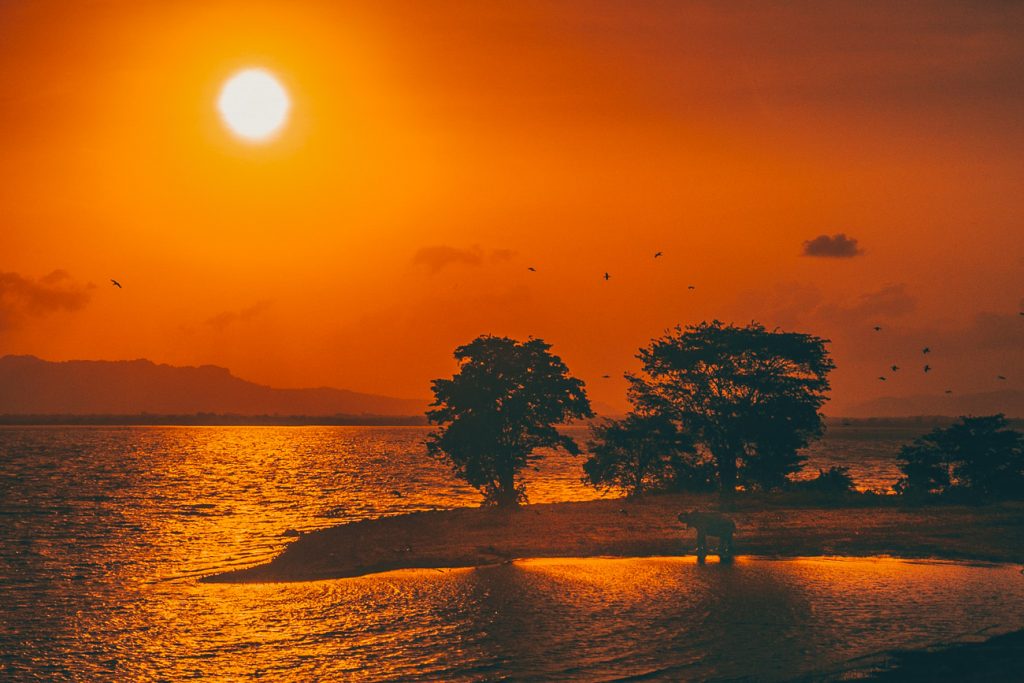
Udawalawe Safari prices
Here are the packages for safari drives to Udawalawe national park that we received from our hotel.
Safari sessions:
Morning 6.00-9.45PM Evening 2.15-6.00PM
Private safari (only you): Jeep service for 2 pax = 4000 LKR Entry tickets for 2 pax = 7200 LKR Total cost for safari = 11200 LKR
Shared safari (Share the jeep with others – max 4 pax): Total cost for shared safari = 8750 LKR FOR 2 PAX (56 USD) (saving for sharing 2400 LKR)
You will be picked up from the hotel and dropped off back, after the safari. So no additional transport is needed to go National park gate.
When to visit Udawalawe National Park
Udawalawe National Park is open year-round, and you will have a great experience any time of the year. However, if you are a true animal enthusiast you will see the most elephants and migratory birds from October to April. The amount of animal sights is random, there is no guarantee in how many and which animals you’ll see, and that’s exactly how a safari is and should be. Remember, it’s not a zoo and animal sighting isn’t guaranteed!
Regardless of when you visit, you’ll have an option to do a half-day safari or a full day safari. The half-day Udawalawe safari trips are in the morning, starting at around 6 am, while the afternoon safaris will begin around 3 pm, and both last about 3-4 hours. Typically the morning safaris will give you more time in the safari, but the afternoon safaris are rewarded with a sunset from the Udawalawe Reservoir, which is why we went for the afternoon option and definitely recommend it!
I think half a day is more than enough, but if you really love safaris, then opt for a full day.
Which safari company to choose
We arranged our afternoon safari trip directly with the hotel and were really happy with them. I think this is the easiest and most convenient way to book the safari. We booked this the morning before arriving and decided to go fo the afternoon Udawalawe safari because we wanted a nice sunset trip to the safari.
We also really appreciated that our driver didn’t approach the animals and kept us away from other vehicles. This is how we managed to experience the safari in the best possible and unobtrusive way.
What to bring to the elephant safari
- Camera and a zoom lens
- Stabilizer if you’re filming, the roads are hella bumpy
- Sandals as you’ll be in the jeep the entire time so no need for fancy shoes
- Wear lightweight, neutral-coloured clothing
- Sweater if you take the morning safari

Everything you need to know before visiting
How to get to udawalawe, from unawatuna to udawalawe.
We went from Udawalawe from Dalawella, which is just next to Unawatuna, with our driver Disa (you can reach him on WhatsApp +94 77 114 0727) who was taking us around almost all of Sri Lanka for two weeks. Contact him for the best price, but in general, you’ll be paying around 6000 rupees. It’s about a 2-3 hour ride with a minivan.
From Mirissa to Udawalawe
Mirissa and Unawatuna are about an hour apart. We did all our Mirissa activities from Dalawella, but if you are starting your trip from Mirissa and don’t want to hire a driver, you will have to take 3 buses:
Mirissa to Tangalle bus station. (60 Rupees per person, 1 hour 30-minute ride) Tangelle bus station to Embilipitiya. (60 Rupees per person, 1 hour 30-minute ride) Embilipitiya bus station to Udawalawe. (40 Rupees per person, 30-minute ride)
From Colombo to Udawalawe
It takes about 4-5 hours from Colombo to Udawalawe and the best way to do this trip is by hiring a driver or taxi for the trip is the best way to get here. Many safari companies will also help you arrange transport from anywhere you stay in Sri Lanka, but it will be a little pricier.
From Ella to Udawalawe
The easiest way again is by hiring a driver. But if you decide to take a bus, you will need to hop on three different lines to get from Ella to Udawalawe.
Ella to Wellawaya bus station. (75 Rupees per person, 45-minute ride) Wellawaya bus station to Thanamalwila. (80 Rupees per person, 40-minute ride) Thanamalwila to Udawalawe. (80 Rupees per person, 45-minute ride)
Where to stay
We chose to stay at The Countryside Udawalawe . From our experience, it didn’t matter very much where you stay in terms of location. The majority of people come here to go to the Udawalawe National Park and the hotels generally provide transport (safari jeep) to the safari, in the safari and back to the hotel.
We only stayed here for one night and were very positively surprised by the room, surroundings as well as breakfast.
Where to eat
Since Udawalawe is mostly a one-day destination, see if your hotel provides lunch and dinner and opt for eating in. We decided to wander to a different place but really regretted it. There are barely any public lights and the traffic on the main road is crazy, so walking around in darkness is anything but a good decision!
Save this article for later:
Related posts
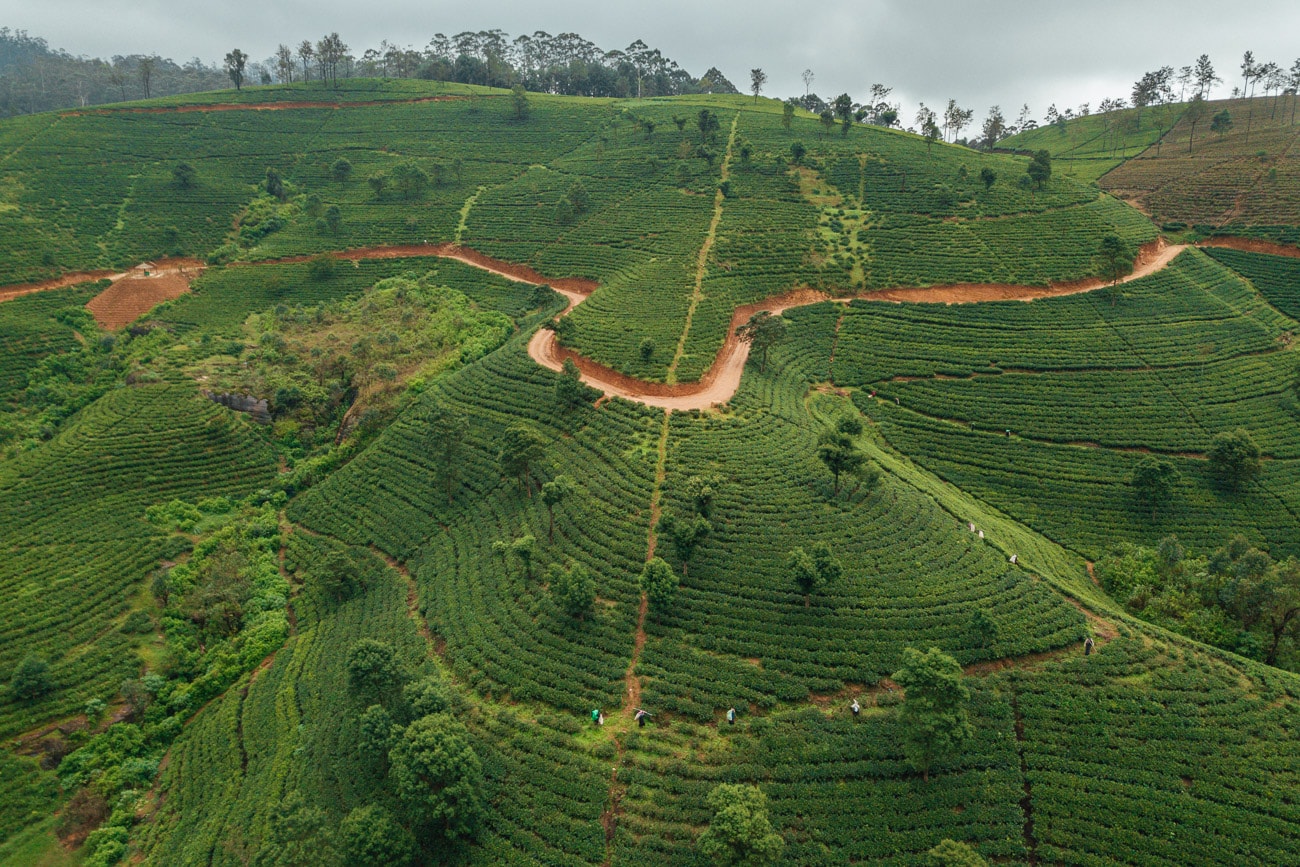
Read all articles about
Friday 25th of September 2020
Wow your photos look AMAZING! I am defiantly convinced to visit
Thursday 24th of September 2020
What an absolutely beautiful experience, and a gorgeous sunset to top it off! I think this is a really great way of seeing the elephants in Sri Lanka when compared to one of the unethical parks. When I was 15 I visited Sri Lanka and went on a safari ride but there was so many jeeps - it couldn't have been good for the elephants. I am so glad to see that it looks like you were the only jeep out there and that you were giving them there space. The place you stayed at in terms of accommodation looked great too, will defo be saving that for when I get to go back!
Ah makes me sad to read this! We always try to be responsible as tourists and we were happy to discover Udawalawe, I really hope they continue staying ethical! Do let me know if you do return and how you found the experience! :)
Oh my goodness that would be SO cool to see an elephant in real life...and not at a zoo!
Exactly - it was amazing!!
Julia Bocchese
I didn't know Sri Lanka had safari tours like this, but I really want to go on one now! It must have been amazing to see the elephants in their natural habitat like that!
Sri Lanka is so diverse and beautiful! You'll love it if you visit :)
Wow what an amazing adventure. I would love to do this trip someday. Great pictures. How interestingly you've described everything in details. Will save this for my reference.
Thank you! I'm glad you found it helpful and definitely let me know if you went there!

- Packing List

Udawalawe Safaris: How To Pick The Best Trip in 2024!
Sri Lanka has some incredible national parks, with lots of opportunities to spot incredible wild animals! Here are my top recommendations for the best Udawalawe safaris to get the best sightings.
Banner Title
3 Hour Udawalawe Private Safari
The very best out of all of the Udawalawe safaris has got to be the Udawalawe National Park Private Safari including Jeep Tickets . You really do get the greatest experience by having your own driver, who can cater to your every whim during the tour! We do not recommend getting a full-day tour as it is a relatively small park and you will save money and have a great time on the 3-hour version.

Udawalawe Safari National Park
Udawalawe is truly a special place, especially if you’re an elephant lover. We saw over FORTY ELEPHANTS on our trip!! You can see from the video that there are so many about, and they often come quite close to your jeep once you’re silent and still because they’re interested in what you’re doing.
The jeep drivers know how to keep both you and the elephants safe though, and never get too close themselves, sometimes revering away if an elephant looks a little too friendly!
You really can’t visit Sri Lanka and not experience one of the Udawalawe safaris on offer, so reserve your spots quickly before they sell out and pay just 2 days before your trip!
Read More: The Best Place To See Elephants On Safari in Sri Lanka
Where is Udawalawe National Park?
Udawalawe National Park is in the south of Sri Lanka, around 1 hour – 1 hour 30 minutes away from the coast.
The park is spread over about 300 km2 of land, so it’s a pretty big place!
What Should All Udawalawe Safaris Provide?
On all Udawalawe safaris, the absolute minimum you should be given is a bottle of water per person! On the longer tours, you’ll be given breakfast and even lunch, depending on how long it lasts.
Some companies offer free binoculars as well which are very helpful whilst driving along in the national park.

When you book, double-check to see if the actual entrance fee to the national park is included. Sometimes it isn’t (so the price you are paying reflects that) but it’s better to be prepared so that a) you bring enough cash and b) you aren’t tricked into thinking you’re getting a great deal when in fact you have to pay extra on the day.
Read More: The 23 Best Wildlife Tours In Sri Lanka
The driver should also be knowledgeable about the animals – this adds huge value to your trip because you’ll find out lots of random facts about the nature you’re seeing from someone who knows what they’re talking about! On our Yala safari, our guide had a book about all of the different animals you could see in the park, and showed us whenever he saw something cool!

Most Udawalawe safaris will include hotel pick-up in the price too. If you’re within 5km of the park, then you’ll be picked up. However, if you’re further than that, or in a completely different town, then check with the company to see if they offer hotel pick up for a fee. Some of the safaris are specifically sold to customers who are elsewhere in Sri Lanka, so they already know that you’ll be some distance away.
Check out the links below for safaris that will pick you up if you are staying in the following towns:
- Galle, Mirissa or Ella
- Bentota, Induruwa, Aluthgama, Beruwala, Maggona, Kalutara, Waskaduwa, Wadduwa, Kosgoda , Ahungalla, Balapitiya, Ambalangoda, Hikkaduwa & Rathgama
A Typical Itinerary Of All Udawalawe Safaris
Most of the Udawalawe safaris follow a similar itinerary, so you don’t have to worry about missing out on something depending on the company you choose!
When booking your safari, you’ll get the choice of a 3, 6 or 9 hour tour. These each come with tickets paid for in advance, or you can book an option where you pay the entrance fee for the national park when you arrive.
I would highly recommend a 3 hour safari trip like this one . The main animals you’ll want to see here are elephants, and there so many which means you’ll find some quickly! We spotted our first elephant around 5 minutes into the drive!

I think 3 hours is enough because you’re almost guaranteed elephant sightings, so after the three hours has passed, you’ll likely be ready to leave the bumpy jeep! Obviously this is up to you – if you are elephant obsessed, then spending nine hours watching them might be a dream!
For some safaris, like in Yala, I’d recommend a full 12-hour day tour, but at Udawalawe, 3 hours is definitely enough.
Read More: How To Choose An Epic Safari In Sri Lanka & How Do Make The Most Out Of A Single Week In Sri Lanka
The time that you’ll be picked up from your hotel will depend on if you’ve chosen a morning or afternoon drive, as well as your location. If you’re coming from the south coast, be ready to greet your guide at least an hour before the safari is meant to start. You’ll organise specific times once you’ve booked.
Entrance Gate
You’ll have to stop at the entrance gate so that your driver can pay for entry, the service charge, the vehicle fee and the tax. This is where you’ll need your cash IF the fees aren’t included in your tour price. The prices are quoted in dollars, so if you are paying in rupees then you’ll just be charged the equivalent on the day.
Here are the fees as of 2022:
Find The Animals!
Here’s the fun bit! You’ll drive around the park, keeping a keen eye out for any animals on the road or hidden in the trees.
If you see something, shout out to your driver to stop – they are also on the lookout but they’re driving too so they might miss something.

All of the tour companies usually communicate whilst on the drive so if one jeep spots a group of elephants, they’ll send out a message to everyone else. This is good because it means that more people are looking out for the animals (here they focus on the elephants) so you’re sighting chances are much higher.
The only downside to this is that if YOUR jeep finds a group of elephants and you’re enjoying the peace while watching them, shortly afterwards there might be five more jeeps on their way. It’s give and take, but I think the take is definitely worth it!

Lunch – Depending On Your Tour
Some of the longer tours include breakfast or lunch – if you’re on a safari for 9 hours then you’ll need to eat! You can also usually pay extra to have a meal even if it isn’t included.
You can also bring your own snacks to have throughout the trip if you’re on a budget – many hotels offer a little picnic breakfast or lunch!
The park closes at 6 pm, so you’ll leave before then and be driven back to your hotel.
What Animals To Expect On An Udawalawe Safari
Sri Lanka is home to some beautiful animals, from whales in the deep Indian Ocean , to leopards sunbathing in the mountains. There are plenty of animals to spot on your safari, especially if you are lucky enough to get some binoculars! Here are the main different types and what you can expect to see.
This national park is an important place for many mammals, and it’s great to see that they all have enough space to share with each other.
Elephants are a big deal in Sri Lanka – there are plenty of government and private conservation efforts going on in order to keep them as safe as possible.

The main reason you’re going to try out one of these Udawalawe safaris is to see elephants! There are huge numbers of these beautiful creatures in the park, from males roaming solo to grandmothers leading their families and protecting the babies.
There are a few different types of monkey that you might see in Udawalawe – the toque macaque which is only found in Sri Lanka, and the tufted grey langur. We saw a few groups of monkeys playing around and eating leaves which was cute!
Just like the monkeys, there are a few different species of deer scattered around Udawalawe National Park. They like to stay in groups, so if you manage to see one, then keep an eye out for their family. You might get lucky and meet a baby too!
Water Buffalo
These like to laze around in and around the watering holes, so if you’re near water, there are probably a few water buffalo nearby!

These stunning animals are very famous in Sri Lanka, but they’re usually spotted down in Yala. There have been sightings of leopards on some people’s Udawalawe safaris, but it is very unlikely and if that’s what you’re coming to see, you’re better off staying down south and visiting Yala National Park .
There are almost 200 species of bird that have been recorded at the park, so you’re almost guaranteed to see a variety.

This is another endemic animal to watch out for as you won’t find it in the wild anywhere else in the world!
Peacocks are a common sight in Sri Lanka, so you’re likely to see at least one of these majestic birds at the park. One of the great things about spotting animals on a safari rather than just on the side of the road is that they’re more likely to display natural behaviour – so you might get to see the beautiful mating call of a male peacock on your tour!

Malabar Pied Hornbill
Listen out for these ones – they’re a noisy bunch! They’re also really unique to look at so don’t forget to grab a picture or two.
There are a surprising amount of reptiles that are often spotted on Udawalawe safaris – here are the most interesting.
Water Monitor/Bengal Monitor
Both of these types of lizards can be found in Udawalawe National Park. Usually, they’ll be sitting silently, but if your jeep drives past they’ll probably run into the bushes. They’re so prehistoric and exciting to see!
Yep – these magnificent beasts can be found in Sri Lanka! They are partly the reason you should never leave your vehicle, especially as they camouflage so well. Look out for them in the water and the surrounding land.
There are plenty of species of snake hiding under the grassland, but keep a particular eye out for the Pipe snake. It’s endemic to Sri Lanka and is not poisonous so don’t be too afraid if you see one!
The Best Time To Experience These Udawalawe Safaris
Luckily, there is no real bad time to visit Sri Lanka, or Udawalawe specifically.
There are wet and dry seasons, and usually in this part of the country is dry early in the year. Any time between January and March is generally considered the best time to visit Udawalawe for your safari.

There are also choices of morning or afternoon safaris. There are positives and negatives about choosing both, so in the end, it just depends on your preference.
You are HIGHLY likely to elephants on this tour – we went on an afternoon safari and saw elephants within 5 minutes of entering the park! Other people have said that they experienced the same thing but in the morning – so if you’d rather have a lie-in, choose an afternoon safari and if you’d rather make the most of the sunny afternoons or getting to your next destination, then go in the morning.
Going on one of the Udawalawe safaris is definitely an experience of a lifetime – you’ll encounter so many beautiful elephants in their natural habitat, which is just an incredible thing to see. Males are roaming around solo trying to find females to mate with, grandmothers are leading their herds and the rest are looking after the babies (yep, there are plenty of young elephants to spot on your safari too!)

Click on the button below to reserve your seat on a private jeep safari (and remember that you can book now and pay later to secure your spot!)
Where To Stay In Udawalawe
We stayed at Green View Safari Resort for two nights and had the perfect stay. Click on the button below for pictures of the property and to read hundreds of reviews so you can see for yourself why we loved it so much!
There are plenty of guesthouses and hotels in the town centre, as well as close to the national park. Some of these offer their own Udawalawe safaris, but I would recommend booking with an official guide so that your money is safe.
Before finding Green View Safari Resort, we had the unfortunate experience of turning up at our original hotel and being refused a room because we didn’t book one of their Udawalawe safaris. We complained to Booking.com, who then contacted the hotel. The hotel lied and said that we didn’t turn up – imagine how frustrated we were! Luckily, we found Green View Safari Resort who immediately came to pick us up and Booking.com gave us a voucher for the trouble.
Check Out The Reviews Of Green View Safari Resort Here
The new hotel we stayed in was fantastic and I couldn’t recommend them enough.
The customer service was excellent – I’ve never met a friendlier couple! The room was large, had A/C and even a little sandwich toaster! Breakfast was included and at dinner time, the owners cooked a delicious buffet rice and curry meal for $6.
They even offered a free tuk-tuk journey to the nearby spa where you could choose from a variety of cheap massages.
It only took around 10 minutes to reach the national park too which is great if you’re waking up early and don’t want to waste time travelling.
I’d stay there again in a heartbeat, and I’d 100% recommend to you that you choose Green View Safari Resort when finding somewhere to stay near Udawalawe National Park!
What To Pack For A Safari Trip
In addition to anything you’d need for a trip to Sri Lanka, here are the things we recommend that you take on the safari itself!

These light and ergonomic binoculars are the perfect travel accessory. They're easy to hold and have a non-slip grip, and the rubber eyecups are comfortable even after long periods.

Do not let a brilliant experience be ruined by pesky insects biting you all over your body. Insect repellant is not expensive but not having it can affect much more expensive activities. Pick up a bottle of this Picaridin bug spray and enjoy your travel.

This will probably be the last selfie stick you ever buy! It has a sturdy aluminum telescopic 40" range, a tripod for propping your phone up in better locations, a detachable wireless shutter button so you can control when all pictures are taken, and extends down to a brilliantly compact size making it perfect for any type of travel.

We all know the benefits of antibacterial hand spray, even before the pandemic. These are especially important for backpackers as you will find yourself in situations where soap and water might not be at hand. These small spray bottles have been specifically designed for travel and can easily fit into luggage and day packs.

If you don't like the side effects many nausea-reducing medications create then you could try one of these electrode stimulator wristbands. This particular one is FDA-approved, is waterproof, and has up to 30 hours of battery life.

This is a true blessing on hot days, stuffy plane journeys and humid hikes. It has 3 speeds and only takes 3 hours to fully charge. You can hold it in front of your face, clip it to objects like umbrella handles and bus seats or just rest it on a table.

Frequently Asked Questions
How long are the udawalawe safaris.
You can choose from 3, 6 or 9-hour long safari tours. We would recommend a 3-hour tour to Udawalawe.
How do I book one of the Udawalawe safaris?
You can click on any of the green buttons in this post to book one of our top recommended Udawalawe safaris.
What is the best time to visit Udawalawe National Park?
The best time to visit is between December and January to minimise chances of rain, but the weather here is quite unpredictable sometimes!
Which is better: Yala or Udawalawe?
This depends on what you want to see! Both parks have lots of similar animals, but if you want a higher chance of seeing a leopard, then go to Yala. If you want to be pretty much guaranteed to see elephants then go to Udawalawe.
How many elephants are there in Udawalawe National Park?
This is a difficult number to pinpoint, but the Udawalawe Elephant Research Project estimates that there are about 400 elephants in the park.
How do I get to Udawalawe National Park?
You can hire a driver (ask your hotel) or you can choose a tour with hotel pick up included in the price.
Are there leopards in Udawalawe?
There are some incredibly rare stories of leopard sightings in Udawalawe but don’t hold your breath. Go to Yala for the best chance of seeing leopards.
Have we helped you to choose your Udawalawe safari yet? Let us know if you have any questions in the comments!
Leave a Comment Cancel reply

Udawalawe Safari: Ultimate Sri Lanka highlights with Elephants
Sri Lanka has 26 National Parks that are dedicated to protecting the country’s diverse and unique wildlife. Although each has its own appeal, Udawalawe National Park has the largest herd of free-roaming elephants in Sri Lanka. Taking an Udawalawe Safari is one Sri Lankan highlight you don’t want to miss!
Due to its abundance of water, spotting elephants in Udawalawe is almost guaranteed all year-round. Taking a guided tour around the National Park is the perfect safari with kids. You will also likely see crocodiles, water buffalo, deer, lizards, monkeys and birds.
With a packed itinerary and limited budget, we decided to flex our plan while travelling between Mirissa and Ella to fit in one of the elephant Safaris in Sri Lanka. We are glad we did, because the Udawalawe National Park safari was one of the highlights of our 3 week Sri Lanka itinerary.
Udawalawe National Park | Central Sri Lanka | Open Daily 0600-1800 Safari Highlights: Elephants, Leopards, water buffalo, crocodiles & birds
Udawalawe National Park Safari: Overview
Encompassing over 30,000 hectares of protected land in the heart of Sri Lanka, Udawalawe National Park was established in 1972 to provide a sustainable sanctuary to the large herd of elephants in the area.
As a result, Udawalawe has become one of Sri Lanka’s top safari destinations.
Plants and animals flourish in Udawalawe and it is the ideal habitat for its thriving elephant population. At approximately 500-700 strong, it is the largest population of Asian elephants in Sri Lanka. This is around 10% of the Sri Lankan elephant population, which is sustained by the rich water source, the Udawalawe Reservoir.
While Udawalawe is famous for elephants, there are also leopards, crocodiles, water buffalo, deer and many birds in the park. Unlike the high chance of seeing elephants, you’ll need sharp eyes and luck to glimpse one of the estimated 10 leopards while on safari.

Udawalawe National Park Safari: What To Expect
We arranged a private transfer from Mirissa to Ella through our hotel and asked the driver to stop at Udawalawe National Park en route.
We arrived at the National Park at around 10 am and pulled up next to five waiting Safari Jeeps. After negotiating a ‘special rate’ for a family safari and guide, we set off to the entrance gates (just a few minutes), where we stopped to purchase tickets (ID was required, as was cash).
Our driver cared deeply about the wildlife and knew well about the plants and animals we saw. He taught us the signs to look out for and pointed out many almost hidden creatures. As Sri Lanka was at the end of a dry season, the bushes and trees were not in full flush, but that came with the bonus of making it easier to see the wildlife.
We drove through the park on a maze of dirt tracks for the first two hours, stopping at multiple spots for the guide to point out wildlife. It was a particularly quiet day and we only saw three other jeeps.
Although we had previously seen elephants in Thailand and India, we wanted to see them in the wild.
Whilst we were enjoying the experience, as we ticked over into our 3rd hour, we started worrying that we might not see what we had come for. Then, something changed; our driver turned the vehicle around and dashed to a new spot (maybe the plan was always to keep the elephants till last, or perhaps he got a ‘nod’).
Overlooking the plains, not too far in the distance, we could see several elephants and some jackals. Mission accomplished!

As we headed towards the exit, we came head to head with a large male elephant. This elephant encounter on its own made the whole safari worth it. We stopped while the elephant, coming within a meter of the jeep, continued walking past us.
Altogether, we saw around 15 old and young elephants in their natural habitat at Udawalawe. Some were in the shade under the trees, others walking together, and all as nature intended them to be.
Things To Know Before Visiting Udawalawe National Park
Undoubtedly, taking a safari is one of the top things to do in Sri Lanka . There are several options to suit your interests and itinerary. Here’s what you need to know about Udawalawe National Park.

Where Is Udawalawe National Park?
Udawalawe National Park is situated between the forests of Ella in the Hill Country and the stunning South Coast beaches . We wouldn’t recommend making the long journey from Colombo to Udawalawe unless you plan at least one decent stop along the route.
The National Park entrance is in a remote area, about 10km from the centre of Udawalawe , also known as Udawalawa.
The roads to the Udawalawe are in good condition and while local buses will be the most budget-friendly option to get there, they are slow! In contrast, a car or private transfer is the most direct and comfortable option, but they cost considerably more. We took the hit on our budget and arranged a private transfer.
Note: Journey times often take much longer in Sri Lanka than the distance might suggest!
Best Time To Visit Udawalawe National Park
You can visit the National Park in Udawalawe at any time of the year and see plenty of wildlife. However, do be mindful of the two monsoon seasons that bring heavy rain across several regions of Sri Lanka.
Udawalawe experiences peak rainfall in April-May and October-November making tracks very wet and wildlife harder to spot.
Although Udawalawe’s main dry spell is from May-September , the high temperatures can make it uncomfortable to be on safari. January to March is also relatively dry but is more comfortable with average daily temperatures of 26 degrees.
During dry spells, the scrub is less dense, and as water becomes scarce, wildlife congregates around the reservoir, making spotting easier. If you have a choice, we think the best time to visit is early in the year when the temperature is slightly lower and the wildlife is easier to spot on your Udawalawe Safari.
We visited Udawalawe during our road trip around Sri Lanka in March. Although it was hot, it was bearable in the roofed safari jeep. The bonus was that the safari had limited jeep tours operating, but we also encountered fewer animals than maybe seen at other times of the year.
Udawalawe National Park Opening Times
Udawalawe National Park opens daily from 06:00hrs to 18:00hrs.
Although Udawalawe safaris operate daily between dawn and dusk, it is worth checking its opening times and current status before travelling. The park may be affected by environmental changes, wildlife patterns or other unforeseen circumstances.
What Animals Can You See In Udawalawe National Park
Udawalawe has diverse wildlife, including elephants, water buffalo, spotted deer, wild boar, water lizards, leopards and numerous bird species . Udawalawe Reservoir, within the park, attracts various migratory and resident birds, such as peacocks, eagles, bee-eaters, vibrant kingfishers , and other avian species against the backdrop of the park’s lush greenery.

How Long Is The Udawalawe Safari?
The duration of safaris at Udawalawe National Park can vary depending on the type of you choose. However, a typical Udawalawe safari usually lasts around 3-4 hours (half day) or 7 hours (full day) . These times minimise the disturbance in the park, allowing the animals to behave naturally.
We think 3 hours is enough time on a Udawalawe safari, especially with kids.
Morning safaris often begin at sunrise, as the wildlife wakes up and becomes active. The Afternoon safaris allow visitors to observe animals during the golden hour of sunset when many species are active. While you can access the park in the middle of the day, animals are less active. Most of the animals will seek shade and be harder to spot.
Additionally, if you are taking a safari with kids, we advise not joining others in a jeep. This allows the driver to finish the safari early at your request if your children have had enough – there are long periods requiring patience.

Udawalawe Safari Cost
While Safari in Sri Lanka is much cheaper than an African safari with kids, there are several fees to pay when taking a safari in Udawalawe.
It is worth checking the most up-to-date Udawalawe Safari Price .
Udawalawe National Park does not employ guides. We recommend booking your safari in advance through your lodge or with a tour company, not at the gates. This allows you to select a reputable driver and pick a preferred time slot for your experience.

Other Activities – Udawalawe Elephant Transit home
The Udawalawe Elephant Transit Home, also known as Udawalawe Elephant Orphanage, rehabilitate orphaned elephants. It is located on the border of Udawalawe National Park, where you get the opportunity to learn about young elephants and their rehabilitation programme.
You can only observe elephants from a distance . Feeding sessions are at 10.30, 14.30 and 18.00. No handling is allowed. Prices are $5 for adults and $3 for children + 15% VAT.
Where to stay For Udawalawe National Park Safari
There are several homestays, lodges and local hotels in Udawalawe. The accommodation is primarily for tourists going on safari, so you’ll not find much else around.
There are budget-friendly homestays if you are just after a bed for a few hours before an early morning safari. This is a great opportunity to gain cultural insight. Some accommodation options have pools for relaxing after your safari. If budget is not a problem, you can stay in a lodge within the Udawalawe National Park.
We were en route from Mirissa to Ella for hiking , so we did not stay in the area.

Tips for Udawalawe National Park Safari
Whether you are a seasoned wildlife spotter or it’s your first safari, we want you to have the best experience. Here are a few tips to help:
- Book A Time That Suits You – Safaris are said to be best in the early morning or late afternoon when the wildlife is most active. However, even in the midday sun, we saw plenty of wildlife; as a bonus, there were no crowds!
- Expect Crowds – Elephant Safaris in Sri Lanka are popular. Everyone wants to see and photograph the moment. Drivers will try their best to get the Jeep into a good position.
- Takes Binoculars And A Camera – Drivers and their spotters have great knowledge and eyesight. Sometimes, it’s hard to see something, even when it’s next to the Jeep!
- Keep The Kids Entertained – There is a lot of sitting and waiting on a safari, unlike hiking; even the most patient kids can get tired and hungry, especially when it is hot. It’s not an easy task to keep them on side, so be prepared with snacks and activities.
- Use The Toilet Before The Safari – The safari lasts for hours, the ride is bumpy and there are no toilet facilities.
- Take A Guide – Reputable guides will give you the best chance of seeing the most wildlife on safari. They know where and when to look and have a keen eye for spotting tracks.
- Pack Essentials – Bring essentials such as hats, sunscreen, sunglasses, insect repellent, snacks and plenty of water to keep everyone comfortable throughout the safari. Bring something warm. It can be cool at sunrise and set.
- Check The Weather – Safaris are not fun in pouring rain!

Is a Safari At Udawalawe National Park worth it?
It really depends on what you expect to achieve from a safari. Udawalawe’s conservation efforts protect the region’s wildlife and Sri Lanka’s biodiversity. You’re almost guaranteed to see elephants in their natural environment while having your Jeep safari adventure.
Udawalawe National Park safari is worth visiting for those seeking a Sri Lanka wildlife tour. Unlike some National Parks, Udawalawe’s convenient location is perfect if you are in the southern region of Sri Lanka. We think it is the best safari in Sri Lanka.
Elephant rides in Sri Lanka occur all too frequently. Please do not partake in any form of animal abuse , such as elephant riding in Sri Lanka.
Udawalawe National Park Safari FAQ
Here are a few commonly asked questions about safaris in Sri Lanka:
Which Is Better, Yala National Park Or Udawalawe?
Deciding whether to visit Udawalawe or Yala National Parks will depend on what you want to see. Although, both parks give a great opportunity to see a variety of wildlife, if you are interested in seeing elephants, head to Udawalawe, whereas, for the elusive leopards, you have a higher chance in Yala National Park.
Can You See Leopards In Udawalawe National Park?
Yes, although rarely spotted there are thought to be leopards in Udawalawe Park. If you are lucky, you might spot one on safari.
Is Udawalawe National Park worth visiting?
Depending on the time of your visit and what you hope to see, Udawalawe National Park is certainly worth visiting.
Udawalawe is one of the best elephant safaris in Sri Lanka. With a large herd of elephants in addition to water buffalo, crocodiles, deer, monkeys and a large variety of birds, you won’t be disappointed.
How Long Should You Spend In Udawalawe National Park?
Udawalawe National Park is open from 0600 till 1800, with safaris offered for 3-4 hours (half-day) to full-day tours.
The ideal duration depends on the time you have available. You can enhance your wildlife exposure by spending longer in the park, although half-day safaris can be just as memorable experience, seeing a good variety.
Final Thoughts: Udawalawe National Park
Elephant safaris in Sri Lanka are increasingly popular, but at a fraction of the cost of the alternative African safaris, sharing the parks with others is a small compromise! Udawalawe National Park is a great choice for wildlife spotting, and seeing elephants in Sri Lanka.
Taking an Udawalawe National Park Safari with your family is is one of our top recommendations for things to do in Sri Lanka ; it is an adventure you will never forget. Whether you stay overnight and take an early morning safari or go for the quieter late morning option, you have a high chance of seeing elephants in Sri Lanka.
Tom and Katie are the owners and co-authors of Trekking The Dream, a family travel blog that helps families create their own world travel adventures. As parents, they are on a mission to inspire families to explore the world through travel adventures and make lasting memories along the way. With over 16 years of family travel experience, they've learned the ins and outs of family-friendly destinations, tips for travelling with kids and teens, and how to turn ordinary trips into extraordinary adventures.
Similar Posts

3 Week Sri Lanka Itinerary: The Perfect Travel Guide

Surf With Kids In Sri Lanka: Best Beaches, Tips, & More

Turtles In Sri Lanka Guide: What You Need To Know!

Pidurangala Rock Hike: An Alternative To Climbing Sigiriya Rock

Sri Lanka With Kids – Awesome Things To Do + How To Travel (2024)

13 Best Snorkelling Destinations With Kids: Tried And Tested

An Epic Elephant Safari in Udawalawe National Park in Sri Lanka: What You Need to Know

Udawalawe is one of the best places to see elephants in Sri Lanka – elephant lovers must visit this excellent national park!
If beautiful beaches, delicious food, rich culture and stunning landscape aren’t enough to convince you to hop on a plane to Sri Lanka , then take a look at the amazing wildlife that this little island in the Indian ocean offers.
Despite its size, the country possesses an extremely high degree of biodiversity and is considered one of the top biodiversity hotspots in the world. Going on a safari in Sri Lanka is one of the best things to add to your itinerary.
Love elephants and wondering where to see elephants in Sri Lanka ? Go on a wildlife safari in Udawalawe National Park where hundreds of elephants roam free – read on for everything you need to know to help plan your Udawalawe National Park Sri Lanka safari!
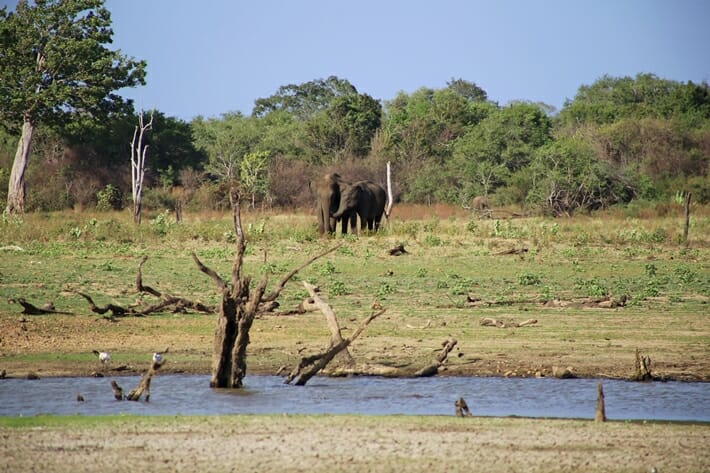
If you are visiting Sri Lanka (and especially the Southern Province), then chances are that you are weighing up between a safari in Yala National Park or Udawalawe National Park. Both are fantastic and within a few hours’ drive of each other, but Udawalawe is popular among those who want guaranteed elephant sightings; Udawalawe is also about a third of the size of Yala and typically less crowded.
Most importantly, Yala National Park generally closes for 6-8 weeks each year, typically from the beginning of September onwards – this means that all safaris in the Southern Province of Sri Lanka tend to be rerouted to Udawalawe National Park. Here’s what you need to know before your elephant safari in Udawalawe National Park!
Why you should visit Udawalawe National Park
Udawalawe National Park is located in the south of Sri Lanka and is a popular destination for those hoping to spot wild elephants. It is quite possibly the best place in Sri Lanka to see elephants throughout the year as there are a few hundred elephants residing within the park , and you can sometimes witness a herd of females moving or bathing together in the wild during an Udawalawe National Park safari.
According to the World Animal Protection Organization’s Research Report on the conditions for elephants used in tourism in Asia and the updated report from 2020 here , Sri Lanka has the highest density of wild Asian elephants worldwide: an estimated five to six thousand in the wild and 120 to 200 in captivity. I would argue that Sri Lanka is one of the top destinations in Asia if you want to see an elephant in the wild, as Sri Lanka has done a solid job of protecting its wildlife while also making it accessible to visitors.
There is no better place to observe an animal than in its natural habitat , and I would highly recommend visiting the national parks in Yala , Udawalawe, Kaudulla or Minneriya over visiting one of the elephant “orphanages” in Sri Lanka (with the exception of the Elephant Transit Home which returns elephants to the wild – the only venue in Sri Lanka that made the World Animal Protection’s list of venues with the best welfare conditions). If you’re interested in reading more about where to see elephants in Sri Lanka then click here .
From the WAP’s Research Report on the conditions for elephants used in tourism in Asia: “A true elephant-friendly venue is purely observational for visitors, where the safety of visitors and wellbeing of elephants is not affected by the need to constantly control the animals. The elephants would be managed in humane ways through the mahout who allows a maximum of freedom or through advanced ‘protected contact’ techniques.”
How to get to Udawalawe National Park
The best way to get to Udawalawe is by car. If you are traveling from Colombo to Udawalawe be prepared for a 4-5 hour car ride. There are plenty of Udawalawe National Park accommodation options: I booked myself into Eliyanth Udawalawe , a small hotel that offered incredible value for money.
The rooms were spacious and clean with a private balcony overlooking the river, the safari jeep driver/spotter was professional and could spot an eagle a mile away, and the manager went out of his way to help me arrange all of my transportation to and from the hotel.
From my hotel it was a 30 minute car ride from door to door, and within 5 minutes of being inside the park we spotted a herd of 4 elephants! The one thing to note is that they only accept cash, but there are nearby ATMs that you can use. Click here to book your stay at Eliyanth Udawalawe or click here for some other accommodation options in Udawalawe!
Booking tip : Not 100% certain of your travel dates? Choose a hotel that offers a flexible cancellation policy on Booking.com – click here for more accommodation options and current rates in Udawalawe!
Where to stay if you’re planning a day trip to Udawalawe National Park
If you aren’t staying overnight in Udawalawe and only have time for a day trip to the national park, your best bet is to stay in the Southern Province – but get ready for a long day ahead of you as the drive to and from the park can be 2-3 hours long. However, the southern coast in Sri Lanka has beautiful stretches of beach and you have tons of options for places to stay!
Shangri-La’s Hambantota Resort & Spa and Anantara Tangalle are excellent five star properties with amazing restaurants and service in this area. If you’re looking for something more low key, check out Talalla Retreat , the perfect place for surf and yoga or Villa Talay (ex-Zephyr Talalla) , a beautiful boutique 5-bedroom beachfront villa. All of these hotels are within 2-3 hours’ drive away from Udawalawe National Park.
The best time to visit Udawalawe National Park
Udawalawe is in a hot, semi-arid environment and the annual average temperature is about 32 degrees Celsius (about 89-90 Fahrenheit). The chance of witnessing a herd of Sri Lankan elephants is extremely high near rivers and the reservoir of Udawalawe, and this chance increases during the dry season when the elephants gather near bodies of water. The dry season of the region is between May and September.
However, don’t worry if you don’t time your trip for the dry season because your chances of seeing elephants during the rainy season are fairly high too and elephants can be seen all year round. During my second trip to Udawalawe I visited during April, and there were tons of baby elephants as mating season is during the wet season.
Although you might see elephants on a morning Udawalawe safari (I’ve seen 30-40 during a 3 hour morning safari), you’re better off going on an afternoon safari from 2 to approximately 7 pm as many elephants will venture out to the river for a bath and sip of water.

As I mentioned above, Yala National Park is usually closed to the public from early September to mid to late October each year, so if you are visiting southern Sri Lanka during this time you should head to Udawalawe National Park instead.
Ready to go on a wildlife safari in Sri Lanka? Click here to book your stay at Eliyanth Udawalawe (a small riverside boutique hotel in Udawalawe) or check out other highly-rated accommodation options in Udawalawe! Alternatively, set out on a day trip to Udawalawe National Park from elsewhere along the south coast of Sri Lanka. I recommend Shangri-La’s Hambantota Resort & Spa and Anantara Tangalle (5-star properties with amazing restaurants and facilities), Talalla Retreat (a beachfront retreat with drop-in yoga and surf lessons) or Sam & Lola’s in Hiriketiya (a boutique property offering 1-bedroom pool villas).

Cost of going on an Udawalawe safari and tour options
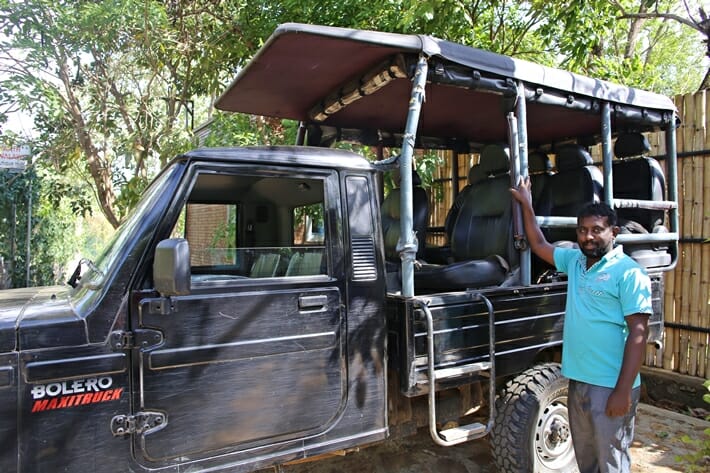
I first visited Udawalawe National Park nearly a decade ago and have gone back several times since. The rate for a 3 hour safari way back when was 4500-5000 Sri Lankan Rupees (approximately US$30 at the time). These days, the rate for a 3 hour safari in Udawalawe is closer to US$45 due to increasing costs and inflation in Sri Lanka. I have had positive experience with Niluka Safari and Ajith Safari , as well as the experienced safari team at Eliyanth Udawalawe .
In addition to the jeep charges you will have to pay an entrance fee to the park itself. Udawalawe National Park is categorized as a “ National Reserve of Category I ” by the Department of Wildlife Conservation in Sri Lanka, so the entrance fee is US$25 per adult tourist and US$15 per child. Tips are discretionary. I usually tip my driver/spotter US$10 if they are knowledgeable about the animals and drive responsibly (no cornering of wild animals).
There are usually a few options for wildlife safaris in Udawalawe National Park:
Half day Udawalawe wildlife safari : the morning safari from 6-9 AM or afternoon safari drive from 3-6 PM. Expect to pay approximately US$45.
7 hour Udawalawe wildlife safari: morning safari from 5 AM-12 PM or afternoon safari drive from 12:30-7 PM. Expect to pay approximately US$60.
Full day wildlife safari in Udawalawe National Park: 5:30 AM-6 PM. Expect to pay approximately US$85.
Prices for Udawalawe safaris generally include the jeep (up to 6 passengers) + driver and hotel pick up and drop off from hotels located within Udawalawe. For pick ups beyond Udawalawe you can also ask the safari company to organize one for you at an extra cost.
What to expect on a wildlife safari in Udawalawe National Park
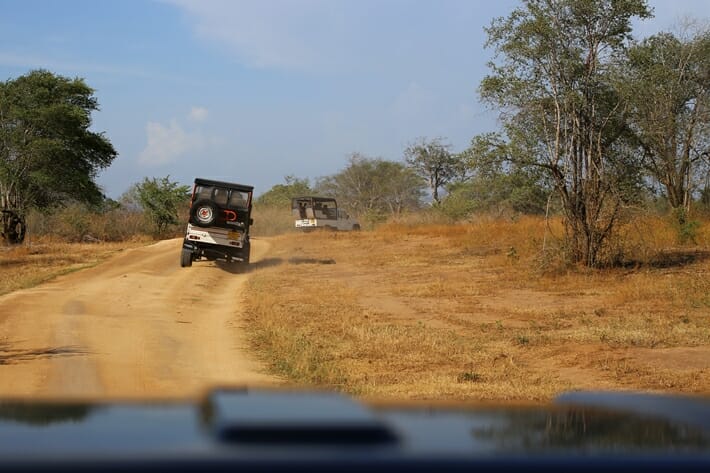
Once you get to the park, you’ll be driven to the ticket office where you need to pay the park entrance fee. If you don’t have any Sri Lankan Rupees on you the office also takes Visa or Mastercard payments. Occasionally you will have a driver and a separate spotter, who is tasked with keeping an eye out for birds, elephants, crocodiles and monkeys.
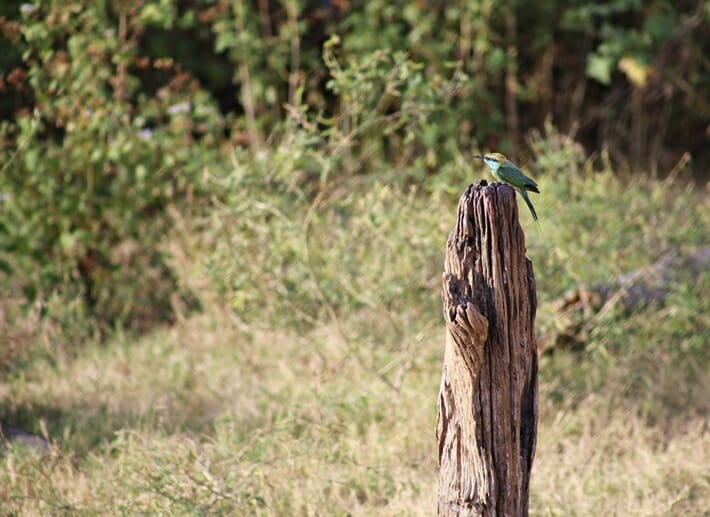
In my case, my driver was the spotter and had 20/20 vision – it was incredible! He would point out faraway animals to me and sometimes it still took me a while to see what he saw, even through my 300 mm zoom lens.
The drive through the park can be bumpy and rough and it’s not uncommon for jeeps to be vying for the best spots when an animal is spotted. You are not allowed to drive up close to the animals or harass them, but I’m sorry to say that some drivers blatantly chased elephants through the park so their guests could get a better photo – don’t be that tourist! In some cases elephants have even been known to “fight back” and attack jeeps.
Don’t encourage your driver to chase or corner wild animals! Click here for 15 things to avoid doing in Sri Lanka!
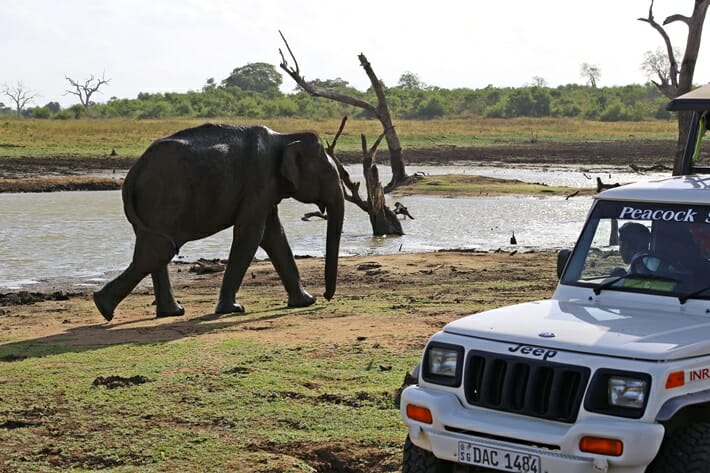
During my time in Udawalawe National Park I saw a small herd of elephants as well as approximately a dozen single elephants (male).
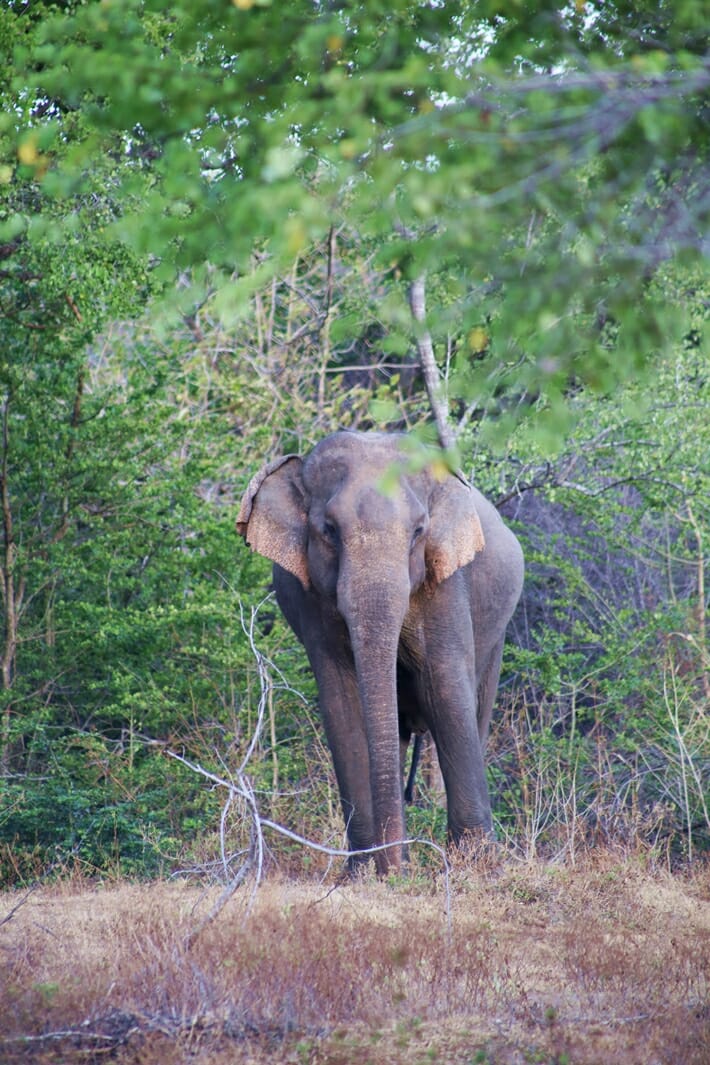
One of the most memorable moments of the safari was when we ventured away from the other jeeps and stumbled upon one lone male elephant.
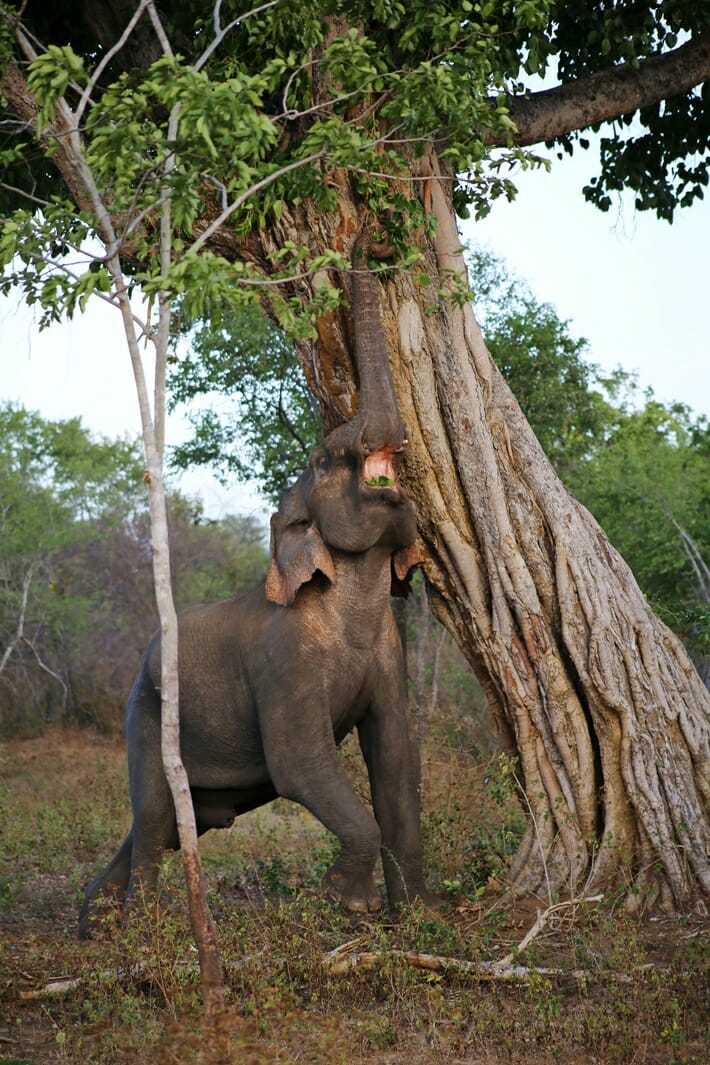
We watched him, silently, for approximately 20 minutes as he walked back and forth gathering leaves – he even reached up high for leaves from a tree!
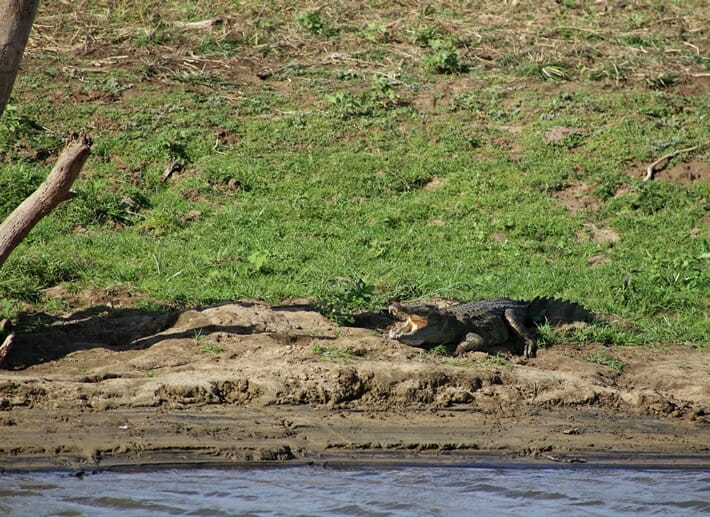
In addition to the dozens of elephants you might also see kingfishers, crocodiles, eagles, buffalo, peacocks, deer and monkeys on an Udawalawe safari drive.
What to bring on your Udawalawe safari
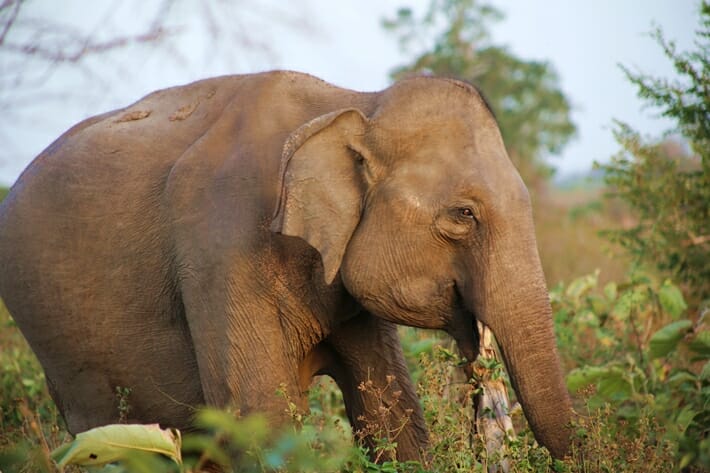
Udawalawe National Park is an amazing destination for wildlife photography. Bring a camera and zoom lens (75 mm-300 mm or even more zoomed in if you have one), you’re unlikely to get any good shots using your smartphone.
Cash for the park entrance fee – bring Sri Lankan Rupees as they don’t always accept US Dollars. They also accept Visa or Mastercard .
Bottled water (or even better, a reusable water bottle ) as it does get very dry and hot in the area. Remember to take all your trash with you!
You shouldn’t need sunscreen as most jeeps are covered at all times – there is one spot where you’re allowed to step outside of the vehicle but that area is also shaded.
A hair tie or cap as the drive can get extremely dusty, I felt like I could crack my hair in half by the end of the safari.
Which national park is better? Udawalawe or Yala?
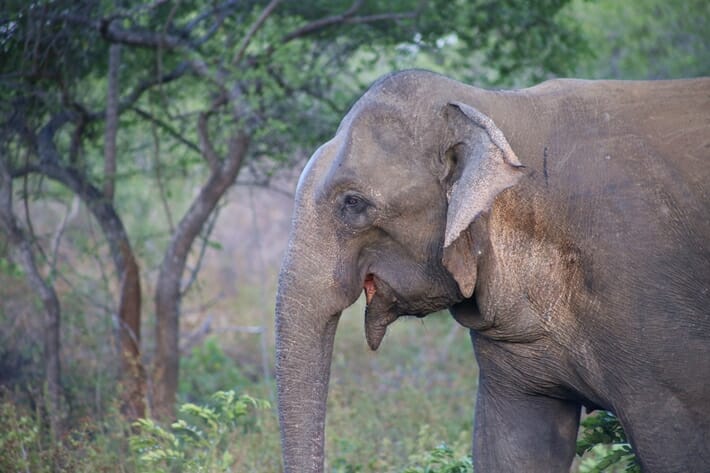
As both national parks are in the Southern Province, many people find themselves debating whether to visit Udawalawe or Yala National Park – which safari in Sri Lanka you go on depends on several factors. I’ve been to both, and I can wholeheartedly say that they are different enough to warrant a visit to both.
If you only have time for 1, then you’ll have to decide what animals you’re hoping to see. If you’re desperate for a chance of spotting a leopard, then Yala National Park is your best bet as it boasts one of the highest leopard densities in the world.
Like all safaris though, a sighting is not guaranteed – I’ve been on several safaris in Yala and have yet to see a leopard. You are also likely to see a few elephants, though not as many as if you were to visit Udawalawe National Park as it is three times the size and animals are more spread out.
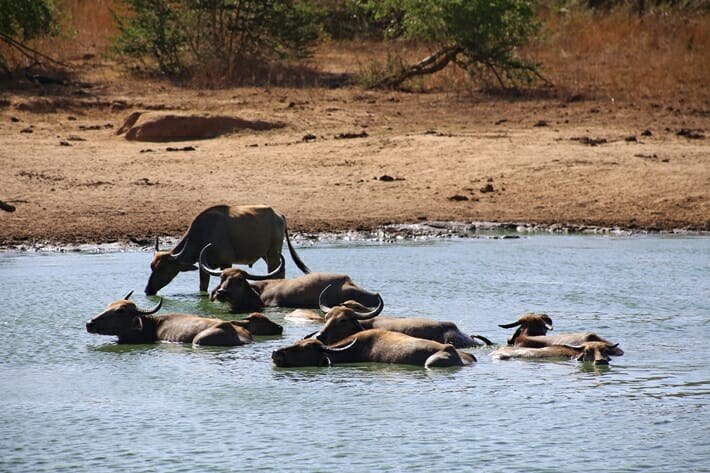
Udawalawe does have leopards (an estimated 1 dozen or so) but the chances of spotting one are extremely rare. If you’re an elephant lover and want a guaranteed sighting of a wild elephant, then I would say head to Udawalawe National Park ; in general, the number of people and jeeps in Udawalawe tends to be lower so the park is much less crowded.
These days, the pricing at Udawalawe is similar to that of Yala National Park so from a cost-perspective it may not not hugely different.
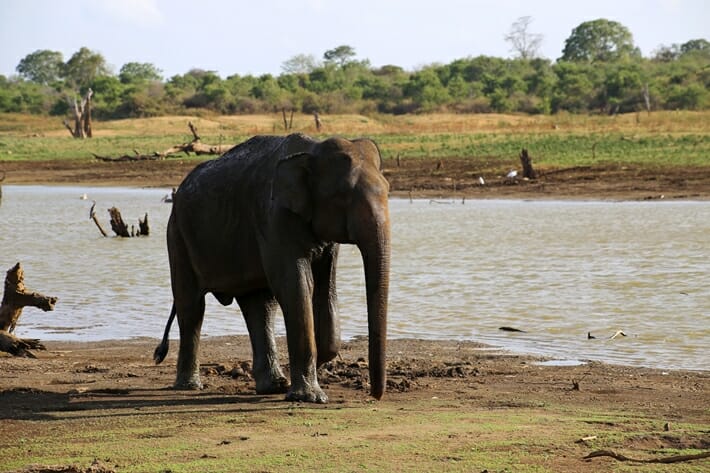
Whichever national park in Sri Lanka you decide to visit, it is a privilege and joy to observe animals in the wild – enjoy the adventure and experience in and of itself!
Ready to go on an Udawalawe safari in Sri Lanka? I have stayed at and recommend Eliyanth Udawalawe or you can also check out other highly-rated accommodation options in Udawalawe here! Alternatively, plan a day trip to Udawalawe National Park from elsewhere along the south coast of Sri Lanka. I recommend Shangri-La’s Hambantota Resort & Spa and Anantara Tangalle (5-star properties with amazing restaurants and facilities within a 1.5 hour drive of Udawalawe), Talalla Retreat (a laid-back beachfront retreat 2 hours from Udawalawe) or Sam & Lola’s in Hiriketiya in Dickwella town (1-bedroom private pool villas within 1.5 hours of Udawalawe).
Visiting Sri Lanka? You might also enjoy these guides:
- Planning a trip to Yala National Park instead? Click here for my guide to going on a safari in Yala
- Obsessed with elephants? Me too! Here are all the best places to see wild elephants in Sri Lanka
- Planning a trip to Sri Lanka? Here are 12 things you should know before visiting Sri Lanka
- Don’t miss my two week itinerary for the Pearl of the Indian Ocean or read this express one week Sri Lanka itinerary if you’re short on time
- Southern Sri Lanka is one of the most beautiful places in the country. Read this guide for more ideas on what to do in Sri Lanka’s deep south
- Looking for more Sri Lanka travel tips and destination guides? Click here for everything you need to help plan your trip to Sri Lanka
- Explore other ethical elephant orphanages, sanctuaries and national parks around the world here
Have you been to Udawalawe National Park or Sri Lanka? What did you think? Share your experience with me in the comments section below!
Pin this for later!
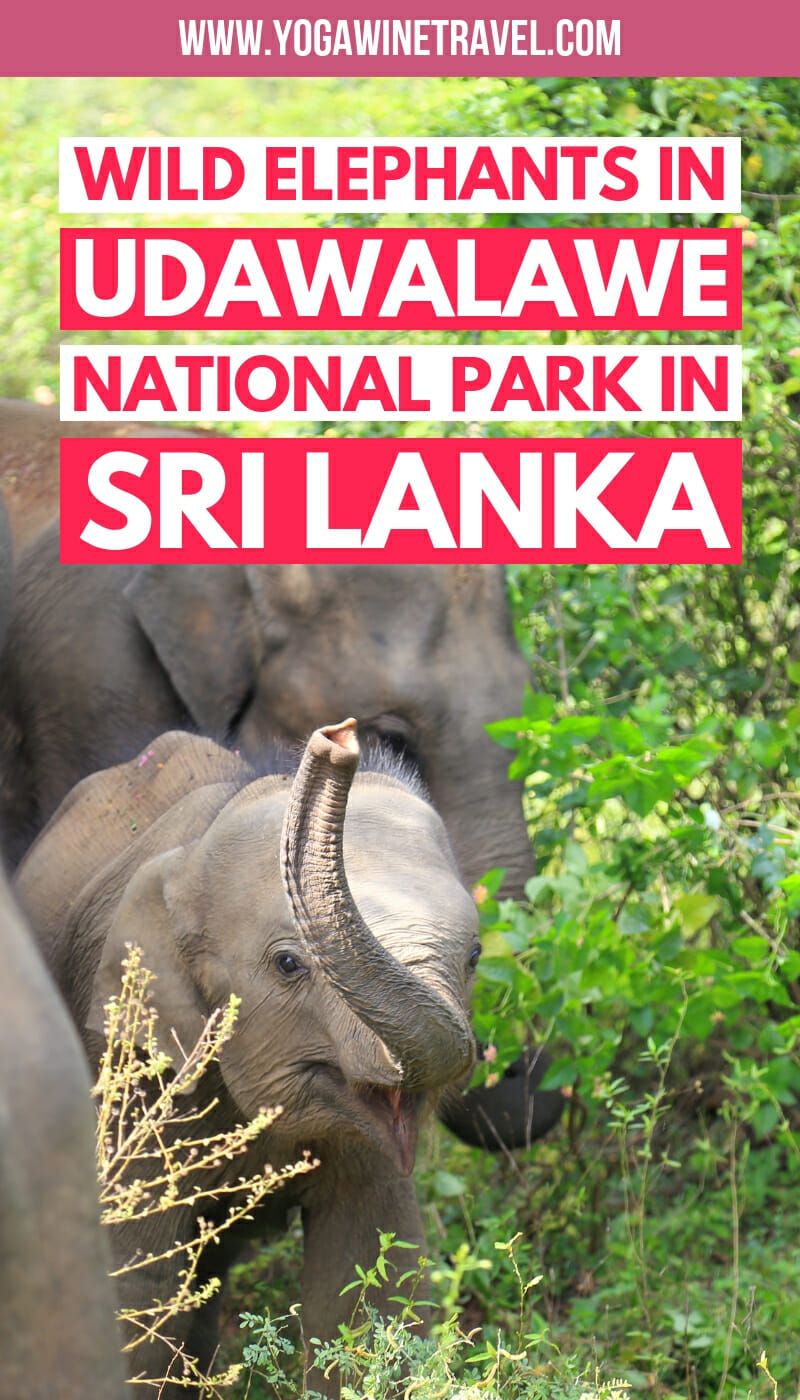
This article contains affiliate links. If you choose to book using these links, I will earn a small commission at no extra cost to you . Thank you for supporting my website by using these links.
Featured video music credit: Summer – Royalty Free Music from Bensound
Share this article!
Enjoyed reading this article? Subscribe to the mailing list!
* Unsubscribe at any time. Your e-mail address will only ever be used to send the occasional Yoga, Wine & Travel newsletter.
Similar Posts
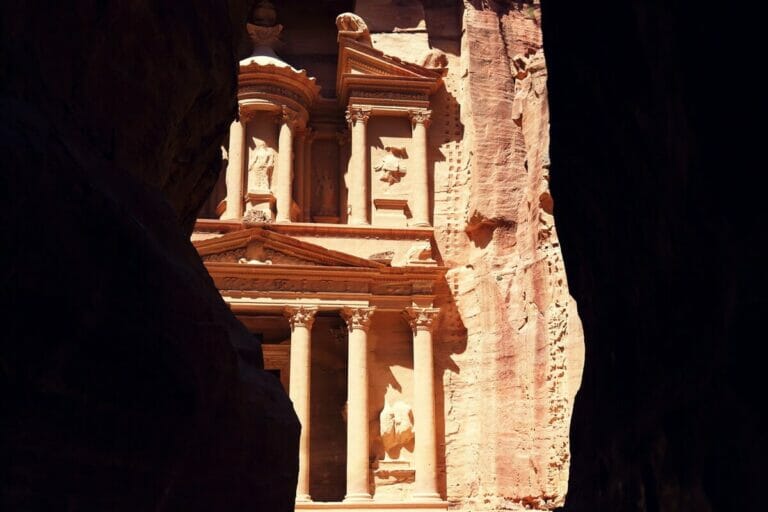
A Practical Guide to Visiting Petra in Jordan (And What to See Beyond the Treasury)
The ancient site of Petra is one of the 7 New Wonders of the World – read on for everything you need to know to plan a perfect visit to Petra! The ruins of Petra is Jordan’s most-visited tourist attraction and also one of the best preserved archaeological sites in the world. Though it’s not…
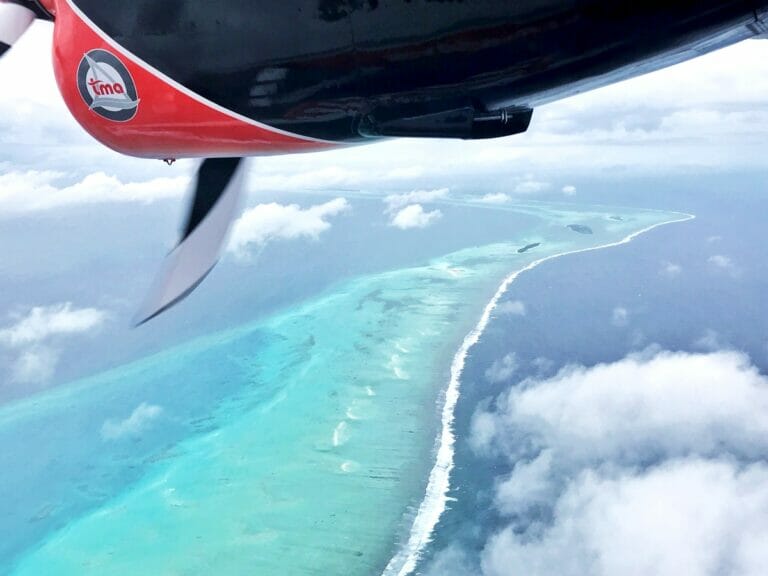
14 Things You Should Know Before Traveling to the Maldives
Heading to this slice of paradise in the Indian Ocean? Here’s what you need to know before you go to the Maldives! Let’s be honest, who hasn’t longed to visit the picture-perfect Maldives? The archipelago is made up of more than a thousand tiny islands surrounded by crystal clear water, and is probably one of…
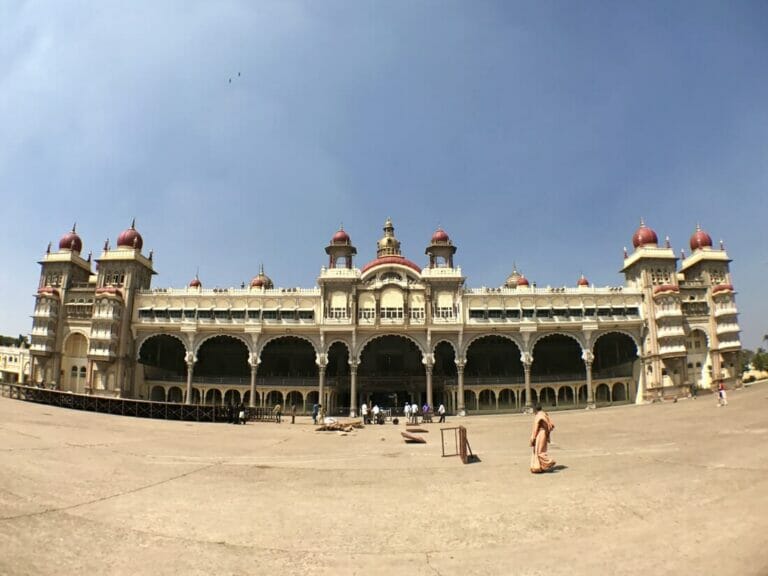
India Travel Guide: What You Need to Know to Plan a Yoga Trip to Mysore
Mysore is located in southern India and is one of the main epicentres of Yoga in the world. It is one of the top Yoga destinations and draws thousands of Yoga lovers to practice, breathe and live Yoga for weeks (even months) at a time. Not only can you get your fill of Yoga, you…
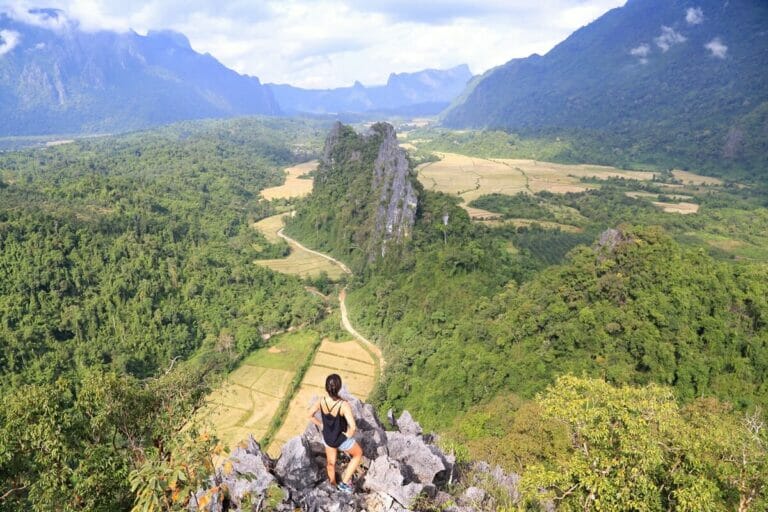
14 Things to Do in Vang Vieng, the Adventure Capital of Laos
Vang Vieng is one of the best places to visit in Laos and a hidden gem in Southeast Asia. Read on for what to do in Vang Vieng and what you might want to skip! A few years ago, I hopped on a 6-hour bus ride from Luang Prabang to Vang Vieng to teach Yoga…
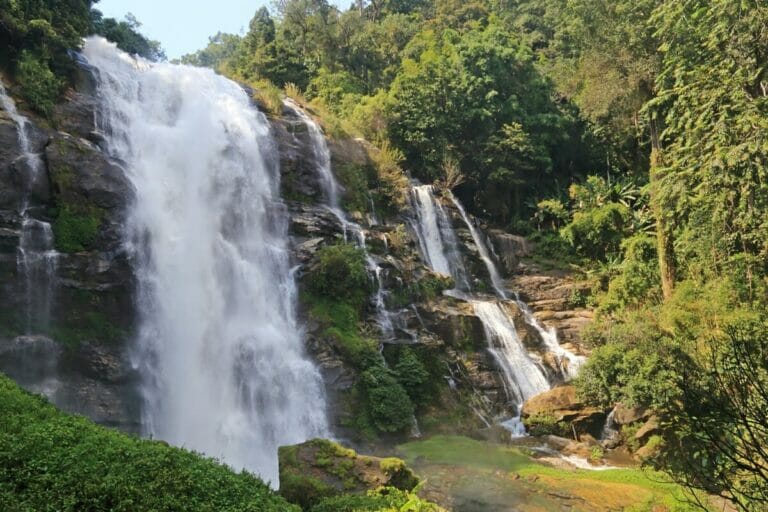
Doi Inthanon National Park in Thailand: A Perfect Chiang Mai Day Trip Destination
Get off the beaten track in Chiang Mai and soak up the stunning views. Read on for how to get from Chiang Mai to Doi Inthanon, what to see in the park and more! Perhaps one of the most underrated things to do in and around Chiang Mai, embarking on a day trip to Doi…
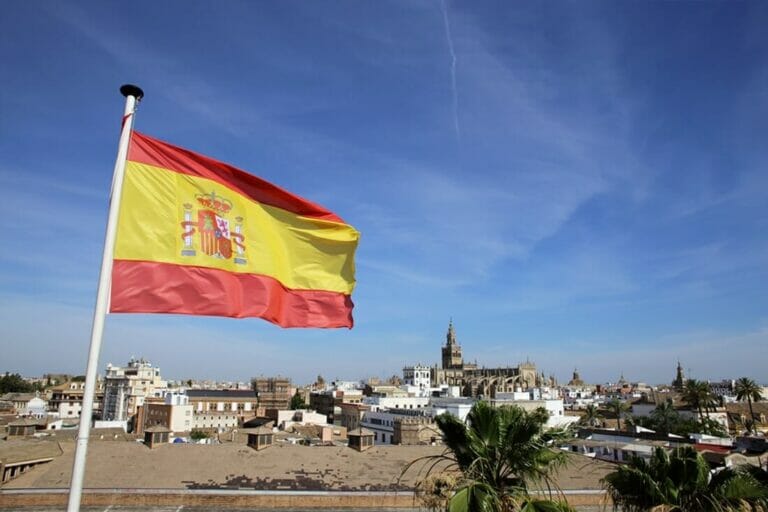
8 Amazing Places to Visit in Andalucia in Southern Spain
Andalucia (or Andalusia) in the south of Spain offers incredible cultural experiences and landscapes. Read on for must-visit places in this region! Andalucia (or Andalusia) is a massive region in the south of Spain known for sprawling mountain regions, beaches and stunning Moorish architecture. It’s one of the best regions to visit in Spain if…
55 Comments
Great post with great pics. I was in Sri Lanka. In Udawalawe National Park I went searching for animals and was lucky like you to see wild elephants. Thanks for sharing this information.
Hi Jyoti, so glad to hear that you found this article helpful and that you enjoyed your time in Udawalawe!
Hi there Can you recommend us the safari companies for uluwalawe. I asked one agent who is taking 75USD per person with pick up and drop( from Jetwing Yala) , tickets, jeep and insurance. Is this fine or is he charging us more
Hi Prerna, that sounds about right because you are asking for pick up and drop off from Yala, which is 2 hours away from Udawalawe. It costs approximately 11,500 LKR (75 USD) for a safari for 2 at Udawalawe. I have used Niluka Safari in the past and were happy with their jeeps/service.
Thanks so much for the post. There will be 4 of us visiting next month and I think we will take your advice and stay at a camp near the park entrance. I definitely think that we should stay there the night before we safari, but would you suggest staying there again after, or would it be reasonable to head to Tangalle after the afternoon safari?
Just curious what the day looks like if we do 2×3 hour safaris. Thanks!!
Thanks for taking the time to read this. The drive time from Udawalawe to Tangalle isn’t long, and the hotels by the coast are probably a tad nicer. I’d recommend getting some rest between the morning and afternoon game drives, and then just leaving Udawalawe in the evening. You should also plan on visiting the Elephant Transit Home to observe one of the feeding sessions – the 12 PM one would probably work best for your schedule! https://www.yogawinetravel.com/visiting-orphaned-baby-elephants-at-the-elephant-transit-home-in-udawalawe-sri-lanka/
Udawalawe national park is an absolute must for Sri Lanka visitors. The experience felt once in a lifetime; elephants (even as young as two months old!) roamed the land along with beautiful birds, reptiles and monkeys.
We are planning to do a safari in Udawalawe, and one in Wilpattu. Do you believe that 3 hours is enough for Udawalawe, or should we plan for a 6 hour visit? We would start very early in the morning (6h00 am).
Than you from Canada!
Hi there, my understanding is that you have to exit the park after 3 hours, and re-enter in the afternoon. I would recommend that you do 2 x 3 hour safaris in Udawalawe rather than a 6 hour safari, especially if you’re hoping to spend some time observing the elephants. Have a great time!
What a comprehensive overview of Udawalawe National Park! I know Sri Lanka was a prime spot for wildlife, specifically elephant watching and I cannot thank you enough for promoting mindful values in your travel posts! I hate the rampant animal abuse that tourists participate all for the sake of a perfect picture! Great trips and if it were me, I’ll take Udawalawe over Yala any day!
Thanks so much for taking the time to read this, Izzy! My hope is that the issue is one of a lack of awareness, rather than choosing to contribute towards animal abuse. Hopefully one day everyone knows the impact of their travel decisions!
I love to see elephants and these are such wonderful wildlife photographs! Enjoyed reading the post. Thanks 🙂
Thank you so much for taking the time to read this Madhurima!
Udawalawe National Park sounds like utter perfection. I love all animals, but elephants hold a special place in my heart. They are so beautiful and majestic and I would love to watch them in their beautiful natural habitat. One ofr my bucket list I think!
I hope you get to visit one of Sri Lanka’s many national parks soon, Sam!
Leave a Reply Cancel reply
Your email address will not be published. Required fields are marked *
This site uses Akismet to reduce spam. Learn how your comment data is processed .
© 2024 Yoga, Wine & Travel. Disclaimer and Website Policies.
Exclusive Member of Mediavine Travel

A Complete Udawalawe National Park Safari Guide For 2023
Taking an Udawalawe National Park safari with kids was the highlight of our Sri Lanka holiday with the kids and one of our top recommendations for things to do in Sri Lanka with kids .
With around 500 resident elephants, an Udawalawe National Park safari is a great choice for a Sri Lankan safari if your kids love elephants.
Udawalawe NP has the largest population of Asian elephants of all of the national parks in Sri Lanka. They come for the abundant supply of water and so on an Udawalawe National Park safari, elephant sightings are all but guaranteed.
Note : It is not widely known yet but in September 2022, the Sri Lankan government increased the entrance fees for Udawalawe National Park. See below for more info.
Before you start reading about safaris in Udawalawe National Park, we wanted to let you know that we have a comprehensive guide to the best safaris in Africa that might interest you.
This post contains affiliate links. Should you click on them, I will earn a small commission at no extra cost to you.
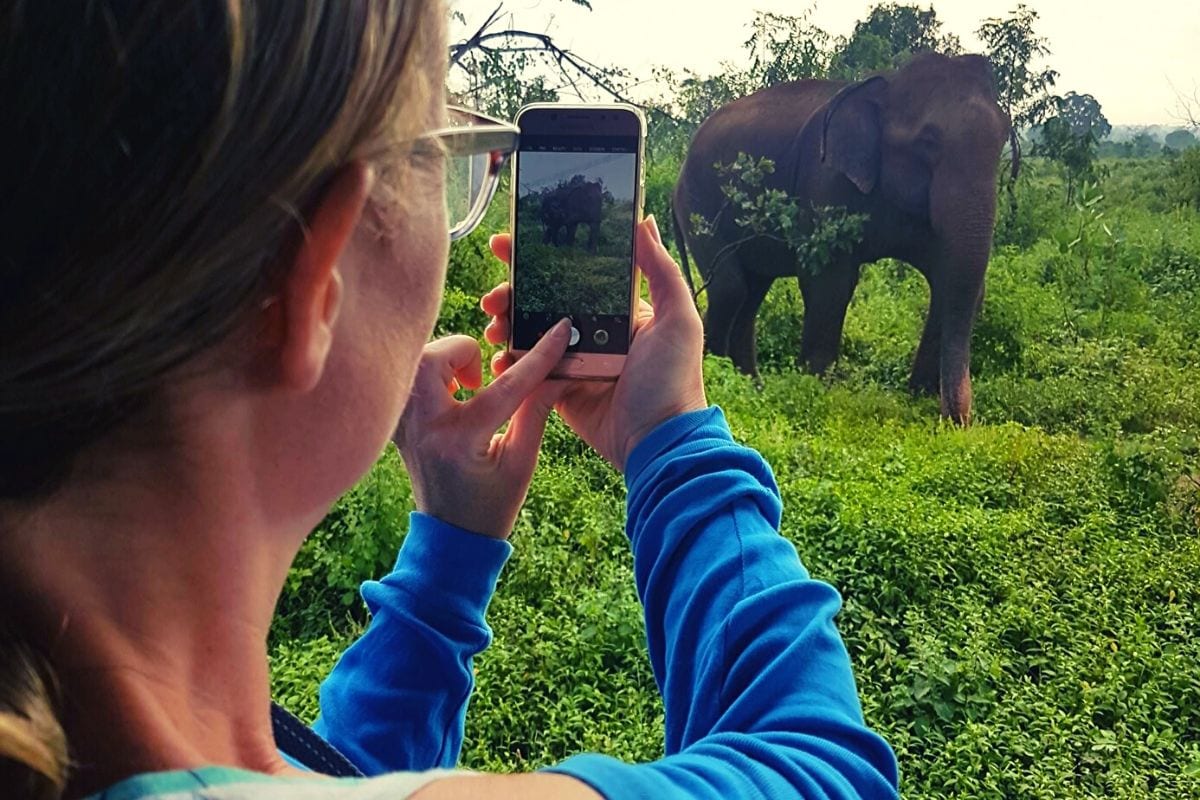
Udawalawe National Park safari
History of Udawalawe National Park
Udawalawe National Park was created in 1972 to provide a habitat for animals displaced by the construction of the Uda Walawe dam.
The damming of the Walawe river created a reservoir and wetlands which attracted many aquatic birds and animals.
It’s backed by the dramatic highlands to the north and made up of 119 square miles of open grassland, with wetlands and dense jungle.
Where is Udawalawe National Park?
Udawalawe National Park lies about 160km southeast of Colombo and 120km northeast of Galle. It’s a relatively easy hop from the Sri Lankan coast if you’re staying on one of the many beautiful Sri Lanka beaches .
According to Google Maps, Udawalawe should be around 2 hours 45 mins from Galle but there’s no accounting for what the traffic will be like.
Our journey from Galle took around 3 hours 30 mins because traffic was quite heavy. We were travelling on a Poya day though which didn’t help.
Every full moon is a public holiday in Sri Lanka (Poya), with more Sri Lankans travelling on the roads. This is something you can check in advance when planning your itinerary.
Some people arrange day trips to visit Udawalawe National Park but we’d recommend staying locally the night before.
The best wildlife spotting opportunities are sunrise and sunset. If you don’t stay locally, you would have to get up in the middle of the night to get to the park for sunrise or get back late to your hotel after a sunset safari.
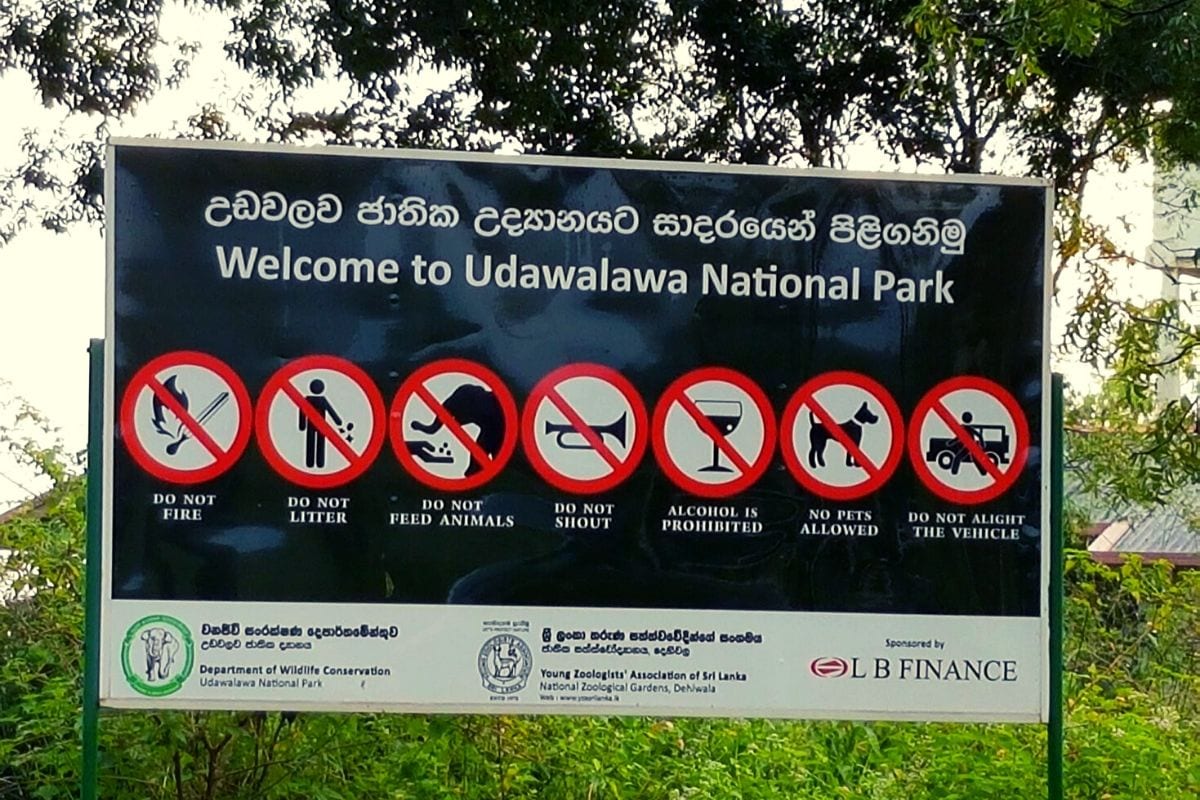
Udawalawe National Park sign
Where to stay in Udawalawe National Park
There are dozens of small Udawalawe hotels or homestays to suit all budgets within 10 minutes drive of the main park entrance. Click here to see our family-friendly Udawalawe hotels guide .
We decided to stay in budget accommodation for this part of our trip because we just needed a bed for the night, arriving late in the afternoon and leaving at 5.30am for our safari.
We stayed at Peacock Riverside which was basic but clean. It had hot water, ceiling fans and mosquito nets over two double beds.
The owner and his wife were very friendly and accommodating but for us, the highlight was the incredible homemade food. It was some of the most delicious food in Sri Lanka but it’s hard to convey just how delicious it was.
The fact that the boys allowed us to pile their plates will have to be proof enough!
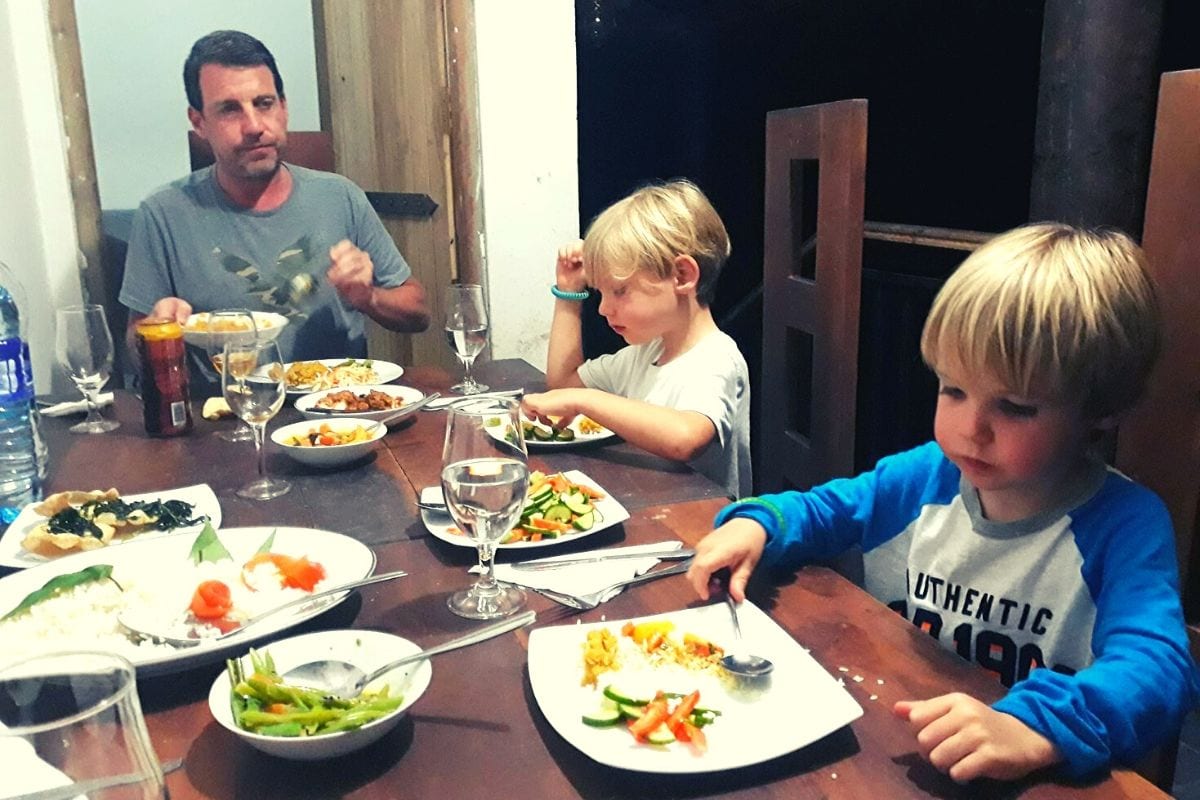
Dinner at the Peacock Riverside in Udawalawe
For more suggestions on where to stay in Udawalawe, check our best family-friendly accommodation in Sri Lanka which gives options to suit every budget.
Best time to visit Udawalawe National Park
The best time to go on a safari in Udawalawe is between December and March and May to September. This is the dry season when there will be less scrub and it’s easier to see elephants.
Access can also be an issue outside of these months, with roads and tracks getting flooded.
We chose to take an Udawalawe National Park safari when we visited Sri Lanka in December because it was the right time of year and it was conveniently on our loop of southern Sri Lanka .
How long is an Udawalawe National Park safari?
You can choose between full-day safaris or half-day safaris in Udawalawe. Half day Udawalawe safaris are probably enough if you have young children as they last about 3 hours.
Any longer and we find the kids start to get restless.
Our guide had no problem cutting ours a little short when the kids started getting hangry. If you have kids with you, we would recommend hiring your own jeep and driver so you can make this decision.
If you’re staying in Udawalawe for a couple of days, you could do a morning and an afternoon safari to see the park at different times of day. See below for details on the cost of a half-day safari.
How to choose an Udawalawe safari guide
If you arrange a jeep through a tour company, please do check the reviews. Some offer a poor experience with inexperienced drivers/spotters.
We had to flag one driver to slow down as he was about to run over a monitor lizard that he hadn’t spotted.
We also spent a little while helping out a family whose driver had got them stuck in a large mud rut and broke their axle trying to get out.
Our driver was not impressed and explained that there are a few cowboy operators out there.
We arranged our jeep and driver through our accommodation. See below for details on the cost of a half-day safari.
If your accommodation can’t arrange a guide, then here are some reputable safari tours you can do.
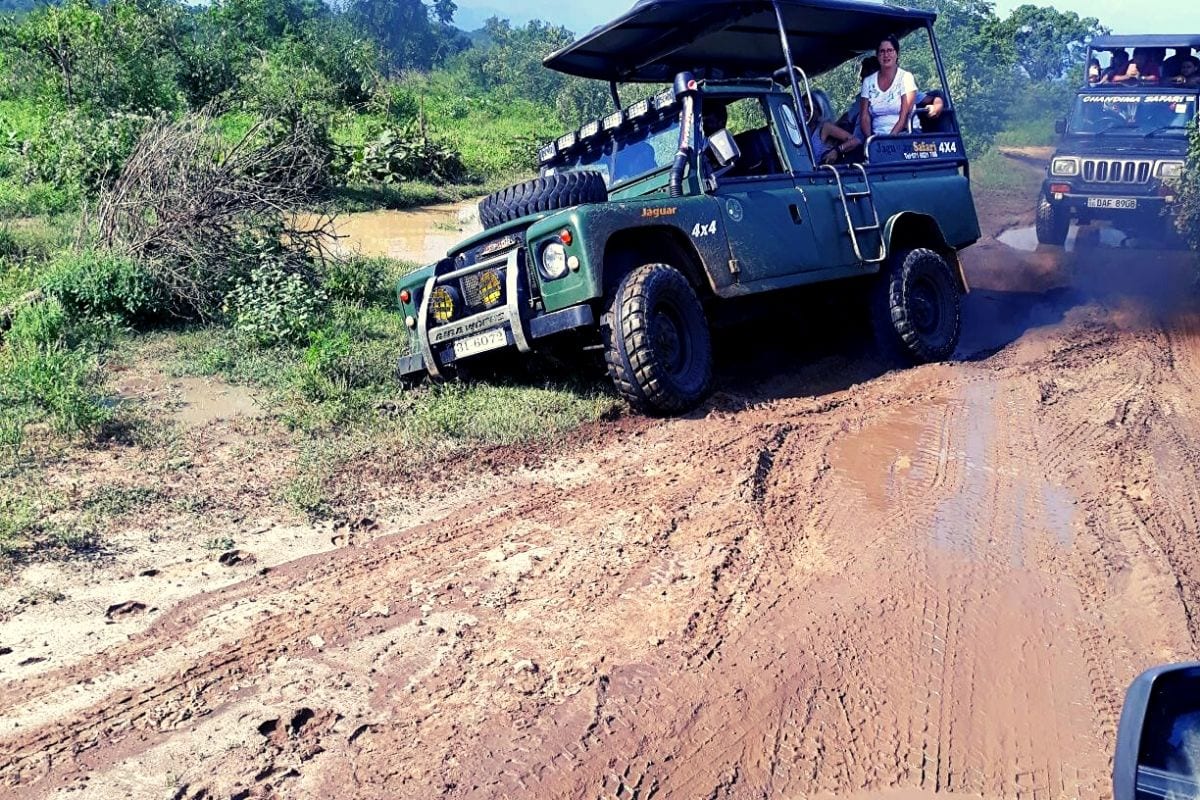
Jeep stuck in the mud at Udawalawe
Our Udawalawe safari experience
We had an early night and set the alarm for 5am. Our host had arranged for the jeep to pick us up at 5.30am.
This allowed time to get to the park, get our tickets (expect to queue or for your driver to queue for up to 15 minutes at the ticket office) and get in for 6am when it opened.
An early start (or dusk safari) gives the best opportunity of seeing wildlife as the animals are most active then (read our guide to wildlife spotting ).
After getting our tickets, we drove straight into the park. The first thing we heard (after getting away from the many other jeeps at the entrance) was the call of peacocks, and very quickly noticed the abundance of bird life to start with.
Within five minutes we saw eagles, peacocks, bee-eaters and many other birds we weren’t familiar with.
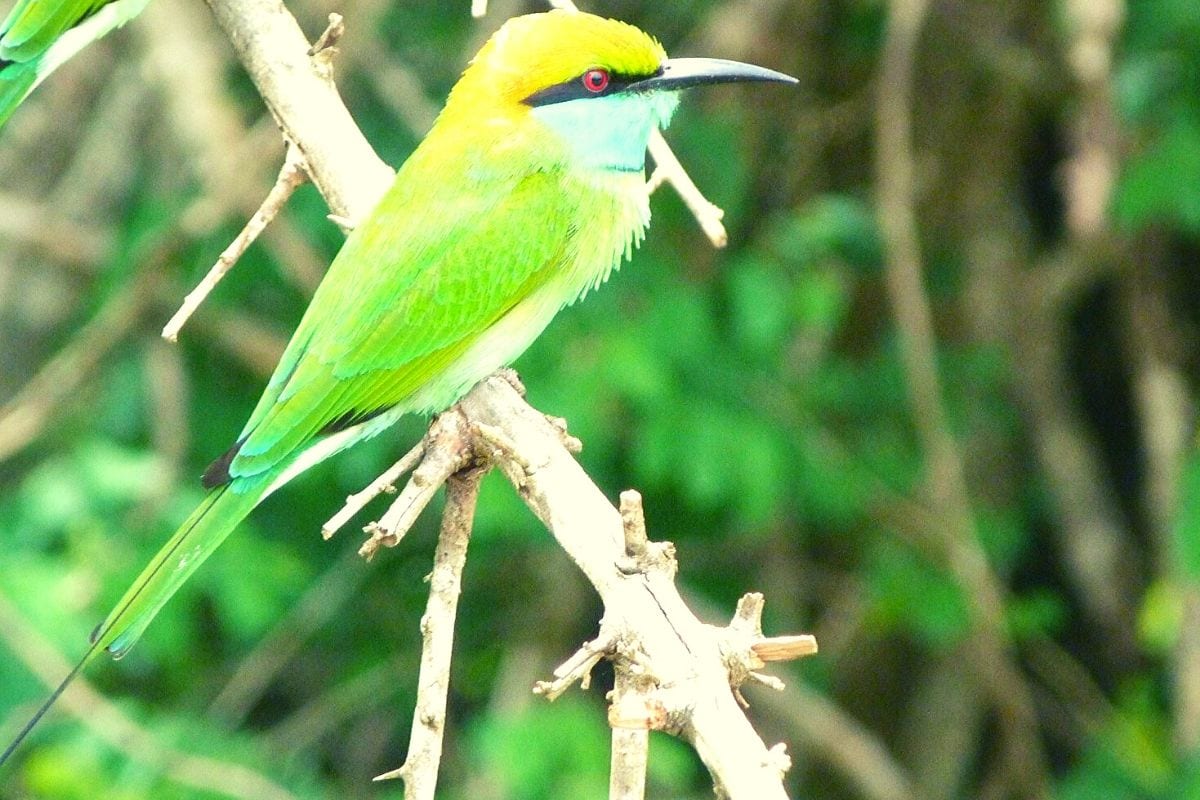
Bee eater in Udawalawe National Park
Our Udawalawe safari did not disappoint on the elephant front either. We saw several individual elephants up close and in the distance.
There were a couple of family groups – including babies and adolescents – hanging around and feeding.

Elephants in Udawalawe National Park
We then headed to the wetland section of the park which surrounds a large lake and is populated with many types of aquatic birds (egrets, cormorants, stork, heron among others).
On the far side of the lake we were told there was a crocodile sunbathing on the shore. Although we had binoculars, we still weren’t sure we could make it out.
It looked like a log! If it was a crocodile, it most certainly wasn’t our best sighting of one.
Some guides have amazing eyesight and will spot things that you may be completely oblivious to.
Kids are also great spotters which is a great reason to take them on safari. Sadly we didn’t spot the elusive leopard, but we knew that this would be unlikely.
For better chances of seeing leopard, you may want to consider heading to Yala National Park , which supposedly has the highest density of leopards of any national park worldwide.
We did indeed see a leopard there, though sadly it was dead and being eaten by a crocodile… but that’s another story.
Udawalawe Safari Costs
Our costs for arranging a safari at Udawalawe were:
- Private jeep with driver/guide – around LKR 4000 for half day (3-4 hours).
- Park entrance fees of $25 per adult and $15 per child (under 6 are free) plus a LKR 250 jeep charge, all plus 15% tax.
- If you are staying overnight in the park, there is a $50 charge per adult and $30 per child.
Please note that new entrance fees were introduced by the Sri Lankan government in September 2022.
You can check here for the most up to date park fees .
Top Tips for taking an Udawalawe National Park safari
Go to the bathroom before setting off as there are no facilities in the park!
To keep the kids interested and engaged, why not print off an animal spotting list. Remember to take a pen.
Interesting animal fact – Sri Lanka has the highest number of deaths from snake bites each year. But don’t worry, unless you are wandering around in the rice paddies or in rural areas at night you are highly unlikely to ever see a snake – much to my boys’ disappointment!
Accommodation around Udawalawe National Park
Booking.com has a wide range of properties available in and around Udawalawe National Park.
We also have a list of accommodation for families near Udawalawe .
If you found this post helpful, why not bookmark it, share it with friends or pin it for later?
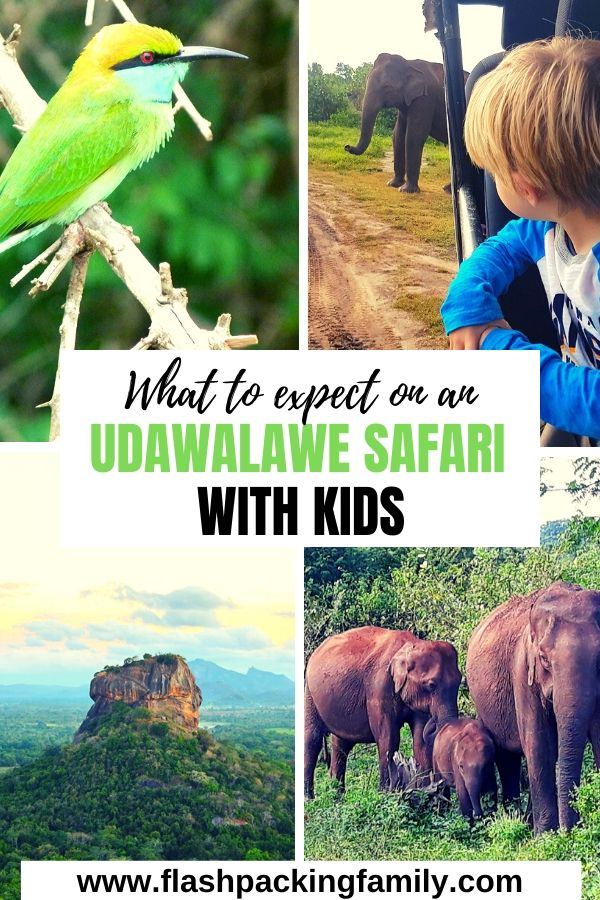
Hi guys, great little blog!!!! We are heading to Sri Lanka in 3 weeks (yay) and planning a morning safari to Udawalawe NP. So excited! Love the photo of the jeep in the mud. Our kids are almost 7 and 4 and quite well travelled. My main worry with Sri Lanka is going from Ella-Kandy on the train. I have read so many horror stories. Did you do this trip? Thanks, Amber
Hi Amber, thanks for the comment… officially our blogs’ first comment :) We have done the Ella-Kandy train ride, but on a previous trip without kids a few years back. I’d recommend booking at least a few days in advance (there were no next day tickets to anywhere from Ella when we were there this Dec), and if you’re travelling with all your bags it will be a real squeeze – the trains on this stretch of line all seem jam-packed with locals and tourists. If you are thinking that it is a long journey (8ish hours), then you could consider doing the most scenic stretch on the train and then getting a driver to pick you up to complete your journey. The views and street food on sale on the trains make it very special though. Have a fantastic trip, and let us know if you have any specific questions or worries!
Just a heads up, the park now costs 43 dollars per person to enter! I just went this morning, it gets a little less per person if you have more in your group! Hadn’t seen anything online about the price increase so just thought to mention it so people aren’t surprised!
Thanks for the heads up. The fees apparently changed in September 2022 but it was very hard to find this info!
Sujie from peacock Riverside is greeting and thanking u for the block. We are staying there to night, after have been reading your review. We also thank you for sharing!!)
Best wishes from the jungle.
That is great to hear – thank you for letting me know Lisa! Enjoy your time there.
Leave a Reply
Leave a reply cancel reply.
Your email address will not be published. Required fields are marked *
We participate in various affiliate marketing programs. Flashpacking Family is a participant in the Amazon Services LLC Associates Program, an affiliate advertising program designed to provide a means for sites to earn advertising fees by advertising and linking to Amazon.com. As an Amazon Associate, we earn from qualifying purchases.
Most popular posts
Guide to visiting Lake Louise, Canada
Jordan itinerary
Sri Lanka’s best beaches
Things to do in Suffolk with kids
Free things to do in London for kids


Elephant Trail
Experience unforgettable wildlife encounters.
Embark on a captivating wildlife adventure at Elephant Trail in Udawalawa, Sri Lanka. Immerse yourself in the natural beauty of the surroundings as you witness majestic elephants in their natural habitat. Our expert guides will lead you on thrilling safari expeditions, allowing you to observe a diverse range of wildlife up close. Unwind in comfortable accommodations, savor delicious local cuisine, and experience the rich cultural heritage of the region.
Hand Picked Rooms
Triple room.
Our triple rooms are the perfect accommodation option for families or groups seeking a comfortabl... Read More
USD. 90.91 /Night
Double room.
Nestled in the heart of nature, our double rooms offer a serene and comfortable haven for y... Read More
USD. 74.75 /Night
Single room.
Experience comfort and tranquility in our Single Room at Elephant Trail in Udawalawa, Sri Lanka.... Read More
USD. 63.97 /Night
Do you want to logout now .
Winter is here! Check out the winter wonderlands at these 5 amazing winter destinations in Montana
- Travel Guide
Elephant Safari At Udawalawe National Park
Published: October 6, 2023
Modified: December 27, 2023
by Ardelia Lavin
- Plan Your Trip
- Travel Destinations
- Travel Tips
Introduction
Welcome to the world of adventure and excitement at Udawalawe National Park, home to one of the most thrilling experiences – the Elephant Safari. Set amidst the lush landscapes of Sri Lanka, this national park offers a unique opportunity to get up close and personal with these magnificent creatures in their natural habitat.
Located in the southern part of the island, Udawalawe National Park spans over 30,000 hectares, making it the perfect sanctuary for a wide variety of wildlife. While it is known for its significant elephant population, the park is also home to numerous other species, including leopards, crocodiles, water buffaloes, and a plethora of avian species. The park’s diverse ecosystems, comprising of grasslands, forests, and wetlands, provide the ideal habitats for these creatures to thrive.
The Elephant Safari is a must-do activity for nature enthusiasts and wildlife lovers alike. It offers a unique opportunity to witness elephants in their natural environment, observe their behavior, and learn more about their conservation efforts. The experience of being just a few meters away from these majestic creatures is truly awe-inspiring and humbling.
Embarking on an Elephant Safari at Udawalawe National Park promises not only an unforgettable encounter with wildlife but also an immersive experience in nature’s playground. As you venture through the park, you’ll be greeted by breathtaking landscapes, serene lakes, and lush greenery, all providing a picturesque backdrop to your adventure.
Whether you’re a seasoned traveler or a first-time visitor to Sri Lanka, the Elephant Safari at Udawalawe National Park is a must-visit destination. It offers a unique opportunity to connect with nature, appreciate the beauty of the animal kingdom, and gain a deeper understanding of the importance of wildlife conservation.
So, pack your bags, put on your adventurous spirit, and get ready to embark on a journey that will leave you in awe of the natural wonders that await you at Udawalawe National Park.
Location of Udawalawe National Park
Udawalawe National Park is nestled in the southeastern part of Sri Lanka, approximately 200 kilometers from the capital city of Colombo. Situated in the Ratnapura and Monaragala districts, this expansive wildlife reserve is easily accessible and attracts visitors from all corners of the globe.
The park’s strategic location makes it convenient to reach by road from major cities and towns in Sri Lanka. If you’re travelling from Colombo, you can take the A4 highway towards Ratnapura and then follow the A18 road that leads directly to the park. The journey from Colombo takes approximately four hours, offering scenic views along the way.
An alternative route is to travel from Kandy, the cultural heart of the country. From Kandy, you can take the A26 road towards Maha Oya and then merge onto the A4 highway that leads to Udawalawe. This route takes approximately three hours and offers picturesque landscapes of the central highlands before reaching the park.
For those who prefer a hassle-free option, there are tour operators that provide guided excursions to Udawalawe National Park. These tours usually include transportation, an experienced guide, and the opportunity to explore the park’s highlights and wildlife.
Once you reach the park entrance, you will have the option to hire a jeep and a knowledgeable safari guide. The park requires visitors to enter with a safari vehicle and a guide to ensure a safe and informative wildlife viewing experience.
It’s important to note that Udawalawe National Park is located in a dry zone of the country, which means the climate can be warm and arid. It’s advisable to bring sunscreen, a hat, and plenty of water to stay hydrated throughout your visit.
Overall, Udawalawe National Park’s convenient location and accessibility make it a popular destination for nature enthusiasts and wildlife lovers seeking an unforgettable safari experience.
Overview of Elephant Safari
An Elephant Safari at Udawalawe National Park offers a unique opportunity to witness these gentle giants in their natural habitat. It is an adventurous and immersive experience that allows visitors to observe the behavior, interactions, and daily routines of elephants up close.
The Elephant Safari takes place in specially designed 4×4 safari jeeps, which are driven by experienced guides who are well-versed in the park’s geography and wildlife. These guides have an in-depth knowledge of elephant behavior and are skilled at spotting these magnificent creatures amidst the park’s vast landscapes.
The safaris usually take place during the early morning or late afternoon when wildlife activity is at its peak. As you embark on the safari, you’ll be greeted by stunning scenery and the prospect of encountering an array of wildlife, not just elephants.
The safaris typically last around 3-4 hours, allowing ample time to explore the different sections of the park and maximize the chances of spotting elephants. While the focus is on elephants, visitors may also have the opportunity to encounter other fascinating wildlife such as leopards, crocodiles, deer, and a variety of bird species.
During the safari, the expert guides will share their knowledge and insights about the elephants’ behavior, feeding habits, social structures, and conservation efforts. This allows visitors to gain a deeper understanding of these incredible creatures and the challenges they face in the wild.
One of the highlights of the Elephant Safari is the chance to witness elephants in their natural habitat. You may observe them grazing on the vast grasslands, bathing in the park’s numerous water bodies, or interacting with their herds. The intimate encounters with these magnificent creatures leave a lasting impression and provide incredible photo opportunities.
Udawalawe National Park is especially renowned for its elephant population, with over 500 elephants inhabiting the park. This makes it one of the best places in Sri Lanka to witness elephants in their natural environment.
Overall, an Elephant Safari at Udawalawe National Park is an unforgettable adventure that offers a unique and up-close experience with elephants. It provides a once-in-a-lifetime opportunity to witness these majestic creatures in their natural habitat while learning about their fascinating lives and the importance of their conservation.
The Experience of Elephant Safari
Embarking on an Elephant Safari at Udawalawe National Park is a captivating and immersive experience that takes you on a mesmerizing journey through the wilderness. It offers a unique opportunity to witness the majesty of elephants and the breathtaking beauty of their natural habitat.
As you venture into the park, the excitement builds as you anticipate your first encounter with these iconic creatures. The experienced guides navigate through the park’s rugged terrain, expertly tracking the movements of the elephants and ensuring the best chances of sightings.
As you approach a herd of elephants, you’ll be awestruck by their sheer size and grace. The sight of these magnificent creatures up close is truly awe-inspiring, evoking a sense of wonder and reverence for nature’s creations.
Throughout the safari, the guides provide fascinating insights into the behavior and social dynamics of the elephants. Learn about the unique family structures, the role of matriarchs, and the intricate communication methods employed by these intelligent creatures.
The experience of observing elephants in their natural habitat is incredibly rewarding. Watch as they gracefully move through the grasslands, flap their ears to cool themselves, or playfully interact with one another. It is a rare and privileged glimpse into the lives of these gentle giants.
The safari not only offers extraordinary sightings of elephants but also provides opportunities to witness other wildlife that call the park home. Keep an eye out for other majestic animals like leopards, sloth bears, deer, and a wide variety of bird species.
As you explore the park, take in the breathtaking landscapes and the serene beauty that surrounds you. Udawalawe National Park boasts stunning lakes, dense forests, and sprawling grasslands, offering an idyllic setting for your safari adventure.
Photography enthusiasts will find the Elephant Safari to be a dream come true. Capture the perfect shot of elephants in their natural habitat, against a backdrop of picturesque scenery. The unique lighting conditions and the unobstructed views provide ample opportunities for capturing stunning photographs.
One cannot forget the sounds and smells that accompany the safari experience. Listen to the rustle of leaves, the calls of birds and animals, and the distant trumpeting of elephants. Immerse yourself in the sights, sounds, and smells of the wild, creating lasting memories and a deeper connection to nature.
Overall, the experience of an Elephant Safari at Udawalawe National Park is a sensory adventure. It offers a rare opportunity to witness the beauty and grandeur of elephants in their natural environment, immersing yourself in the sights, sounds, and emotions of the wild. It is an experience that will leave you with lifelong memories and a newfound appreciation for the wonders of the animal kingdom.
Wildlife Encounters during the Safari
An Elephant Safari at Udawalawe National Park not only offers the chance to witness majestic elephants but also provides the opportunity to encounter a diverse range of wildlife species. As you explore the park’s vast landscapes, keep your eyes peeled for the incredible array of fauna that call this sanctuary home.
Udawalawe National Park is known for its rich biodiversity, making it a haven for nature enthusiasts and wildlife lovers. Apart from elephants, the park is home to several other iconic animal species, including leopards, deer, crocodiles, water buffaloes, and various bird species.
One of the most sought-after sightings during the safari is the elusive leopard. Although spotting a leopard is a rare occurrence, the park’s dense forests and rocky outcrops provide an excellent habitat for these elusive predators. If you’re lucky, you might catch a glimpse of them stealthily moving through the underbrush.
The park is also home to several species of deer, such as the sambar deer and the spotted deer. These graceful animals can often be seen grazing in open meadows or seeking shelter in shaded areas. Capture their elegance as they move with grace and agility through the park’s landscapes.
As you venture close to the park’s water bodies, keep an eye out for the massive mugger crocodiles. These ancient reptiles can often be seen resting on the banks or gliding silently through the water, camouflaged among the vegetation. Witnessing a crocodile up close is a thrilling experience that showcases the park’s incredible biological diversity.
Udawalawe National Park is also a paradise for birdwatchers, with over 200 species of birds recorded. Look out for colorful kingfishers, beautiful peafowls, and graceful egrets as they go about their daily activities. The park’s wetlands attract a variety of waterbirds, offering a stunning spectacle for bird enthusiasts.
During the safari, you’ll likely encounter several other fascinating animals such as sloth bears, wild boars, mongooses, and monitor lizards. Each sighting offers a glimpse into the intricate web of life that thrives in this protected ecosystem.
It’s important to remember that wildlife encounters are unpredictable and can vary depending on factors such as season, time of day, and luck. However, the abundant diversity of Udawalawe National Park ensures that each safari is a unique and thrilling experience.
Whether it’s observing the grandeur of elephants, the stealth of leopards, or the vibrant plumage of birds, the wildlife encounters during an Elephant Safari at Udawalawe National Park are sure to leave you in awe of the natural wonders that exist within this pristine wilderness.
Conservation Efforts at Udawalawe National Park
Udawalawe National Park is not only a haven for wildlife enthusiasts but also a vital hub for conservation efforts. Recognizing the importance of preserving and protecting the park’s rich biodiversity, numerous initiatives have been implemented to safeguard its delicate ecosystems.
One of the primary conservation efforts at Udawalawe National Park is focused on the protection of its flagship species, the elephants. The park authorities work closely with local communities and international organizations to monitor and manage the elephant population. This includes carrying out research on their behavior, migratory patterns, and ecological significance.
The park also collaborates with various governmental and non-governmental organizations to mitigate human-elephant conflict. This involves implementing measures to minimize crop and property damage and to ensure the safety of both humans and elephants.
Another crucial aspect of conservation at Udawalawe National Park is the preservation and restoration of vegetation. The park’s grasslands, forests, and wetlands are essential habitats for wildlife, providing them with food, shelter, and breeding grounds. Reintroducing native plants, controlling invasive species, and implementing sustainable land management practices are key strategies to maintain the park’s ecological balance.
Efforts are also underway to conserve the diverse birdlife of Udawalawe National Park. The park serves as an important habitat for both resident and migratory bird species. Conservation initiatives include monitoring bird populations, protecting nesting sites, and promoting awareness among locals and visitors about the significance of birds in the ecosystem.
Community involvement is a vital component of conservation efforts at Udawalawe National Park. Local communities play an integral role in sustainable resource management. Through education, awareness programs, and the creation of alternative livelihood opportunities, the park works towards building a strong partnership with the communities, promoting their active participation in conservation activities.
In recognition of its conservation efforts, Udawalawe National Park has been designated as a UNESCO Biosphere Reserve. This prestigious status highlights the park’s commitment to environmental sustainability, biodiversity conservation, and community engagement.
The park authorities also recognize the importance of ecotourism in supporting conservation efforts. By promoting responsible tourism practices, such as minimizing disturbance to wildlife, adhering to designated trails, and respecting park regulations, visitors contribute to the long-term preservation of the park’s natural heritage.
Overall, the conservation efforts at Udawalawe National Park are a testament to the commitment of the park authorities, local communities, and various organizations towards protecting the park’s invaluable ecosystems. Through collaborative action and sustainable practices, Udawalawe National Park strives to ensure the long-term conservation of its rich biodiversity for future generations to cherish and enjoy.
Best Time to Visit Udawalawe National Park
Planning your visit to Udawalawe National Park requires careful consideration of the best time to experience its abundant wildlife and picturesque landscapes. While the park is open year-round, certain seasons offer more favorable conditions for a memorable safari adventure.
The dry season, which runs from May to September, is widely regarded as the best time to visit Udawalawe National Park. During this period, the vegetation is relatively sparse, making it easier to spot wildlife as they gather around water sources. The lack of rainfall also means that roads and trails are more accessible, ensuring smooth travel within the park.
Typically, the months of July and August mark the peak of the dry season, making it an ideal time for wildlife enthusiasts. It’s during this time that animals, including elephants, gather in larger numbers around waterholes, providing excellent opportunities for sightings and photographic moments.
However, it’s important to note that the dry season also coincides with high tourist activity. The park can get crowded, especially during weekends and public holidays. To avoid the crowds, it’s advisable to plan your visit for weekdays or consider an early morning or late afternoon safari when tourist numbers are relatively lower.
On the other hand, the wet season, which falls between October and January, brings a different charm to Udawalawe National Park. While the rainfall can make the vegetation lush and vibrant, it also makes some parts of the park inaccessible due to muddy conditions. However, the wet season offers a unique opportunity to witness the park’s transformation, with breeding and nesting activities in full swing.
During the wet season, the park bursts with new life as flowers bloom, birds engage in courtship displays, and elephants move through the refreshing greenery. Although wildlife sightings may not be as frequent as during the dry season, the lush landscapes and the dramatic skies provide a striking backdrop for your safari adventure.
It’s worth noting that Udawalawe National Park remains open even during the monsoon season, but it is advisable to exercise caution and check the weather conditions before planning your visit. Heavy downpours can make some areas prone to flooding, affecting accessibility and wildlife sightings.
The shoulder seasons of February to April and September also offer favorable conditions for a visit to Udawalawe National Park. During these periods, the weather is relatively pleasant, and tourist numbers are lower compared to the peak months. Wildlife sightings are still possible, although they may require more patience and luck, as animals are more dispersed and vegetation is denser.
Ultimately, the best time to visit Udawalawe National Park depends on your preferences and priorities. Whether you choose the dry season for optimal wildlife viewing or the wet season for a unique perspective on the park’s ecosystem, each season offers its own rewards and surprises for any nature enthusiast.
Tips for a Successful Elephant Safari
Embarking on an Elephant Safari at Udawalawe National Park can be an exciting and memorable experience. To make the most of your safari adventure and ensure a successful outing, consider these helpful tips:
- Choose the right time: The dry season, particularly the months of July and August, offers the best chances of observing wildlife, including elephants. Try to avoid weekends and public holidays when the park can be crowded.
- Plan your timing: Book an early morning or late afternoon safari for optimal wildlife sightings. Animals tend to be more active during these times, and the lighting provides fantastic photo opportunities.
- Dress appropriately: Wear lightweight and breathable clothing in neutral colors to blend in with the surroundings. Don’t forget a hat, sunglasses, and sunscreen to protect yourself from the sun.
- Bring the right equipment: Bring a pair of binoculars to enhance your wildlife viewing experience. A camera with a zoom lens is essential for capturing close-up shots of elephants and other animals.
- Stay silent and still: During the safari, it’s important to remain quiet and avoid sudden movements. This will prevent startling the animals and allow for better wildlife encounters.
- Observe from a safe distance: Respect the animals’ space and never attempt to touch or feed them. Maintain a safe distance from elephants and follow the instructions of your safari guide for a safe and responsible experience.
- Listen to your guide: The safari guides are experienced and knowledgeable about the park’s wildlife. Listen to their instructions, follow their advice, and ask questions to learn more about the animals and their behaviors.
- Be patient and observant: Wildlife encounters can be unpredictable, so patience is key. Keep your eyes peeled for movement, unusual sounds, or signs of animals in the distance. It’s the unexpected moments that often lead to the most memorable sightings.
- Stay hydrated and bring snacks: It’s essential to drink plenty of water during the safari to stay hydrated, especially in the warm climate. Pack some snacks to keep your energy levels up throughout the adventure.
- Respect the environment: Follow the park’s rules and regulations and avoid littering. The park’s pristine beauty relies on responsible visitors who leave no trace behind.
By following these tips, you can enhance your Elephant Safari experience and increase your chances of having memorable encounters with elephants and other wildlife at Udawalawe National Park. Prepare yourself for an incredible journey into the heart of nature, where the wonders of the animal kingdom await.
Embarking on an Elephant Safari at Udawalawe National Park is an experience that will leave you mesmerized and in awe of the natural wonders that inhabit this sanctuary. From the majestic elephants to the diverse array of wildlife, this national park offers a captivating safari adventure that will leave an indelible mark on your soul.
Whether you choose to visit during the dry season for optimal wildlife sightings or the wet season to witness the park’s transformation, Udawalawe National Park promises endless surprises and breathtaking moments. As you journey through the park’s landscapes, the vibrant flora and fauna will captivate your senses, transporting you to a world where nature reigns supreme.
The conservation efforts at Udawalawe National Park highlight the commitment to preserve and protect the invaluable ecosystems that make this park a haven for wildlife. A visit to this sanctuary not only provides an unforgettable experience but also supports the crucial efforts aimed at safeguarding the rich biodiversity and promoting sustainable practices.
As you witness the elephants gracefully roaming their natural habitat, the captivating beauty of the park, and the harmonious coexistence of various species, you’ll gain a deeper appreciation for the delicate balance of nature. The Elephant Safari at Udawalawe National Park not only brings you closer to these gentle giants but also offers a profound connection to the importance of wildlife conservation.
So, pack your bags, don your safari gear, and prepare yourself for an adventure like no other. Udawalawe National Park and its Elephant Safari await, ready to transport you to a world of enchantment, natural splendor, and unforgettable encounters. Immerse yourself in the wild, marvel at the wonders of the animal kingdom, and create memories that will last a lifetime.

- Privacy Overview
- Strictly Necessary Cookies
This website uses cookies so that we can provide you with the best user experience possible. Cookie information is stored in your browser and performs functions such as recognising you when you return to our website and helping our team to understand which sections of the website you find most interesting and useful.
Strictly Necessary Cookie should be enabled at all times so that we can save your preferences for cookie settings.
If you disable this cookie, we will not be able to save your preferences. This means that every time you visit this website you will need to enable or disable cookies again.
Udawalawe: National Park Safari & Elephant Transit Home Tour
Set out on an unforgettable adventure with the Udawalawe National Park Safari & Elephant Transit Home Tour. As visitors step into the realm of Udawalawe National Park, they are greeted by the majestic presence of wildlife in their untouched habitat, creating a sense of awe and wonder.
The guided journey through this natural sanctuary not only promises thrilling encounters with diverse animals but also offers a heartwarming opportunity to connect with baby elephants at the transit home.
But, what lies beyond these initial encounters is a tale of conservation efforts and the delicate balance between man and nature that unfolds throughout the tour.
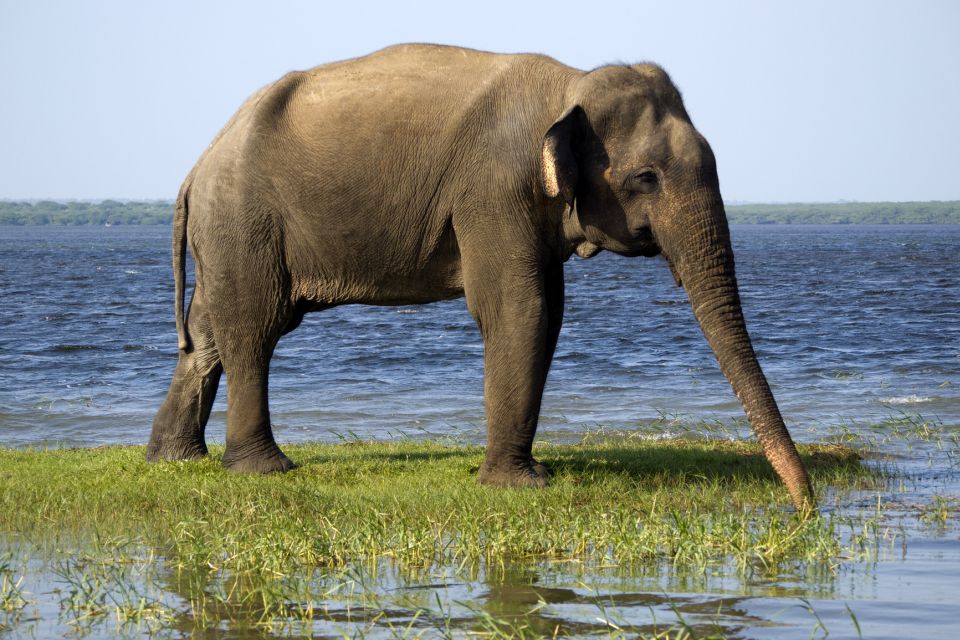
- Witness local wildlife in their natural habitat on a 4X4 Jeep safari
- Interact with baby elephants at the Elephant Transit Home
- Spot diverse wildlife like buffalos , deer , and birds
- Enjoy guided commentary, hotel transfers , and a 4-hour safari experience
Here's some more nearby activities we've reviewed
- From Ella: All Inclusive Udawalawe National Park Safari
- Udawalawe National Park Afternoon or Morning Safari
Activity Details
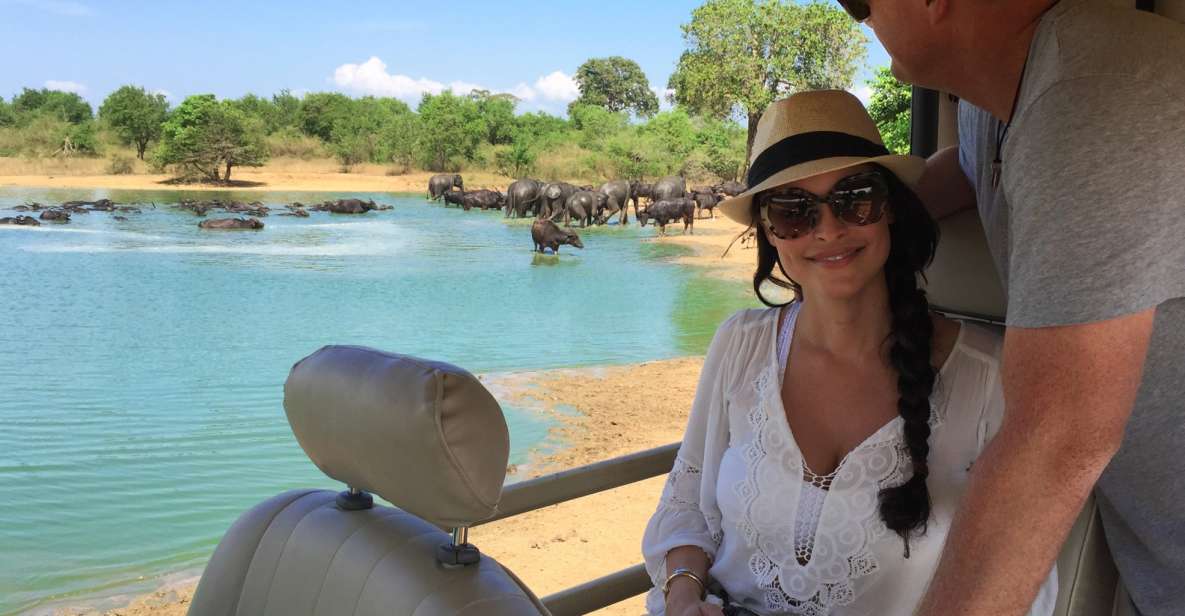
Set out on an exhilarating journey through the Udawalawe National Park Safari and Elephant Transit Home tour to witness captivating wildlife encounters in their natural habitat.
The tour offers a unique opportunity to observe diverse wildlife, including elephants , buffalos , deer , boars , snakes , butterflies , and birds.
Visitors can witness conservation efforts firsthand by interacting with baby elephants at the Elephant Transit Home, supporting the rehabilitation and release of these majestic creatures into the wild.
This experience not only provides unforgettable wildlife encounters but also contributes to the preservation of endangered species.
The tour includes a 4×4 Jeep safari through Udawalawe National Park, ensuring a thrilling adventure while learning about conservation initiatives to protect these animals for future generations.
Experience Highlights
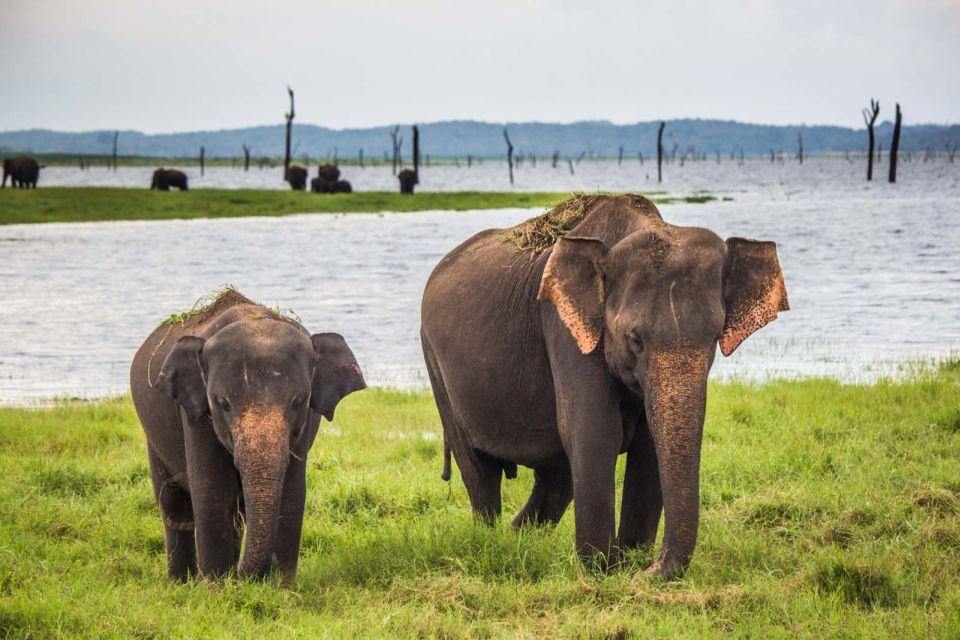
Delight in close encounters with wild elephants, crocodiles , jackals , and a variety of other creatures during the Udawalawe National Park Safari & Elephant Transit Home Tour. This unique experience highlights the captivating wildlife encounters that await visitors in their natural habitats.
Witnessing these majestic animals up close not only provides an unforgettable adventure but also raises awareness about the importance of conservation efforts to protect these species. The tour offers a glimpse into the intricate ecosystems of Udawalawe, showcasing the beauty of nature and the delicate balance between its inhabitants.
Safari Tour Details
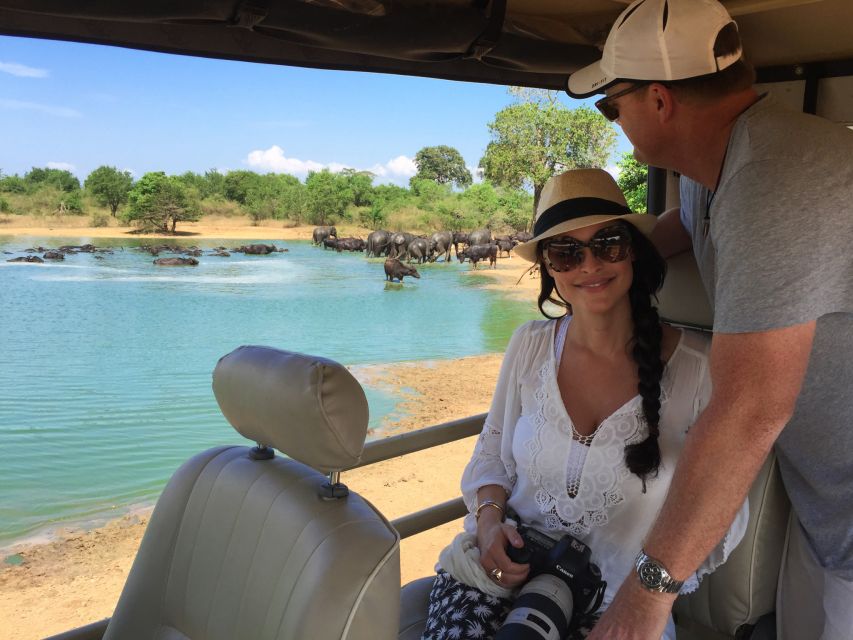
Explore the Udawalawe National Park on an exhilarating 4×4 Jeep safari to discover a diverse range of wildlife species in their natural habitat. The safari tour includes a unique opportunity to interact with baby elephants at the Elephant Transit Home, where you can witness these gentle giants up close.
As you traverse through the park, keep an eye out for wild animals like buffalos, deer, and boars roaming freely. Udawalawe is renowned for its wildlife diversity , offering sightings of various creatures including snakes , butterflies , and a myriad of bird species.
The safari concludes with a return transfer to your pickup location, ensuring a seamless and memorable wildlife experience in this picturesque Sri Lankan landscape.
Customer Reviews
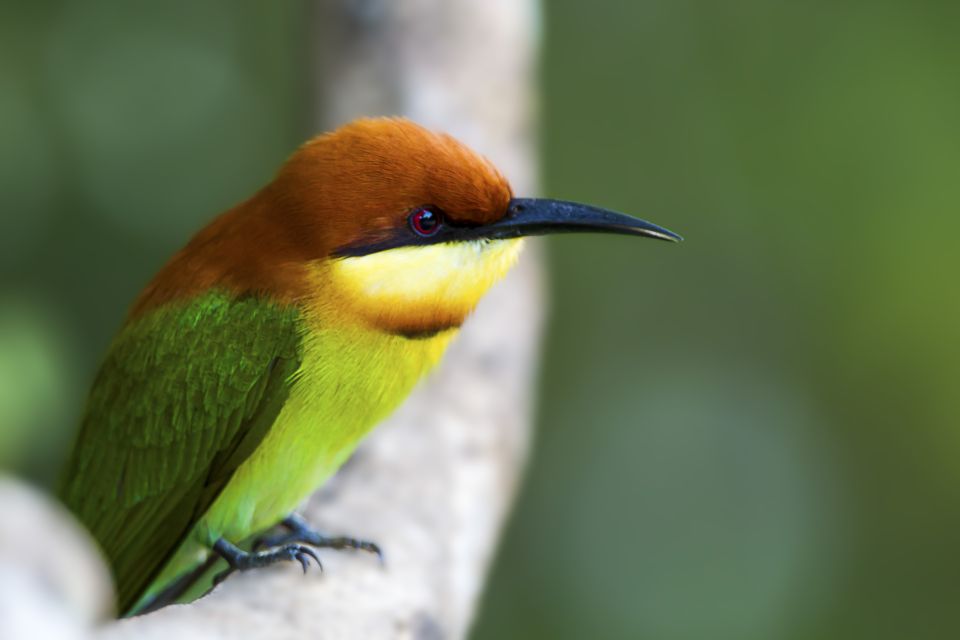
Customers who embarked on the Udawalawe National Park safari and Elephant Transit Home tour have shared their feedback and experiences, highlighting the exceptional wildlife sightings and informative guidance provided throughout the adventure.
Many visitors were amazed by the elephants’ behavior observed at the Elephant Transit Home, where they witnessed these majestic creatures up close. The tour also offered fantastic wildlife photography opportunities , allowing guests to capture stunning images of elephants, buffalo , crocodiles , and various bird species in their natural habitat.
The informative guides not only shared interesting insights but also ensured that participants felt engaged and knowledgeable about the diverse wildlife present in Udawalawe National Park. The positive reviews and recommendations from customers emphasize the unforgettable experiences gained during this safari tour.
General Information
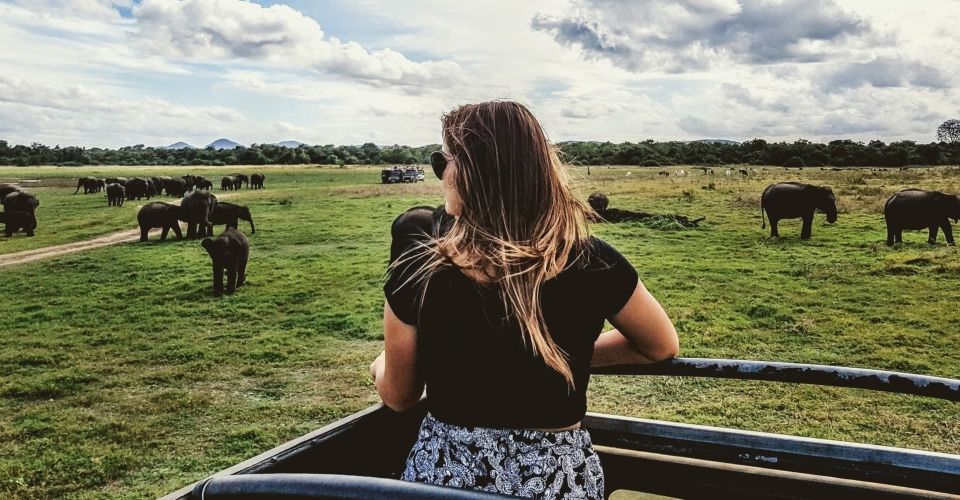
Travelers can expect comprehensive details about the Udawalawe National Park safari and Elephant Transit Home tour. The activity lasts approximately 4 hours and includes encounters with a variety of wildlife such as elephants, crocodiles, jackals , buffalos, deer, boars, snakes, butterflies, and birds.
Visitors can witness these animals in their natural habitat while on a 4×4 Jeep safari. Plus, there’s an opportunity to interact with baby elephants at the Elephant Transit Home, contributing to wildlife conservation efforts.
The tour provides hotel pick-up and drop-off for convenience, and customer feedback has been positive, with ratings averaging 4.4 out of 5. Insights from visitors highlight the informative guides, wildlife sightings , and overall safari experience.
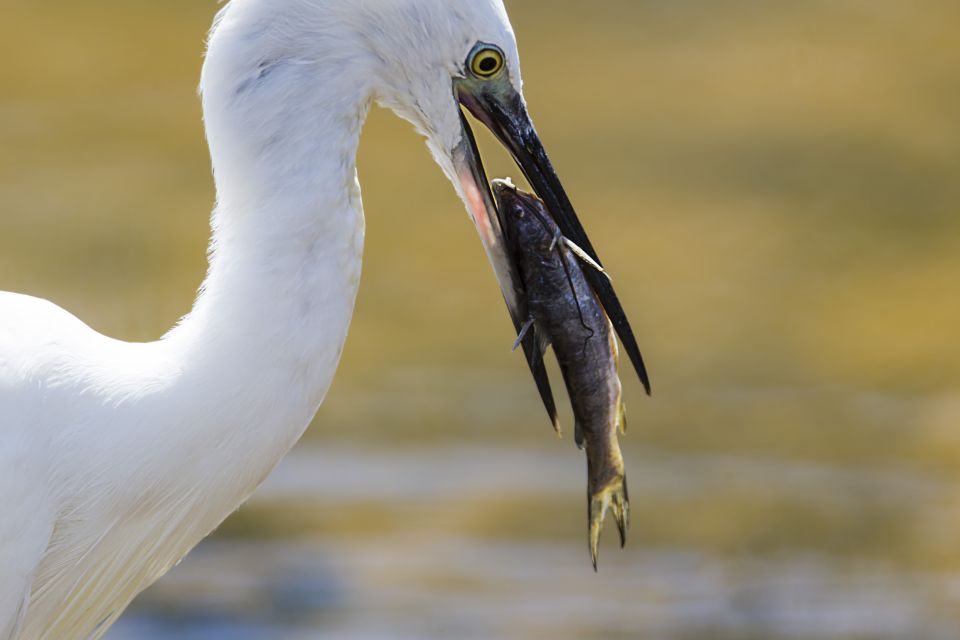
Navigating to Udawalawe National Park and the Elephant Transit Home is straightforward with clear road signs leading visitors to these wildlife destinations in the Eastern Province of Sri Lanka. When planning your journey, keep in mind the following tips:
GPS Coordinates: Inputting the coordinates (6.4761° N, 80.8891° E) into your GPS device ensures accurate directions.
Local Guides: Hiring a local guide can provide insights into hidden paths and shortcuts for a more immersive experience.
Online Maps: Utilize online maps like Google Maps for real-time traffic updates and alternative routes.
Common questions
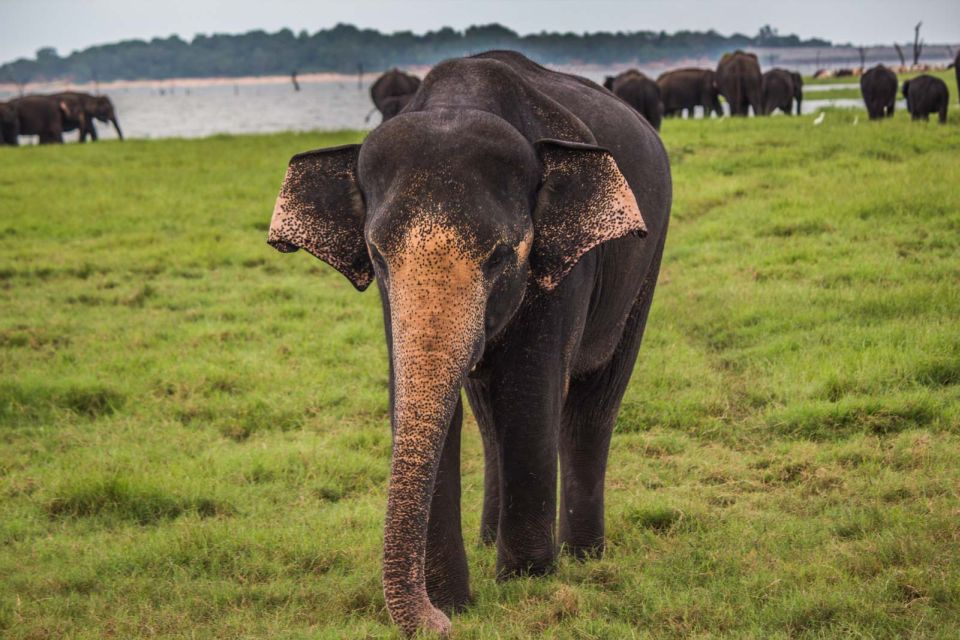
Are There Any Age Restrictions for Participating in the Udawalawe National Park Safari & Elephant Transit Home Tour?
Age restrictions do apply for safety reasons on the Udawalawe National Park Safari & Elephant Transit Home Tour. Detailed safety measures ensure a memorable experience for all participants, with specific guidelines for different age groups in place.
What Is the Best Time of Day to Spot Wildlife During the Safari Tour?
In the wild, wildlife behavior varies throughout the day, impacting photography opportunities. Early mornings or late afternoons are ideal for animal sightings due to cooler temperatures and increased activity levels, enhancing the safari experience.
Are There Restroom Facilities Available During the Tour?
Restroom facilities are available during the tour for convenience. Tour logistics ensure easy access to facilities when needed. Visitors can rest assured that comfort and convenience are considered throughout the safari experience.
Is There a Maximum Number of Participants Allowed on the Safari Tour?
The safari tour accommodates a maximum group size per vehicle, ensuring an intimate experience. Reservation policy allows flexibility with advanced booking options. Visitors can enjoy a personalized adventure while witnessing wildlife in their natural habitat.
Are There Any Opportunities for Interaction With Local Communities or Cultural Experiences Included in the Tour?
Visitors can engage in local interactions and cultural experiences during the tour. This includes opportunities to interact with indigenous communities, participate in traditional activities, and learn about the region’s heritage through guided experiences led by knowledgeable locals.
Here's more of our most recent tour reviews happening neaby
- From Ella: Udawalawe Safari With Elephant Transit Home
- Udawalawe Wild Safari Tours 10 Hours Safari
- Udawalawa: Udawalawa National Park Safari Tour
- Tangalle/Hiriketiya: Half-Day Udawalawe Safari Tour in a 4×4
- Udawalawe: Full-Day Safari Experience With Lunch
- Ella: Shuttle to Mirissa/Galle/Hikkaduwa & Udawalawa Safari
- Galle/Unawatuna/Mirissa: Udawalawe Safari
- Udawalawe National Park Full Day-10 Hours All Inclusive
- Day With Elephants at Udawalawe National Park & Transit Camp
- Hambantota: Udawalawe Safari and Elephant Transit Home Trip
- Udawalawa National Park: Private Safari
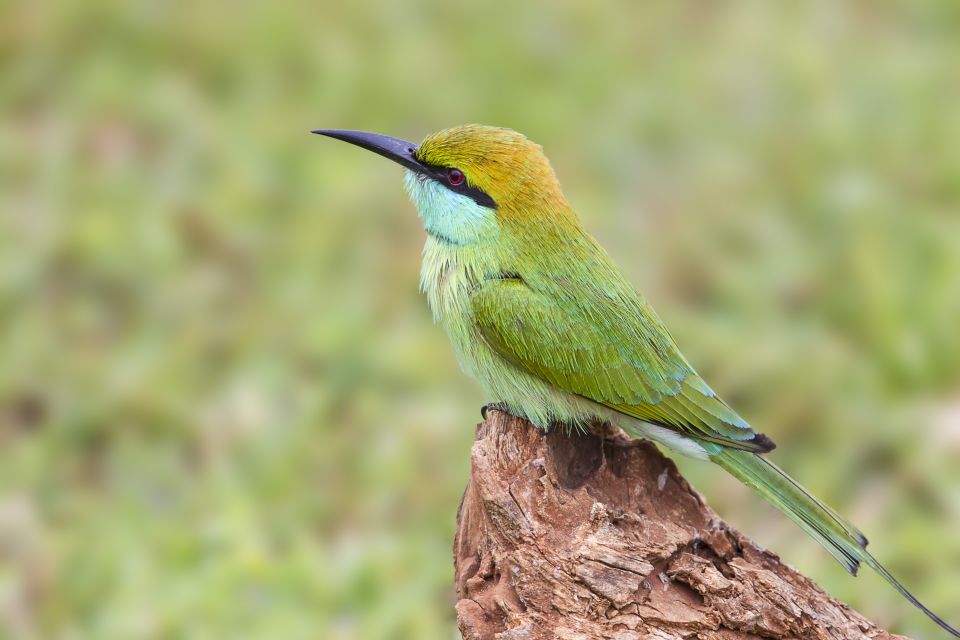
Set out on a thrilling adventure with the Udawalawe National Park Safari & Elephant Transit Home Tour for an unforgettable experience in Sri Lanka. Witness local wildlife in their natural habitat, interact with baby elephants, and explore the vast landscapes of the national park on a 4×4 Jeep safari.
With convenient services and rave reviews, this tour is a must-do for nature enthusiasts and wildlife lovers looking for an exciting and informative experience.
Similar Posts
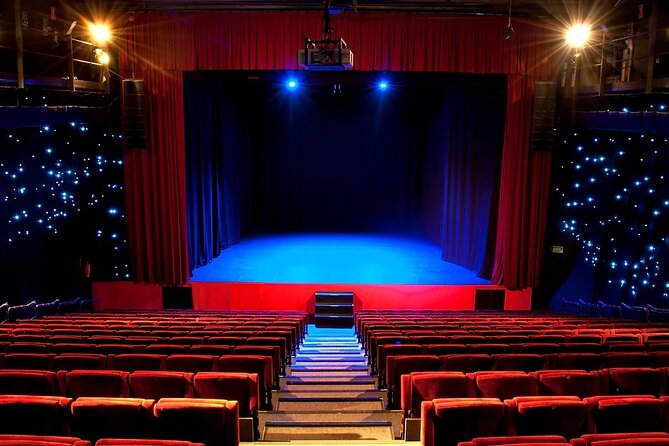
Live Flamenco Show in Seville
In the heart of Seville, where the cobblestone streets echo with centuries of history and passion, a live Flamenco show…
Olous – Guided Snorkelling Excursion to Discover Olous Sunken Ancient City
Prepare to be amazed as you embark on the Olous – Guided Snorkelling Excursion to Discover Olous Sunken Ancient City,…
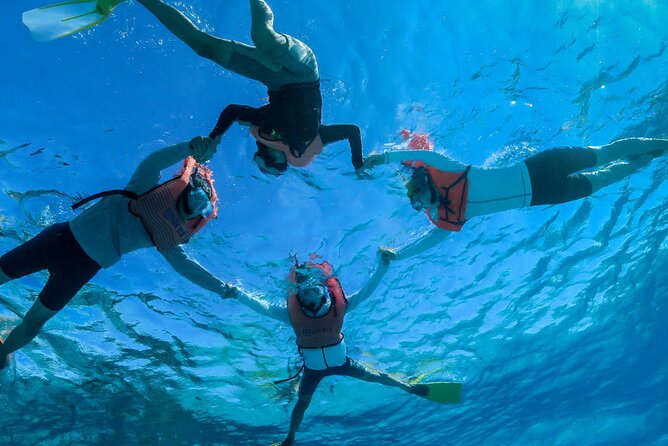
New Best of Tahiti
In the vast ocean of travel possibilities, the ‘New Best of Tahiti’ shines like a beacon, offering a glimpse into…
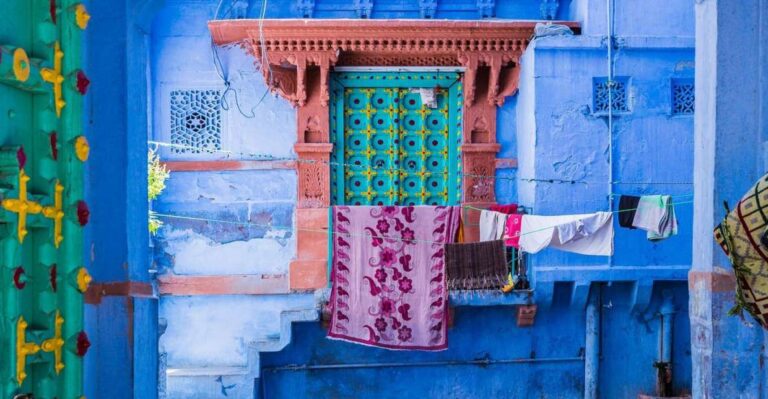
Waking Food Tour In Jodhpur
Set out on a culinary voyage through the flavors of Jodhpur with the Waking Food Tour. As the morning sun…
Private Transfer From Athens to Lavrio Port
Torn between the bustling city of Athens and the serene Lavrio Port, travelers can now seamlessly transition between these contrasting…
Athens: Acropolis Hill & Museum, Zeus Temple, Agora Audio Tours (No Tickets)
Set out on a journey through the storied past of Athens with the unparalleled convenience of audio tours that unveil…
Udawalawa Elephant Orphanage
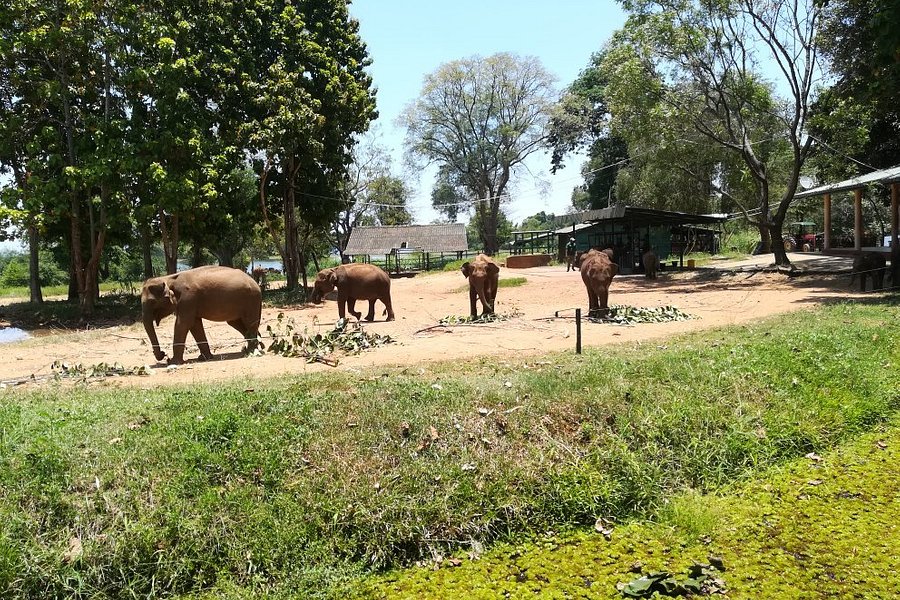
Most Recent: Reviews ordered by most recent publish date in descending order.
Detailed Reviews: Reviews ordered by recency and descriptiveness of user-identified themes such as wait time, length of visit, general tips, and location information.
Udawalawa Elephant Orphanage - All You Need to Know BEFORE You Go (2024)
- Udawalawe National Park Private Safari (From $26.67)
- Personal Driver For Your Two Weeks Round Tour In Sri Lanka (From $1,500.00)
- Two Day Udawalawa National Park Tour (From $239.73)
- Udawalawe safari from Ella and return back to Ella (From $128.21)
- Udawalawe National Park Camping Tour (From $441.03)
- (0.08 mi) Owl's Nest
- (0.08 mi) Delo Lanka Elephant Orphanage View
- (0.08 mi) Water's Edge Udawalawe
- (0.12 mi) Hotel Athgira
- (0.16 mi) The Elephant Next-Door
- (0.09 mi) Restaurant Athgira
- (0.06 mi) Water's Edge Udawalawe
- (0.24 mi) Bath Gedara Restaurant
- (0.87 mi) Hungry Monkey
- (0.64 mi) Ceylon 1850 Authentic Restaurant
- LUXURY SUPER GRAND SUITE
- LUXURY GRAND SUITE
- LUXURY SUITE
- SUPER DELUXE
- DELUXE ROOM
- GYM FITNESS CENTRE
- BANQUET HALL
- RESTAURANTS & BAR
- CONFERENCE HALL
- MINI THEATER
- VIDEO GALLERY
- ELEPHANT-ORPHANAGE
- UDAWALAWE NATIONAL PARK
- UDAWALAWE NATIONAL PARK BIRDS
- NATURE-WILDERNESS
- MADUWANWELA WALAWWA
- UDAWALAWE VILLAGE

“Ath Athuru Sevana”
Travel Time: – 5 minute drive. Description – The Elephant Transit Home, since its inception in 1995, has helped care for dozens of injured, sick, or orphaned baby elephants from all over Sri Lanka. Visitors to the home are able to observe an animated group of around 20 or 30 juvenile and teenage pachyderms, who are fed four times a day. The resident animals are looked after until they are deemed fit enough to be released back into the wild, after which they are closely monitored for investigational purposes, as well as their own safety.

Elephant's Nest Safari Lodge
No 1013,Syphant road,Udawalawa., 70190 Udawalawe, Sri Lanka – Show map

Elephant's Nest Safari Lodge Reserve now
Elephant's Nest Safari Lodge offers accommodations in Udawalawe, 9.5 miles from Udawalawe National Park. This bed and breakfast features a garden. The bed and breakfast provides rooms with air conditioning, free private parking, and free Wifi. At the bed and breakfast, each unit comes with a desk. The bed and breakfast offers certain units with sea views, and all units are equipped with a kettle. At the bed and breakfast, every unit includes a seating area. The nearest airport is Mattala Rajapaksa International Airport, 31 miles from the bed and breakfast.
Distance in property description is calculated using © OpenStreetMap
- Family rooms
- Free parking
- Non-smoking rooms
- Tea/Coffee Maker in All Rooms
Property highlights
Breakfast info.
Free Private Parking Available On Site
Be one of the first to add
Availability
Select dates to see this property's availability and prices
Hosted by Sanath Hewage
Amenities of elephant's nest safari lodge.
- Toilet paper
- Bathtub or shower
- Free toiletries
- Wardrobe or closet
- Dining table
- Electric kettle
- Refrigerator
- Clothes rack
- Dining area
- Sitting area
- Tea/Coffee maker
- Air conditioning
See availability House rules
From 12:00 PM to 6:00 PM
From 8:00 AM to 11:00 AM
Cancellation/ prepayment
Cancellation and prepayment policies vary according to accommodations type. Please enter the dates of your stay and check what conditions apply to your preferred room.
Children & Beds
Child policies
Children of all ages are welcome.
To see correct prices and occupancy info, add the number and ages of children in your group to your search.
Crib and extra bed policies
Cribs and extra beds aren't available at this property.
No age restriction
There's no age requirement for check-in
Pets are not allowed.
FAQs about Elephant's Nest Safari Lodge
How far is elephant's nest safari lodge from the center of udawalawe.
Elephant's Nest Safari Lodge is 1.1 miles from the center of Udawalawe. All distances are measured in straight lines. Actual travel distances may vary.
What type of room can I book at Elephant's Nest Safari Lodge?
What are the check-in and check-out times at elephant's nest safari lodge.
Check-in at Elephant's Nest Safari Lodge is from 12:00 PM, and check-out is until 11:00 AM.
How much does it cost to stay at Elephant's Nest Safari Lodge?
The prices at Elephant's Nest Safari Lodge may vary depending on your stay (e.g. dates, hotel's policy etc.). To see prices, enter your dates.
What is there to do at Elephant's Nest Safari Lodge?
The best of udawalawe.
Most Popular Cities
- Bandarawela

Stay in the know
Error: Please enter a valid email address.
Error: Oops! An error has occurred.
Thanks! We've sent you an email so you can confirm your subscription
Personalized recommendations
We provide personalized recommendations based on your activity on our platform. If you prefer, you can opt out of this option. Opting-out only affects your current device. Adjust this setting to your preference on other devices as well.
Verified reviews from real guests.
We have more than 70 million property reviews, all from real, verified guests .
How does it work?
It starts with a booking.
The only way to leave a review is to first make a booking. That's how we know our reviews come from real guests who have stayed at the property.
Followed by a trip
When guests stay at the property, they check out how quiet the room is, how friendly the staff is, and more.
And finally, a review
After their trip, guests tell us about their stay. We check for naughty words and verify the authenticity of all guest reviews before adding them to our site.
If you booked through us and want to leave a review, please sign in first.
Check-in date
Check-out date
Save big in Udawalawe
Get exclusive Booker deals by email
For a limited time only
Awesome! You're now subscribed
Udawalawe Safari Jeep Service

Udawalawe Safari
Journey into the heart of sri lanka's wildlife wonderland paradise , best-selling, 4 hours tour adventure, 8 hour tour adventure, 6 hour tour adventure, sunrise to sunset: discover udawalawe national park.
Udawalawe National Park, located in the southern part of Sri Lanka, serves as a haven for those passionate about nature and wildlife. Covering more than 30,000 hectares, it’s a protected zone rich in diverse plant and animal life, hosting the famed Sri Lankan elephant, elusive leopards, sloth bears, and various bird species.
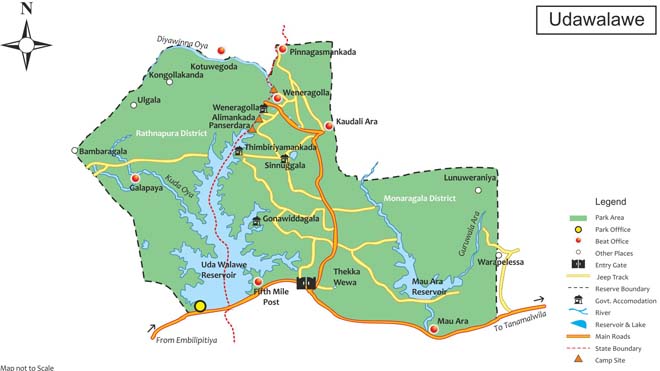
Your Favorite
Travel agency.
- Affordable Prices
- Prioritize Comfort
Tailored Safari Adventures
At Udawalawa Safari Agency, we recognize the individuality of each explorer. Hence, we present a diverse range of safari options designed to match your specific tastes and passions. Whether you are passionate about observing wildlife, dedicated to photography, or in search of serene natural beauty, our seasoned guides are committed to customizing the ideal safari adventure for you.
Meet Our Experienced Guides
Our dedicated team of guides is eager to share their extensive knowledge and enthusiasm for the natural beauty of Udawalawa. Armed with their expertise and commitment, you’ll experience memorable safaris, brimming with exciting sightings and deep insights into the lives of the park’s diverse fauna.
Responsible Tourism and Conservation
At Udawalawa Safari Agency, our dedication lies in promoting eco-friendly tourism and safeguarding Udawalawa’s natural legacy. We adopt sustainable methods and work closely with the community, aiming to preserve the park’s ecosystem while uplifting local populations, ensuring a lasting heritage for coming generations.
Featured Packages
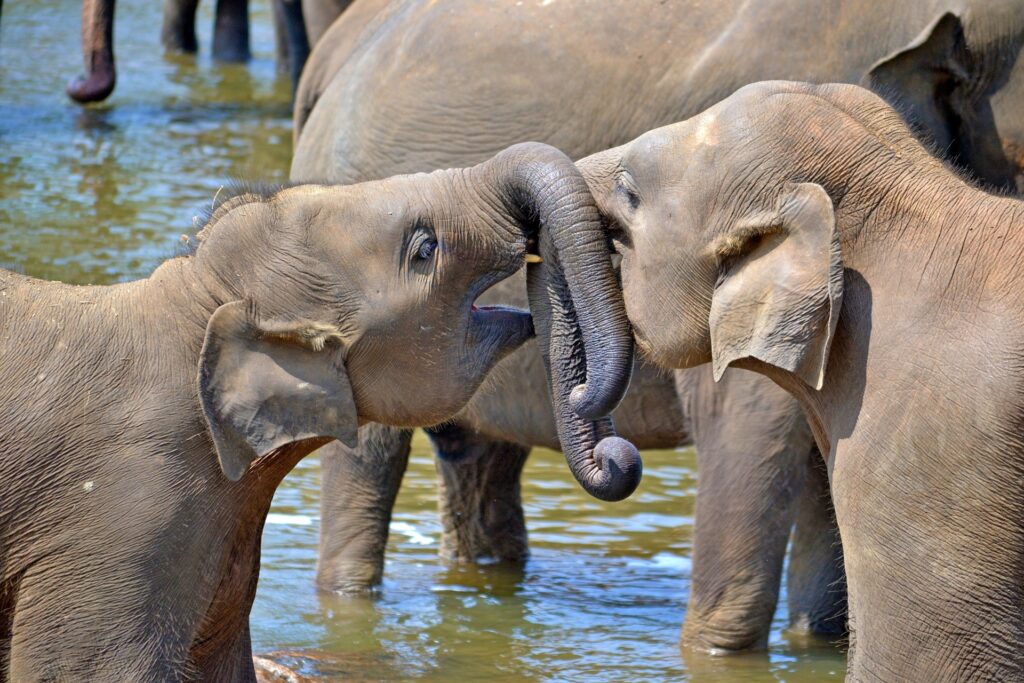
4 Hours Tour
Set off on an enthralling 4-hour journey through Udawalawa with our Safari Tour, covering park entry fees, transfers from your hotel, and free water bottles included
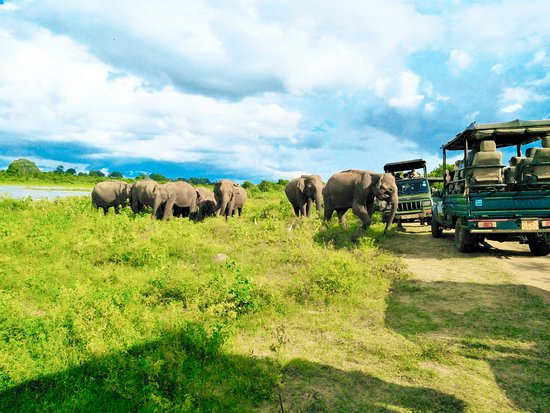
5 Hours Tour
Launch into an exhilarating 5-hour Udawalawa Safari Tour, which includes the cost of park admission, transportation from your hotel, and free water bottles for your convenience.
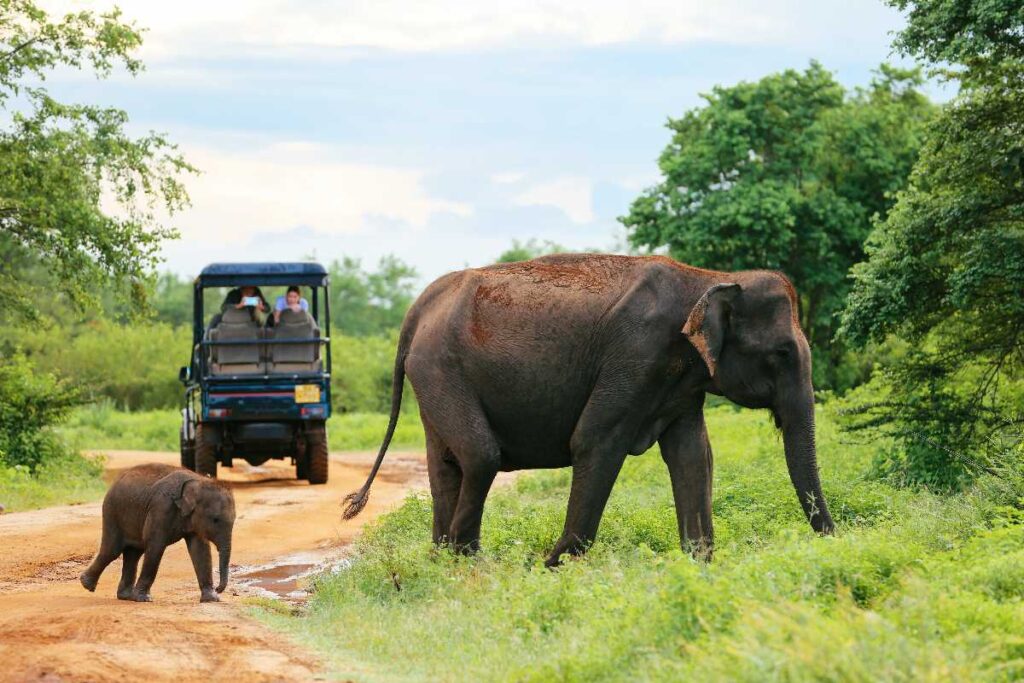
8 Hours Tour
Join our 8-hour Safari Adventure in Udawalawa, which covers park admission, transportation from your accommodation, and the provision of complimentary water, fresh fruits, and snacks.
Join Us in Exploring Udawalawe's Wonders
Don’t miss the chance to witness Udawalawa National Park’s stunning vistas and varied animal life. Secure your safari trip through Udawalawa Safari Agency for an unparalleled exploration experience.
Testimonials
V. I. Lenin
Lessons of the moscow uprising.
Published: Proletary , No. 2, August 29, 1906. Published according to the Proletary text. Source: Lenin Collected Works , Progress Publishers, 1965 , Moscow, Volume 11 , pages 171-178 . Translated: Transcription\Markup: R. Cymbala Public Domain: Lenin Internet Archive (2000). You may freely copy, distribute, display and perform this work; as well as make derivative and commercial works. Please credit “Marxists Internet Archive” as your source. • README
The publication of the book Moscow in December 1905 (Moscow, 1906) could not have been more timely. It is an urgent task of the workers’ party to assimilate the lessons of the December uprising. Unfortunately, this book is like a barrel of honey spoilt by a spoonful of tar: most interesting material—despite its incompleteness—and incredibly slovenly, incredibly trite conclusions. We shall deal with these conclusions on another occasion [1] ; at present we shall turn our attention to the burning political question of the day, to the lessons of the Moscow uprising.
The principal forms of the December movement in Moscow were the peaceful strike and demonstrations, and these were the only forms of struggle in which the vast majority of the workers took an active part. Yet, the December action in Moscow vividly demonstrated that the general strike, as an independent and predominant form of struggle, is out of date, that the movement is breaking out of these narrow bounds with elemental and irresistible force and giving rise to the highest form of struggle—an uprising.
In calling the strike, all the revolutionary parties, all the Moscow unions recognised and even intuitively felt that it must inevitably grow into an uprising. On December 6 the Soviet of Workers’ Deputies resolved to “strive to transform the strike into an armed uprising”. As a matter of fact, however, none of the organisations were prepared for this. Even the Joint Council of Volunteer Fighting Squads [2] spoke ( on December 9 !) of an uprising as of something remote, and it is quite evident that it had no hand in or control of the street fighting that took place. The organisations failed to keep pace with the growth and range of the movement.
The strike was growing into an uprising, primarily as a result of the pressure of the objective conditions created after October. A general strike could no longer take the government unawares: it had already organised the forces of counter-revolution, and they were ready for military action. The whole course of the Russian revolution after October, and the sequence of events in Moscow in the December days, strikingly confirmed one of Marx’s profound propositions: revolution progresses by giving rise to a strong and united counter-revolution, i.e., it compels the enemy to resort to more and more extreme measures of defence and in this way devises ever more powerful means of attack. [3]
December 7 and 8: a peaceful strike, peaceful mass demonstrations. Evening of the 8th: the siege of the Aquarium. [4] The morning of the 9th: the crowd in Strastnaya Square is attacked by the dragoons. Evening: the Fiedler building [5] is raided. Temper rises. The unorganised street crowds, quite spontaneously and hesitatingly, set up the first barricades.
The 10th: artillery fire is opened on the barricades and the crowds in the streets. Barricades are set up more deliberately, and no longer in isolated cases, but on a really mass scale. The whole population is in the streets; all the main centres of the city are covered by a network of barricades. For several days the volunteer fighting units wage a stubborn guerrilla battle against the troops, which exhausts the troops and compels Dubasov [6] to beg for reinforcements. Only on December 15 did the superiority of the government forces become complete, and on December 17 the Semyonovsky Regiment [7] crushed Presnya District, the last stronghold of the uprising.
From a strike and demonstrations to isolated barricades. From isolated barricades to the mass erection of barricades and street fighting against the troops. Over the heads of the organisations, the mass proletarian struggle developed from a strike to an uprising. This is the greatest historic gain the Russian revolution achieved in December 1905; and like all preceding gains it was purchased at the price of enormous sacrifices. The movement was raised from a general political strike to a higher stage. It compelled the reaction to go to the limit in its resistance, and so brought vastly nearer the moment when the revolution will also go to the limit in applying the means of attack. The reaction cannot go further than the shelling of barricades, buildings and crowds. But the revolution can go very much further than the Moscow volunteer fighting units, it can go very, very much further in breadth and depth. And the revolution has advanced far since December. The base of the revolutionary crisis has become immeasurably broader—the blade must now be sharpened to a keener edge.
The proletariat sensed sooner than its leaders the change in the objective conditions of the struggle and the need for a transition from the strike to an uprising. As is always the case, practice marched ahead of theory. A peaceful strike and demonstrations immediately ceased to satisfy the workers; they asked: What is to be done next? And they demanded more resolute action. The instructions to set up barricades reached the districts exceedingly late, when barricades were already being erected in the centre of the city. The workers set to work in large numbers, but even this did not satisfy them ; they wanted to know: what is to be done next?— they demanded active measures. In December, we, the leaders of the Social-Democratic proletariat, were like a commander-in-chief who has deployed his troops in such an absurd way that most of them took no active part in the battle. The masses of the workers demanded, but failed to receive, instructions for resolute mass action.
Thus, nothing could be more short-sighted than Plekhanov’s view, seized upon by all the opportunists, that the strike was untimely and should not have been started, and that “they should not have taken to arms”. On the contrary, we should have taken to arms more resolutely, energetically and aggressively; we should have explained to the masses that it was impossible to confine things to a peaceful strike and that a fearless and relentless armed fight was necessary. And now we must at last openly and publicly admit that political strikes are inadequate; we must carry on the widest agitation among the masses in favour of an armed uprising and make no attempt to obscure this question by talk about “preliminary stages”, or to befog it in any way. We would be deceiving both ourselves and the people if we concealed from the masses the necessity of a desperate, bloody war of extermination, as the immediate task of the coming revolutionary action.
Such is the first lesson of the December events. Another lesson concerns the character of the uprising, the methods by which it is conducted, and the conditions which lead to the troops coming over to the side of the people. An extremely biased view on this latter point prevails in the Right wing of our Party. It is alleged that there is no possibility of fighting modern troops; the troops must become revolutionary. Of course, unless the revolution assumes a mass character and affects the troops, there can be no question of serious struggle. That we must work among the troops goes without saying. But we must not imagine that they will come over to our side at one stroke, as a result of persuasion or their own convictions. The Moscow uprising clearly demonstrated how stereotyped and lifeless this view is. As a matter of fact, the wavering of the troops, which is inevitable in every truly popular movement, leads to a real fight for the troops whenever the revolutionary struggle be comes acute. The Moscow uprising was precisely an example of the desperate, frantic struggle for the troops that takes place between the reaction and the revolution. Dubasov himself declared that of the fifteen thousand men of the Moscow garrison, only five thousand were reliable. The government restrained the waverers by the most diverse and desperate measures: they appealed to them, flattered them, bribed them, presented them with watches, money, etc.; they doped them with vodka, they lied to them, threatened them, confined them to barracks and disarmed them, and those who were suspected of being least reliable were removed by treachery and violence. And we must have the courage to confess, openly and unreservedly, that in this respect we lagged be hind the government. We failed to utilise the forces at our disposal for such an active, bold, resourceful and aggressive fight for the wavering troops as that which the government waged and won. We have carried on work in the army and we will redouble our efforts in the future ideologically to “win over” the troops. But we shall prove to be miserable pedants if we forget that at a time of uprising there must also be a physical struggle for the troops.
In the December days, the Moscow proletariat taught us magnificent lessons in ideologically “winning over” the troops, as, for example, on December 8 in Strastnaya Square, when the crowd surrounded the Cossacks, mingled and fraternised with them, and persuaded them to turn back. Or on December 10, in Presnya District, when two working girls, carrying a red flag in a crowd of 10,000 people, rushed out to meet the Cossacks crying: “Kill us! We will not surrender the flag alive!” And the Cossacks were disconcerted and galloped away, amidst the shouts from the crowd: “Hurrah for the Cossacks!” These examples of courage and heroism should be impressed forever on the mind of the proletariat.
But here are examples of how we lagged behind Dubasov. On December 9, soldiers were marching down Bolshaya Serpukhovskaya Street singing the Marseillaise , on their way to join the insurgents. The workers sent delegates to meet them. Malakhov himself galloped at breakneck speed towards them. The workers were too late, Malakhov reached them first. He delivered a passionate speech, caused the soldiers to waver, surrounded them with dragoons, marched them off to barracks and locked them in. Malakhov reached the soldiers in time and we did not, although within two days 150,000 people had risen at our call, and these could and should have organised the patrolling of the streets. Malakhov surrounded the soldiers with dragoons, whereas we failed to surround the Malakhovs with bomb-throwers. We could and should have done this; and long ago the Social-Democratic press (the old Iskra [8] ) pointed out that ruthless extermination of civil and military chiefs was our duty during an uprising. What took place in Bolshaya Serpukhovskaya Street was apparently repeated in its main features in front of the Nesvizhskiye Barracks and the Krutitskiye Barracks, and also when the workers attempted to “withdraw” the Ekaterinoslav Regiment, and when delegates were sent to the sappers in Alexandrov, and when the Rostov artillery on its way to Moscow was turned back, and when the sappers were disarmed in Kolomna, and so on. During the uprising we proved unequal to our task in the fight for the wavering troops.
The December events confirmed another of Marx’s profound propositions, which the opportunists have forgotten, namely, that insurrection is an art and that the principal rule of this art is the waging of a desperately bold and irrevocably determined offensive . [9] We have not sufficiently assimilated this truth. We ourselves have not sufficiently learned, nor have we taught the masses, this art, this rule to attack at all costs. We must make up for this omission with all our energy. It is not enough to take sides on the question of political slogans; it is also necessary to take sides on the question of an armed uprising. Those who are opposed to it, those who do not prepare for it, must be ruthlessly dismissed from the ranks of the supporters of the revolution, sent packing to its enemies, to the traitors or cowards; for the day is approaching when the force of events and the conditions of the struggle will compel us to distinguish between enemies and friends according to this principle. It is not passivity that we should preach, not mere “waiting” until the troops “come over”. No! We must proclaim from the house tops the need for a bold offensive and armed attack, the necessity at such times of exterminating the persons in command of the enemy, and of a most energetic fight for the wavering troops.
The third great lesson taught by Moscow concerns the tactics and organisation of the forces for an uprising. Military tactics depend on the level of military technique. This plain truth Engels demonstrated and brought home to all Marxists. [10] Military technique today is not what it was in the middle of the nineteenth century. It would be folly to contend against artillery in crowds and defend barricades with revolvers. Kautsky was right when he wrote that it is high time now, after Moscow, to review Engels’s conclusions, and that Moscow had inaugurated “new barricade tactics ”. [11] These tactics are the tactics of guerrilla warfare. The organisation required for such tactics is that of mobile and exceedingly small units, units of ten, three or even two persons. We often meet Social-Democrats now who scoff whenever units of five or three are mentioned. But scoffing is only a cheap way of ignoring the new question of tactics and organisation raised by street fighting under the conditions imposed by modern military technique. Study carefully the story of the Moscow uprising, gentlemen, and you will understand what connection exists between “units of five” and the question of “new barricade tactics”.
Moscow advanced these tactics, but failed to develop them far enough, to apply them to any considerable extent, to a really mass extent. There were too few volunteer fighting squads, the slogan of bold attack was not issued to the masses of the workers and they did not apply it; the guerrilla detachments were too uniform in character, their arms and methods were inadequate, their ability to lead the crowd was almost undeveloped. We must make up for all this and we shall do so by learning from the experience of Moscow, by spreading this experience among the masses and by stimulating their creative efforts to develop it still further. And the guerrilla warfare and mass terror that have been taking place throughout Russia practically without a break since December, will undoubtedly help the masses to learn the correct tactics of an uprising. Social-Democracy must recognise this mass terror and incorporate it into its tactics, organising and controlling it of course, subordinating it to the interests and conditions of the working-class movement and the general revolutionary struggle, while eliminating and ruthlessly lopping off the “hooligan” perversion of this guerrilla warfare which was so splendidly and ruthlessly dealt with by our Moscow comrades during the uprising and by the Letts during the days of the famous Lettish republics. [12]
There have been new advances in military technique in the very recent period. The Japanese War produced the hand grenade. The small-arms factories have placed automatic rifles on the market. Both these weapons are already being successfully used in the Russian revolution, but to a degree that is far from adequate. We can and must take advantage of improvements in technique, teach the workers’ detachments to make bombs in large quantities, help them and our fighting squads to obtain supplies of explosives, fuses and automatic rifles. If the mass of the workers takes part in uprisings in the towns, if mass attacks are launched on the enemy, if a determined and skilful fight is waged for the troops, who after the Duma, after Sveaborg and Kronstadt are wavering more than ever—and if we ensure participation of the rural areas in the general struggle—victory will be ours in the next all-Russian armed uprising.
Let us, then, develop our work more extensively and set our tasks more boldly, while mastering the lessons of the great days of the Russian revolution. The basis of our work is a correct estimate of class interests and of the requirements of the nation’s development at the present juncture. We are rallying, and shall continue to rally, an increasing section of the proletariat, the peasantry and the army under the slogan of overthrowing the tsarist regime and convening a constituent assembly by a revolutionary government. As hitherto, the basis and chief content of our work is to develop the political understanding of the masses. But let us not forget that, in addition to this general, constant and fundamental task, times like the present in Russia impose other, particular and special tasks. Let us not become pedants and philistines, let us not evade these special tasks of the moment, these special tasks of the given forms of struggle, by meaningless references to our permanent duties, which remain unchanged at all times and in all circumstances.
Let us remember that a great mass struggle is approaching. It will be an armed uprising. It must, as far as possible, be simultaneous. The masses must know that they are entering upon an armed, bloody and desperate struggle. Contempt for death must become widespread among them and will ensure victory. The onslaught on the enemy must be pressed with the greatest vigour; attack, not defence, must be the slogan of the masses; the ruthless extermination of the enemy will be their task; the organisation of the struggle will become mobile and flexible; the wavering elements among the troops will be drawn into active participation. And in this momentous struggle, the party of the class-conscious proletariat must discharge its duty to the full.
[1] See pp. 189-93 of this volume.— Ed .
[2] The Joint Council of Volunteer Fighting Squads was formed in Moscow at the end of October 1905. It was created at the outset for the practical struggle against the Black Hundreds but it was kept in existence during the December uprising. It included representatives of the volunteer squads of the Moscow Committee of the R.S.D.L.P., the Moscow group of Social-Democrats, the Moscow committee of the Socialist-Revolutionary Party, and also of the volunteer squads bearing the names “Free District”, “University”, “Typographical” and “Caucasian”. The S.-R.-Menshevik majority of the Joint Council was responsible for disorganising its activity; during the days of the December armed uprising it lagged behind the revolutionary events and was incapable of acting as the operational general staff of the uprising.
[3] Lenin cites the proposition put forward by Marx in his Class Struggles in France, 1848 to 1860 (see Marx and Engels, Selected Works , Vol. 1, Moscow, 1958, p. 139).
[4] During the evening of December 8 (21), 1905, soldiers and police cordoned off the “Aquarium” garden (at the Sadovo-Triumfalnaya Square) where a crowded meeting was being held in the theatre. Thanks to the selfless efforts of the workers’ volunteer squads guarding the meeting, bloodshed was avoided; those who possessed arms were enabled to escape through a broken fence, but the other participants in the meeting who went out through the gate were searched, beaten up and in many cases arrested.
[5] The Fiedler school building (at Chistiye Prudy) was regularly used for party meetings. During the evening of December 9 (22), 1905, when a meeting was being held there, it was surrounded by troops. The participants in the meeting, mostly members of volunteer squads, refused to surrender and barricaded themselves in the building. The troops opened fire using artillery and machine-guns. During the destruction of the building more than 30 persons were killed or wounded; 120 were arrested.
[6] Dubasov, F. V. (1845-1912)—Governor-General of Moscow in 1905-06, who directed the suppression of the armed uprising of the Moscow workers in December 1905.
[7] Semenovtsy —soldiers of the Semenovsky Guards Regiment who were sent from St. Petersburg to Moscow in December 1905 to suppress the uprising of the Moscow workers.
[8] Iskra ( The Spark )—the first all-Russian illegal Marxist revolutionary newspaper. It was founded by Lenin in 1900, and it played a decisive part in building the Marxist revolutionary party of the Russian working class. After the Party, at the Second Congress of the R.S.D.L.P. in 1903, had split into a revolutionary (Bolshevik) wing and an opportunist (Menshevik) wing, Iskra passed into the hands of the Mensheviks and became known as the “ new ” Iskra in contrast to Lenin’s old Iskra .
[9] This refers to Engels’s Revolution and Counter-Revolution in Germany, 1848 (New York Daily Tribune , 18.IX. 1852) which was published in 1851-52 as a series of articles in the newspaper New York Daily Tribune over the signature of Marx, who originally intended to write them but, being preoccupied with his economic researches, handed over the task to Engels. In writing the articles Engels constantly consulted Marx, who also read them through, before they were sent to the press. Not until 1913, as a result of the publication of the correspondence between Marx and Engels, did it become known that the work had been written by Engels.
[10] Engels expounded this proposition on a number of occasions in his works, notably in Anti-Dühring .
[11] Lenin deals with this in more detail in his work “The Russian Revolution and the Tasks of the Proletariat” (see present edition, Vol. 10, pp. 141-42).
[12] In December 1905 various Lettish towns were seized by armed detachments of insurgent workers, agricultural labourers and peasants. Guerrilla war against the tsarist troops began. In January 1906 the uprising in Latvia was suppressed by punitive expeditions under tsarist generals.

IMAGES
VIDEO
COMMENTS
An Udawalawe Safari attracts many tourists in Sri Lanka as, from here, you can take enter their National Park which is nearby. The park is home to a massive herd of elephants and you can come up close to these majestic creatures. As well as elephants, there are crocodiles, monkeys, peacocks, and a multitude of birds and deer if that's your thing.
Udawalawe National Park Entrance Fees + Safari Prices. The entrance fee to Udawalawe National Park is $15 USD per foreign adult or equivalent in Sri Lanka Rupees. For locals, the price is Rs. 60.00. Children are $8 USD. You will need to book a jeep to take you on a safari through Udawalawe National Park.
The national park was established in 1972 and covers an area of 30,000 hectares. It was created to provide a sanctuary for the wild animals displaced by the construction of the Udawalawe Reservoir and dam. Elephants that we spotted during our Udawalawe safari. The elephants we spotted before even entering Udawalawe National Park.
Here are the packages for safari drives to Udawalawe national park that we received from our hotel. Safari sessions: Morning 6.00-9.45PM. Evening 2.15-6.00PM. Private safari (only you): Jeep service for 2 pax = 4000 LKR. Entry tickets for 2 pax = 7200 LKR. Total cost for safari = 11200 LKR.
As with most things in Sri Lanka, visiting Udawalawe National Park can be done without breaking the bank, especially when compared to African safaris. Before visiting, you do need to know that there are generally two fees that need to be paid when taking a safari. PARK ENTRY FEES. First, there are the park entry fees.
1. You WILL See Elephants in Udawalawe National Park. An elephant walks away from us in Udawalawe National Park, Sri Lanka'. On the lookout for elephants! If you came to see elephants, then you're in the right place! On a safari in Udawalawe National Park, you will undoubtedly see elephants.
Here are my top recommendations for the best Udawalawe safaris to get the best sightings. Banner Title. 3 Hour Udawalawe Private Safari. The very best out of all of the Udawalawe safaris has got to be the Udawalawe National Park Private Safari including Jeep Tickets. You really do get the greatest experience by having your own driver, who can ...
Udawalawe National Park Safari: Overview . Encompassing over 30,000 hectares of protected land in the heart of Sri Lanka, Udawalawe National Park was established in 1972 to provide a sustainable sanctuary to the large herd of elephants in the area.. As a result, Udawalawe has become one of Sri Lanka's top safari destinations. Plants and animals flourish in Udawalawe and it is the ideal ...
Here's what you need to know before your elephant safari in Udawalawe National Park! Why you should visit Udawalawe National Park. ... Cost of going on an Udawalawe safari and tour options. I first visited Udawalawe National Park nearly a decade ago and have gone back several times since. The rate for a 3 hour safari way back when was 4500 ...
Our costs for arranging a safari at Udawalawe were: Private jeep with driver/guide - around LKR 4000 for half day (3-4 hours). Park entrance fees of $25 per adult and $15 per child (under 6 are free) plus a LKR 250 jeep charge, all plus 15% tax. If you are staying overnight in the park, there is a $50 charge per adult and $30 per child.
Along the way, learn how the park was created in the 1970s to provide a sanctuary for wild animals displaced by the construction of the Udawalawe Reservoir on the Walawe River. Upon arrival to the park, go for a safari drive by Jeep and look for the thriving elephant population in its natural habitat.
Embark on a captivating wildlife adventure at Elephant Trail in Udawalawa, Sri Lanka. Immerse yourself in the natural beauty of the surroundings as you witness majestic elephants in their natural habitat. Our expert guides will lead you on thrilling safari expeditions, allowing you to observe a diverse range of wildlife up close. Unwind in ...
Udawalawe National Park is especially renowned for its elephant population, with over 500 elephants inhabiting the park. This makes it one of the best places in Sri Lanka to witness elephants in their natural environment. Overall, an Elephant Safari at Udawalawe National Park is an unforgettable adventure that offers a unique and up-close ...
Explore the Udawalawe National Park on an exhilarating 4×4 Jeep safari to discover a diverse range of wildlife species in their natural habitat. The safari tour includes a unique opportunity to interact with baby elephants at the Elephant Transit Home, where you can witness these gentle giants up close. As you traverse through the park, keep ...
The tour itinerary for the Udawalawe Safari with Elephant Transit Home Visit begins with a 2-hour drive from Ella to the Elephant Transit Home. Once at the Transit Home, visitors will have the opportunity to engage in elephant feeding, spending 30 minutes with the adorable baby elephants. After the feeding session, the tour continues to ...
According to Tripadvisor travelers, these are the best ways to experience Udawalawa Elephant Orphanage: Udawalawe National Park Private Safari (From $26.67) Personal Driver For Your Two Weeks Round Tour In Sri Lanka (From $1,500.00) Two Day Udawalawa National Park Tour (From $239.73) Udawalawe safari from Ella and return back to Ella (From $128.21)
Travel Time: - 5 minute drive. Description - The Elephant Transit Home, since its inception in 1995, has helped care for dozens of injured, sick, or orphaned baby elephants from all over Sri Lanka. Visitors to the home are able to observe an animated group of around 20 or 30 juvenile and teenage pachyderms, who are fed four times a day.
Elephant's Nest Safari Lodge. No 1013,Syphant road,Udawalawa., 70190 Udawalawe, Sri Lanka - Show map. Elephant's Nest Safari Lodge offers accommodations in Udawalawe, 9.5 miles from Udawalawe National Park. This bed and breakfast features a garden. The bed and breakfast provides rooms with air conditioning, free private parking, and free Wifi.
Udawalawe Safari . Journey into the Heart of Sri Lanka's Wildlife Wonderland Paradise Book Your Safari Now. Best-selling. 4 Hours Tour Adventure View tour ...
(4 Sep 2003) 1. Exterior new elephant house, Moscow zoo, with elephants in the foreground 2. Elephants3. Moscow Mayor Yuri Luzhkov and other officials speaki...
The publication of the book Moscow in December 1905 (Moscow, 1906) could not have been more timely. It is an urgent task of the workers' party to assimilate the lessons of the December uprising. Unfortunately, this book is like a barrel of honey spoilt by a spoonful of tar: most interesting material—despite its incompleteness—and ...
In 1938, it was granted town status. [citation needed]Administrative and municipal status. Within the framework of administrative divisions, it is incorporated as Elektrostal City Under Oblast Jurisdiction—an administrative unit with the status equal to that of the districts. As a municipal division, Elektrostal City Under Oblast Jurisdiction is incorporated as Elektrostal Urban Okrug.
#Sancharam #Siberia #SafariTV #Santhosh_George_Kulangara #Lal_JoseStay Tuned : https://www.safaritvchannel.com Enjoy & Stay Connected With Us !!---...